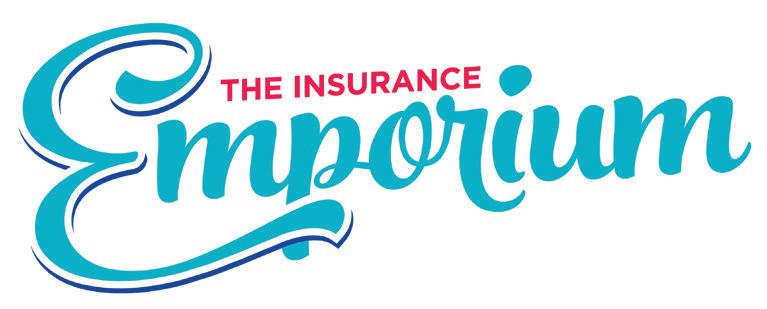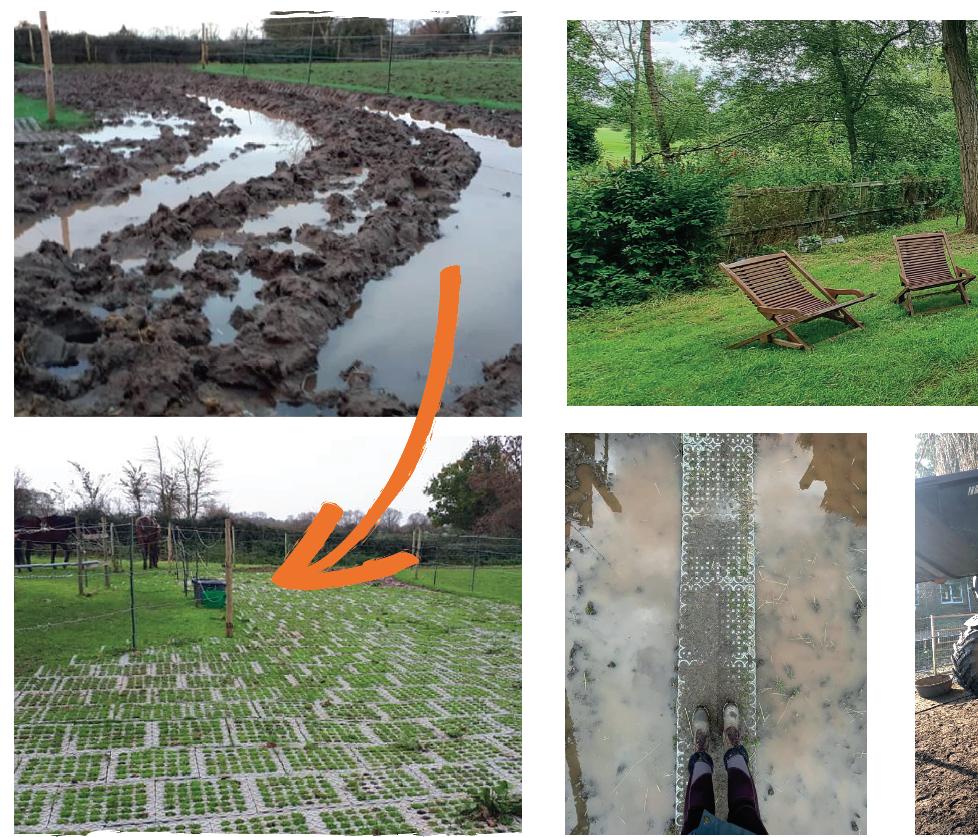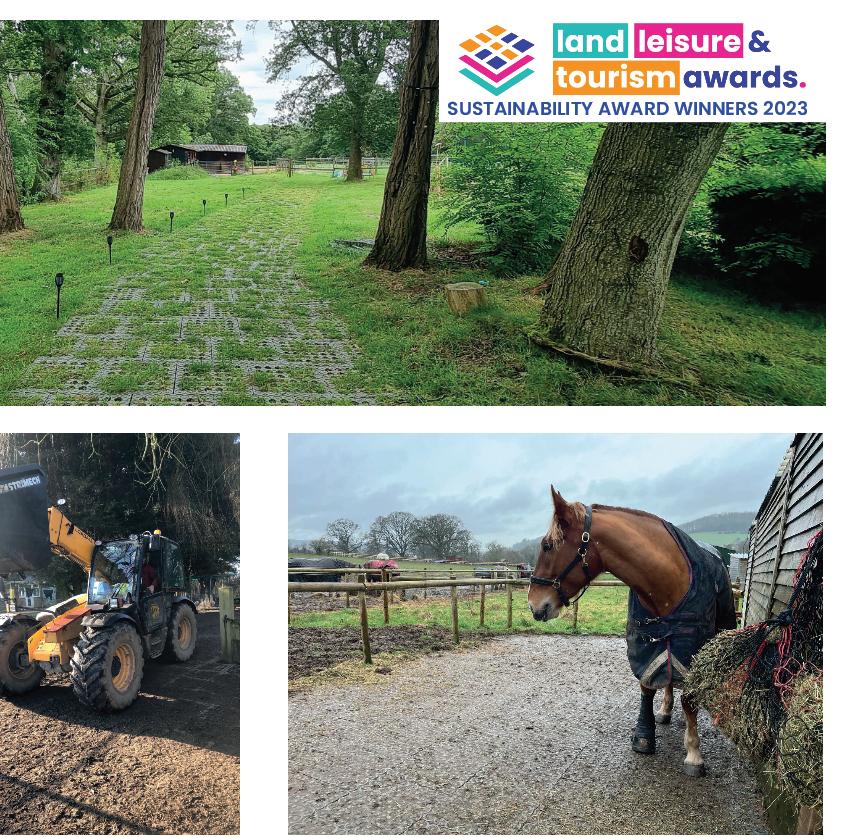A Walk on the Wild Side
A journey through our fabulous horsey heritage Footloose Understanding arena surfaces and the impacts they have on your horse
Christmas Gifts
Find the perfect gift with our ultimate giving guide for equestrians




A journey through our fabulous horsey heritage Footloose Understanding arena surfaces and the impacts they have on your horse
Find the perfect gift with our ultimate giving guide for equestrians




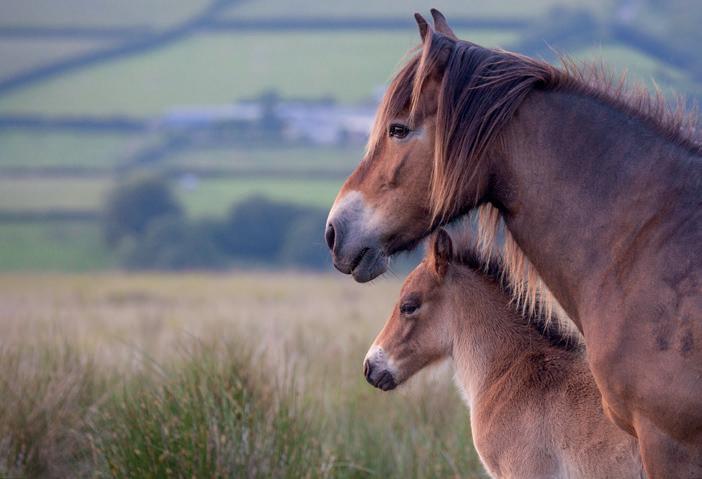
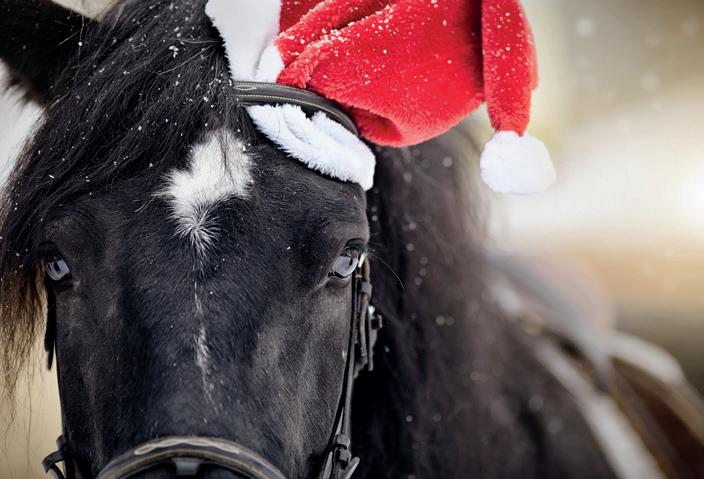

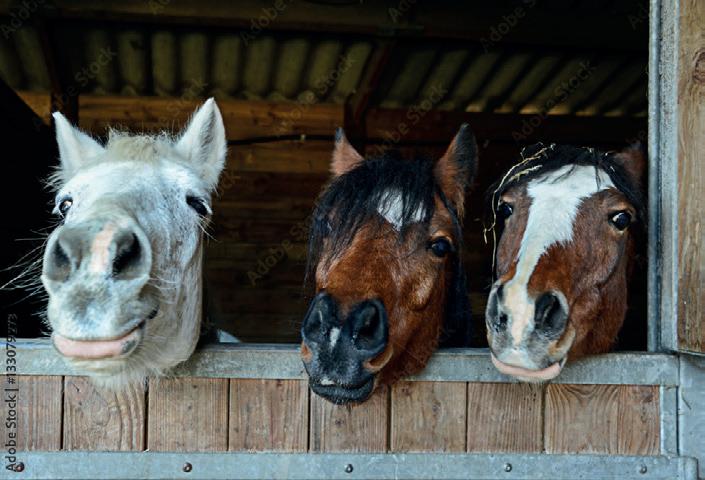
and welcome to the enchanting autumn issue of Your Horse & Country Magazine!
With a colourful tapestry of equine delights, we are thrilled to present a magazine that celebrates the beauty and majesty of horses and the serene countryside they call home.
In this edition, on page 6, we embark on a delightful journey as we take a “Walk on the Wild Side,” delving into the captivating world of native equine breeds, each with its own unique charm and history.
Turn to pages 70 and 78 for our exclusive Feed and Bedding features, where we provide you with top-notch tips on selecting the best feed and bedding options available on the market to keep your equine companion in optimal health and comfort. From grains to supplements, we cover it all!
Curious about how the type of arena surface can affect your horse’s performance and health? We hear from the Institute of Registered Veterinary & Animal Physiotherapists (page 106) who discuss the importance of choosing the right footing for your equine athlete and provide valuable insights on how to maintain a safe and suitable environment for training and competition.
From the rustling leaves of autumn to the cozy warmth of the barn, this issue is brimming with exciting features that promise to spark your passion for all things equine. So, sit back, relax, and allow yourself to be whisked away into the enchanting world of horses and country living. Enjoy the ride!
Taking a look at the English Country Garden in Autumn
London International Horse Show
We take a look at what this year’s christmas show is all about.
IRVAP give us the lowdown on arena surface types and how they can effect your equine’s performance.
From grains to supliments, we work out what’s available to keep your horse healthy

Assistant Publishing Co-ordinator
Lorraine Miller
With special thanks to Kathy Carter, Redwings Horse Sanctuary, Equine Synergy, Jon William Stables, London International Horse Show, Institute of Registered Veterinary & Animal Physiotherapists, Jackson Stops Properties, Richard Harrison Properties and Adobe Stock Images
Whilst every care has been taken in compiling this publication YOUR HORSE & COUNTRY
any
of the Editor/Publisher.






A journey through our fabulous horsey heritage with KATHY CARTER
The UK is home to some of the most remarkable equestrian breeds in the world. These diverse breeds have been integral to British culture, agriculture and sport over the centuries. According to the Rare Breeds Survival Trust, the UK has 14 native horse and pony breeds; each has a story deeply rooted in the regions they hail from, as we explore here. Preserving these breeds is essential for honouring their historical and cultural significance.
ORIGIN: Shetland Islands, Scotland Visit: shetlandponystudbooksociety.co.uk
The Shetland Pony is integral to many people’s earliest riding memories – most of us who learned to ride as small children will remember the unpredictability of a cheeky Shetland dragging its lead-rein handler into a tasty bush. Hailing from the rugged Shetland Islands, it is believed the Shetland first originated from Southern Europe, and migrated via ice fields, with later introduction of a type of pony brought to the islands by the Celtic people, according to the Shetland Pony Society. One of the smallest, yet strongest native breeds, Shetlands have thick, weatherresistant coats and were historically used for carrying peat, seaweed and later, coal. Today, there are two types; the heavierboned draught animal, used for driving, and the lighter, free-moving pony with high tail carriage, used for riding.
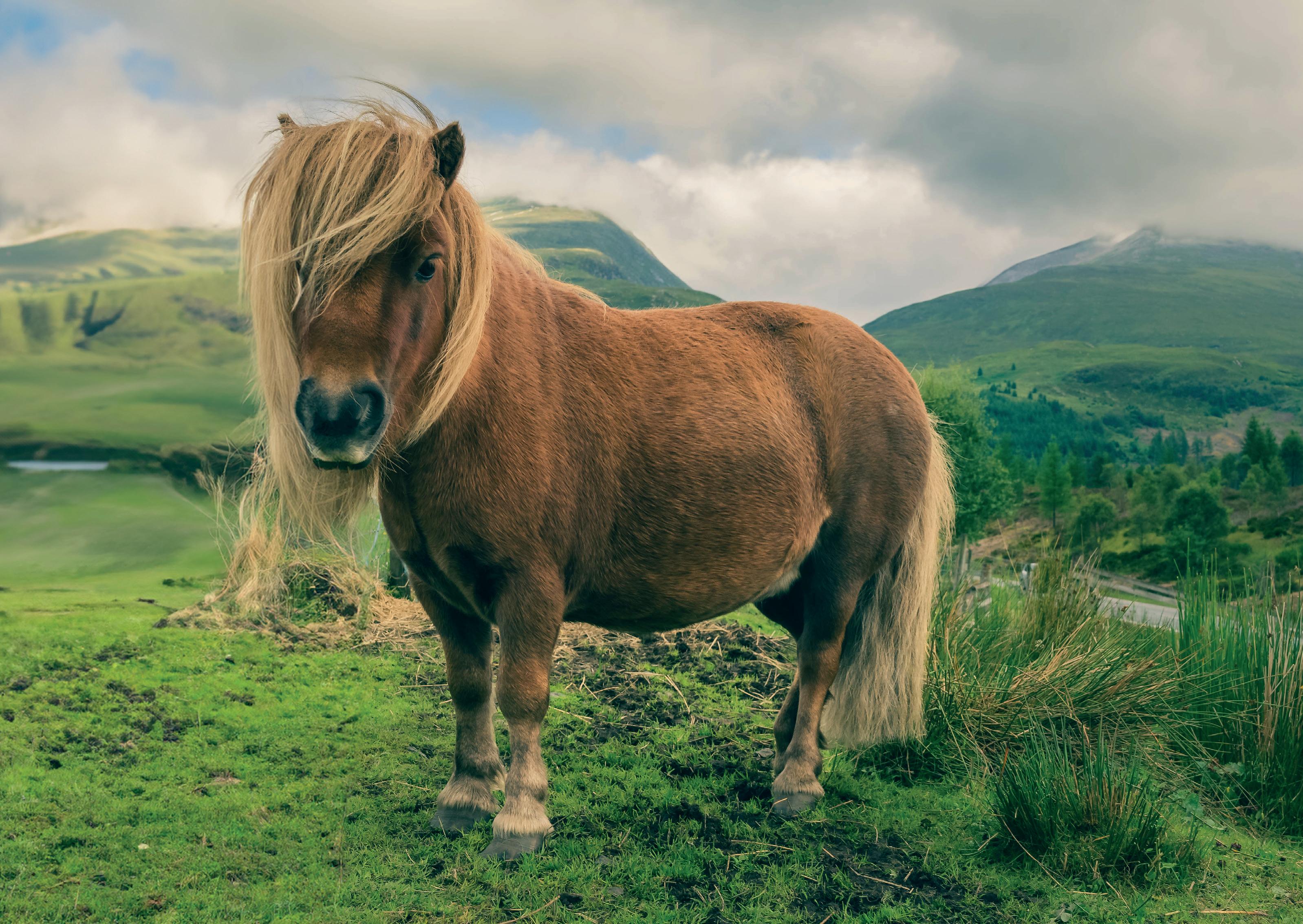
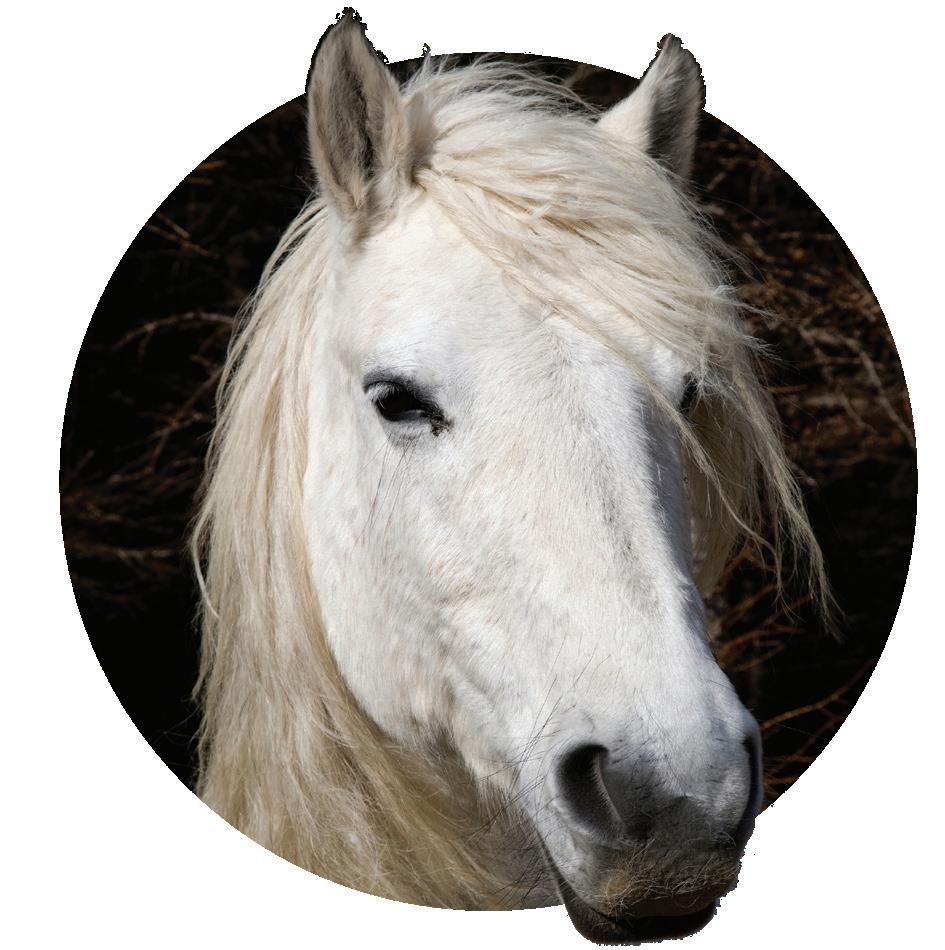
ORIGIN: Scottish Highlands and Islands Visit: highlandponysociety.com
The Highland Pony, native to the Scottish Highlands, is one of the largest of the mountain and moorland pony breeds. These ponies are known for their strength, endurance and gentle temperament, and have been used for centuries as working ponies, capable of carrying heavy loads over rough terrain. It is thought the traditional Eriskay pony
was crossed with a heavy farm breed, to create the stronger and larger ‘Highland’ pony. The winter coat consists of a layer of strong, badger-like hair over a soft, dense undercoat, which enables this breed of pony to live out in all weathers; this coat is shed in the spring to reveal a smooth summer coat, according to the Highland Pony Society. The Highland is commonly used in farming and trekking.


ORIGIN: Exmoor, Southwest England Visit: exmoorponysociety.com
The Exmoor Pony is one of the oldest and purest breeds of British pony; the first written records of ponies on Exmoor are within the Doomsday Book, according to the Exmoor Pony Society. Originating from Exmoor in Somerset and Devon, the Exmoor pony was used by hill farmers to undertake all kinds of work, from being ridden for shepherding, to being used in harness for ploughing and harrowing,
and taking families to market. These ponies have a distinctive appearance, with their mealy-coloured muzzle and eyes, and a dense, waterproof coat; they are known for
their hardiness. The breed was reportedly almost destroyed in the mid 20th century, with only about 50 ponies left on the moor at the end of WW2. However, preservation work is continuing apace with privately owned herds, and those curated by the Exmoor National Park Authority.
ORIGIN: Dartmoor, Southwest England Visit: dartmoorponysociety.com
Native to Dartmoor in Devon, the Dartmoor Pony is a small yet sturdy breed. These ponies are known for their gentle disposition. Historically, they were used in tin mines and for agricultural work, and the ponies have been recorded living on the wild and inhospitable moors of Dartmoor since the Middle Ages, according to the Dartmoor Pony Society. There are many ponies living on Dartmoor, of all sizes and colours, most of unknown breeding. But the ‘true to type’ Dartmoor Pony, recognised as a rare breed by the Rare Breeds Survival Trust, is known as the Pedigree Dartmoor Pony, and is represented by the Dartmoor Pony Society. It is this equine that’s typical of the ponies seen in the show ring at County Shows throughout the UK. The Dartmoor Pony

ORIGIN: Wales
Visit: wpcs.com
The Welsh breeds are categorized into four sections: the Welsh Mountain Pony (Section A), the Welsh Pony (Section B), the Welsh Pony of Cob Type (Section C), and the Welsh Cob (Section D). These breeds range in size and build, and excel in various disciplines. They boast strength, agility and impressive endurance. Henry VIII reportedly decreed that, because the wild ponies were a nuisance to farmers, the

ones too small for war should be culled. By the 18th century, however, Welsh farmers began breeding them to sell at fairs and the breed was reinvigorated. There is also a register for the Welsh partbred horse, a ‘top class performance and show animal over 148cm’, according to the Welsh Pony and Cob Society.
ORIGIN: New Forest, Hapshire, England
Visit: newforestpony.com
The New Forest Pony originates from the New Forest in Hampshire, and is one of the larger British native pony breeds; these ponies are known for their versatility, being suitable for riding, driving, and as family ponies. The New Forest Pony has a calm temperament and is easy to train, making the breed popular for leisure riding. They are also used for conservation grazing, helping to maintain the heathland habitats of the New Forest. The earliest record of horses in the New Forest dates back to 1016, when rights of common pasture were granted to the people living in what was a royal hunting ground. Since then, many outside breeds have been introduced, notably Welsh,
Thoroughbred, Arab and Hackney, according to the New Forest Pony Breeding and Cattle Society.
ORIGIN: Northern England, primarily Cumbria Visit: fellponysociety.org.uk
The Fell Pony hails from the North of England, and is mostly found in Cumbria. Known for their strength, agility, and surefootedness, Fell Ponies were historically used as pack animals, transporting goods across the rough terrain. They have a sturdy build and a thick coat, well-suited to the cold, wet climate of the region. Fell ponies probably roamed the fells from pre-historic times; known for a time as ‘galloways’, they were also used for the Cumberland sport of trotting races. According to the Fell Pony Society, Fells seem to have a sixth sense which alerts them to possible danger, appearing to know which is the soundest track through marshy ground, for example. Today, Fell Ponies are used for riding, driving, and for forestry and shepherding work.

ORIGIN: Yorkshire Dales Visit: dalespony.org
The Dales Pony, originating from the Yorkshire Dales, is a versatile and hardy breed, standing at 14hh to 14.2hh. These ponies are known for their strength, stamina, and good temperament. Historically, they were used in lead mining and as pack ponies. Dales Ponies have a
powerful build and an energetic yet gentle nature, making them suitable for riding, driving and farm work; they are also popular in showing and trekking. The Dales is ‘a strong, active pony, full of quality and spirit’, according to the Dales Pony Society. ‘A combination of strength, hardiness and high courage, with good conformation and a calm, intelligent nature.’
ORIGIN: Northeast England
Visit: clevelandbay.com

The Cleveland Bay is reportedly England’s oldest established horse breed, originating from the Cleveland area of Northeast England. This breed is known for its strength, stamina, and versatility. The Cleveland Bay has a distinctive bay coat with black legs, mane, and tail; historically, they were used as carriage horses and for farm work. The breed was reportedly originally referred to as Chapman horses, carrying the wares of the chapman, or travelling salesman. They excelled as royal coaching horses during Elizabeth I’s reign, and the pure-bred Cleveland bay is now reportedly in short supply, a situation that is ‘critical for the breed’, according to the Cleveland Bay Horse Society of the United Kingdom. The Society states: ‘The Cleveland bay is a horse with substance, activity, stamina, strength and a temperament unsurpassed by any other breed of horse.’

To preserve, promote and protect the horse that put the Great into Britain
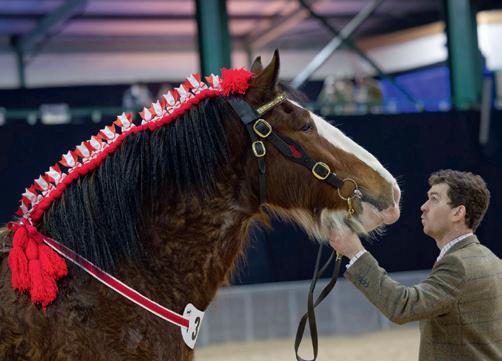

7th-9th March 2025
Bingley Hall, Staffordshire Showground, ST18 0BD
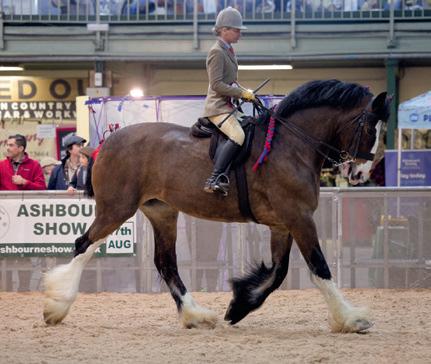

Tel: 01536 771611 Email: info@shire-horse.org.uk www.shire-horse.org.uk /theshirehorsesociety shire_horse_society @saveourshires






ORIGIN: Norfolk and Yorkshire
Visit: hackney-horse.org.uk
Hackneys – the name originating from the French word haquenee, describing a horse with a comfortable trot - are an elegant, high-stepping breed known for their ability to trot at high speeds. Today’s Hackney horses stand from 14hh to 16.2hh, while the Hackney Pony stands at around 12.2hh to 14hh. The British Hackney had its origins in the Norfolk and Yorkshire Roadsters (trotting horses) of the 18th and 19th centuries, but is first mentioned in medieval times. Following improvements in the roads during the 16th and 17th centuries, there was an increased demand for high-stepping carriage horses. Hackney blood has always been in great demand overseas – the Hackney reportedly had a large influence on breeds such as the Continental Warmbloods, especially Holsteins and Gelderlanders. The Hackney Horse and Pony are currently classified as ‘critical’ on the Rare Breeds Survival Trust’s List, states the Hackney Horse Society.
ORIGIN: Eriskay, Outer Hebrides, Scotland Visit eriskaypony.org
The Eriskay Pony is a rare breed from the Isle of Eriskay in the Outer Hebrides of Scotland. Eriskay ponies are among the last surviving remnants of the original native ponies of the Western Isles of Scotland; however, they are classified as critically endangered by the Rare Breed Survival Trust, according to the Eriskay Pony Society. These ponies are small but sturdy, known for their hardiness and gentle nature. They have a dense, waterproof coat that protects them from the harsh island weather, and were traditionally used for crofting (farming Scottish crofts) and as pack animals. The breed reportedly originated from a crofter or tenant farmer on the isle who wanted to retain the characteristics of his own pony, a derivative of the Highland. The Eriskay Pony can be used for riding, driving and conservation grazing.

ORIGIN: Lanarkshire, Scotland
Visit: clydesdalehorsesociety.com
The history of the Clydesdale breed dates back from the middle of the 18th century, when native horses were ‘graded up’ in an effort to produce greater weight and substance, by the use of Flemish stallions. The first stallion, imported by the Sixth Duke of Hamilton, was dark brown in colour and was kept for the benefit of his tenants who were granted its use free of charge, according to the Cydesdale Horse Society. Almost every Clydesdale of recorded lineage can trace its descent.
At its peak, Scotland had around 140,000 farm horses plus an unknown number in towns and cities, most of which were Clydesdales, in whole or part. Yet the breed is now categorised as ‘at risk’ by the Rare Breeds Survival Trust.
ORIGIN: Lincolnshire and Cambridgeshire
Visit: shire-horse.org.uk
Standing at around 17.2hh, this breed of heavy horse came into its own with eighteenth century advancements in agricultural technology, when the Shire horse became the animal of choice on the farm, replacing the ox, according to the Shire Horse Society. As canals began to appear all over Britain as a method of transportation by barge, the Shire became invaluable, also being used as a brewery dray and for rubbish collection; in the late 19th century, London alone employed around 1,500 horses for this purpose. In the 1960s, the breed was facing critical numbers, however dedicated breeders stepped in, and the breed has since seen a resurgence in popularity, both as a working animal and riding horse, according to the Shire Horse Society.


ORIGIN: Suffolk
Visit: suffolkhorsesociety.org.uk
Britain’s oldest heavy horse breed is subject to a strict rule – the coat colour must be chesnut (spelt in the Suffolk way, without the ‘t’ in the middle). Although some white is allowed on the head, markings on the fetlock are forbidden in breeding stallions. All lines trace back to a stallion known as Crisp’s Horse of Ufford, after its owner Thomas Crisp, which was foaled in 1768. This British heavy horse is one of several bred for ploughing and pulling loads in farm work, and was used for pulling guns and heavy supply wagons in WW1, according to the Suffolk Horse Society. A more popular and older name for the Suffolk Horse is the Suffolk Punch.
PALACE TO PALACE ~ You may have heard of the ‘Golden Triangle’ - well with Horse India you ride the bit in the middle! Travelling by Marwari horse your senses are awash with the colours, sights and sounds of India. Join us to stay in old country palaces, dining on the roof by candlelight and under the stars.
DESERT DUNES ~ Chat around the camp fire with shepherds and camel herders, ride over the dunes, see chinkara gazelle and watch 50,000 Demoiselle Cranes come in to feed - a truly awesome sight! Join us and canter along sandy camel tracks, canals, sand dunes and lakes - your Marwari horses await!
“Loved the horses, the fair, the countryside and we saw two leopards! ~ so much in 2 weeks”

FAIRS & FESTIVALS ~ Take part in the colours and excitement of local gymkhanas, horse shows, processions and festivals, as well as visit the famous horse and camel fairs of Pushkar, Balotra or Nagaur.
We have a fabulous range of holidays to suit all budgets, some are date specific but others can be taken at any time. Book now for your holiday of a lifetime!
LEOPARDS & LAKES ~ Ride from the magnificent Kumbhalgarh Fort through the shady Ghanerao forest of the Aravalli hills to Jawai reservoir in search of wild and free roaming Leopards!
Horse India offers an informative riding holiday experience, combining history, tradition and culture through our knowledge of the landscape, its people and, of course, its unique indigenous Marwari horses.
“These beautiful regal horses carried us steady, strong and safe, & never missed a beat”
WHAT TO EXPECT ~ A riding holiday with Horse India will find you staying in old Palaces, bespoke haveli Hotels or re-creating the days of the Raj’ by camping in their Maharajah ‘shikar’ tents - erected every night in stunning locations, complete with decorated bedrooms, attached bathrooms and real beds.
THE HORSES ~ Marwari horses have curly ‘lyre’ shaped ears that rotate 180 degrees and touch at the tip! They are desert horses, ‘slight’ in build, and stand 15hh - 16hh, spirited but safe, and more importantly, * you cannot ride this breed outside India.*

WHO: solo travellers, couples, friends, clubs & groups all welcome. You should be an intermediate level rider.
WHAT: Some rides are date specific, others can be taken at any time of year. We ride on average 25-30km/day or 4-6 hours riding/day with a relaxing picnic lunch stop.
WHERE: We are located equidistant between the blue city of Jodhpur, the lake city of Udaipur, and within easy reach of the pink city of Jaipur, Rajasthan, INDIA.
WHEN: The best climate is October to March
DETAILS: www.horseindia.com e: info@horseindia.com tel: 07726 930231
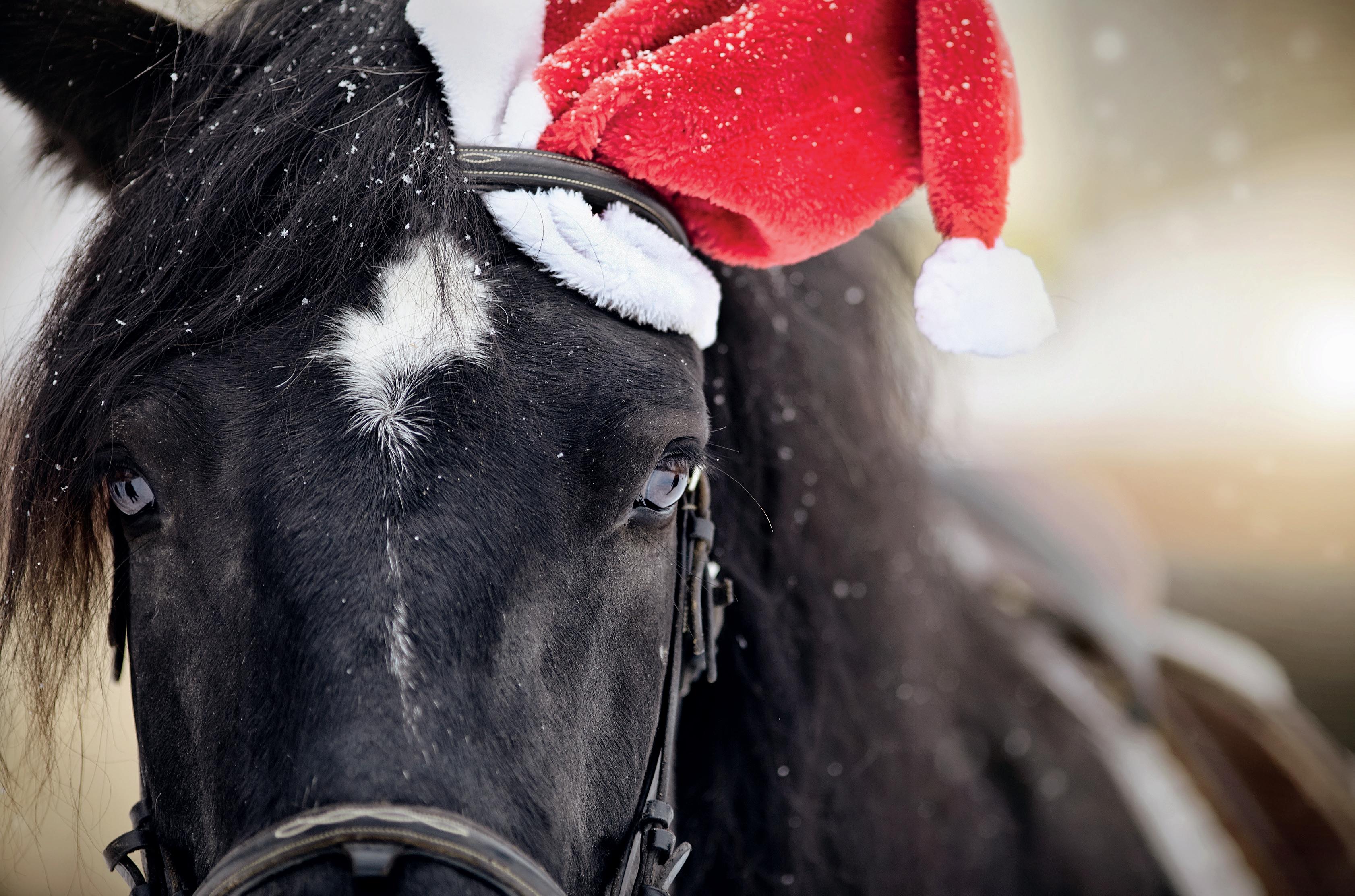
The holiday season is upon us, and if you have an equestrian enthusiast in your life, you know that finding the perfect gift can be as challenging as a clear round in show jumping. But fear not, fellow gift-givers! Whether your loved one is a seasoned rider, a budding equestrian, or someone who simply adores horses, we’ve got you covered. From stylish equestrian clothing to practical horse care products and even luxurious dog beds, this guide has something for everyone. So, saddle up and let’s dive into the ultimate Christmas gift ideas for equestrian enthusiasts of all ages and abilities.


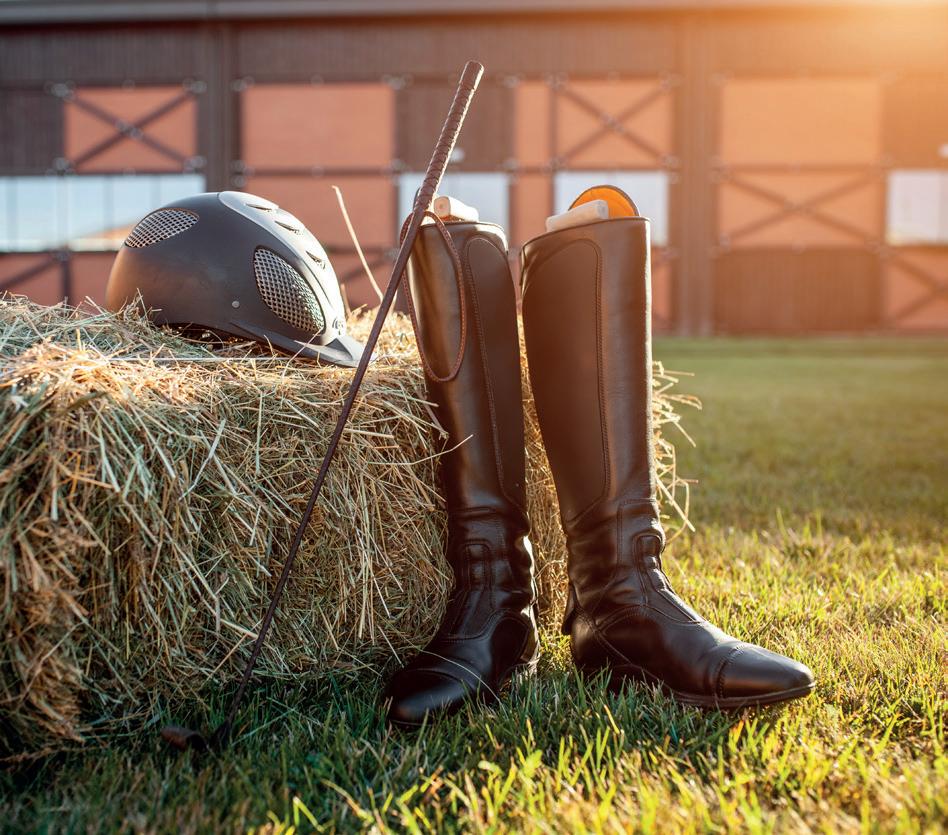
Equestrians appreciate high-quality riding gear that enhances their experience in the saddle. Consider the following options:
Riding Gloves A comfortable pair of riding gloves is essential for better grip and control on the reins. Look for gloves made from breathable materials that offer protection during long rides.
Breeches or Riding Tights Stylish and functional riding breeches or tights are often at the top of any rider’s wish list. Seek out options that provide flexibility and comfort, while also being durable enough to withstand daily usage.




Not only do saddle pads offer protection for the horse, but custom designs can also add a personal touch to an everyday accessory.
Healthy Treats Gourmet horse treats are a thoughtful addition. Opt for natural options that are both delicious and beneficial for the horse’s health.
Equine Supplements Provide the gift of health with high-quality supplements that support joint health, digestion, or coat quality.
Horslyx Salt Licks: A Treat for the Horses
Horslyx salt licks. These nutrient-rich licks are not only a tasty treat for horses but also provide essential vitamins and minerals to support their overall health and well-being. They come in a variety of flavors, including Original, Garlic, and Mint, so you can choose the one that your horse will love the most. They are perfect for keeping horses entertained and occupied, especially during the winter months when turnout time may be limited. Plus, they are a great way to show your equine friend some extra love this holiday season.
Gifts! Their exquisite leather goods, including bags and belts, are sure to impress even the pickiest of recipients. Whether you’re shopping for a fashionforward friend or a family member who appreciates quality craftsmanship, Grays has something for everyone. Visit their website at www.grays1922.com to browse their curated collection of timeless gifts that will bring joy to all who receive them. Gift with style this holiday season with Grays Country Gifts!


Maintaining a horse’s health and comfort is a priority for equestrians. The following gifts cater to their grooming and care needs:

Quality Grooming Kits A comprehensive grooming kit that includes brushes, hoof picks, and body wash can be an excellent gift. Search for brands renowned for their durability and effectiveness.
For the equestrian enthusiast who loves to bring their passion for horses into their home, equestrianthemed home decor is a fantastic gift idea. From elegant horse sculptures and artwork to cozy horse-themed throw pillows and blankets, there are plenty of options to choose from. Consider gifting a beautiful piece of equestrian art to hang in their living room or a set of horse-themed kitchen accessories to add a touch of equestrian flair to their home. These gifts are perfect for adding a touch of equestrian charm to any space.
Grays Country Gifts
Add a touch of luxury to your loved ones’ gifts this Christmas with Grays Country
Luxurious Dog Beds from George Barclay and Tuffies
Let’s not forget about the fourlegged friends who share the stable – the dogs! After all, they deserve a little pampering too. George Barclay and Tuffies offer a range of luxurious dog beds that are perfect for keeping canine companions cozy and comfortable.
George Barclay’s dog beds are known for their stylish designs and high-quality materials. Whether you’re looking for a classic bolster bed or a plush pillow bed, George Barclay has something to suit every dog’s needs. Their beds are not only comfortable but also durable, making them a great investment for any dog owner.
Tuffies, on the other hand, are renowned for their tough and waterproof dog beds. These beds are perfect for active dogs who love to get muddy and wet. With a Tuffies bed, you can rest assured that your dog will have a dry and comfortable place to rest, no matter how adventurous they are.

Fashion plays a significant role in the lives of equestrian enthusiasts. Here are some accessories to consider:
Equestrian-themed Jewellery Items such as bracelet charms, necklaces, or earrings featuring horseshoes, bits, or horse heads can serve as lovely gifts that reflect their passion for riding.



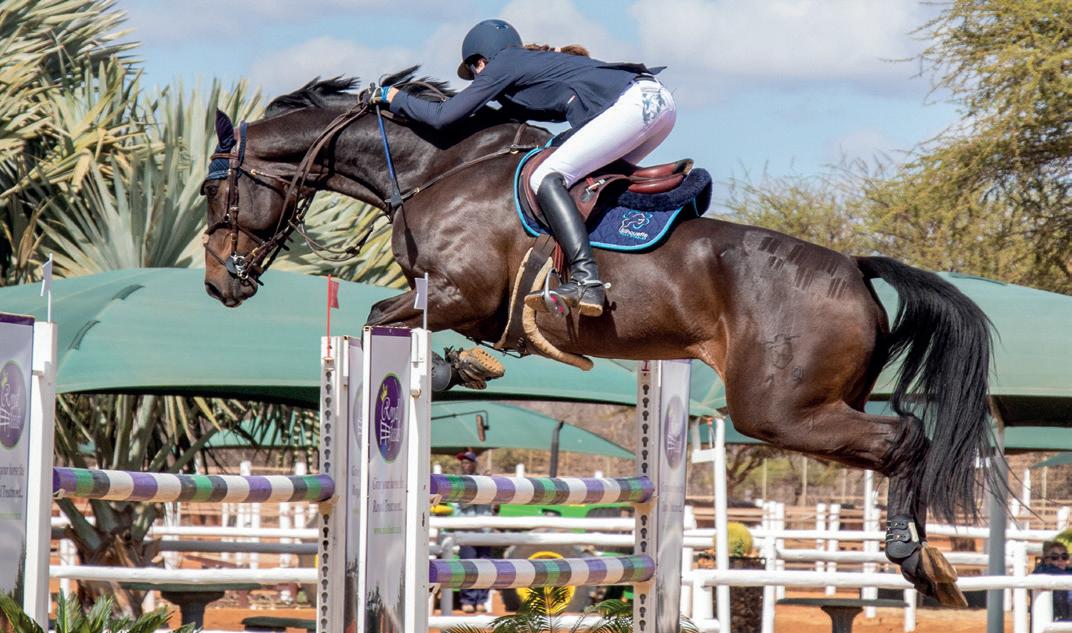




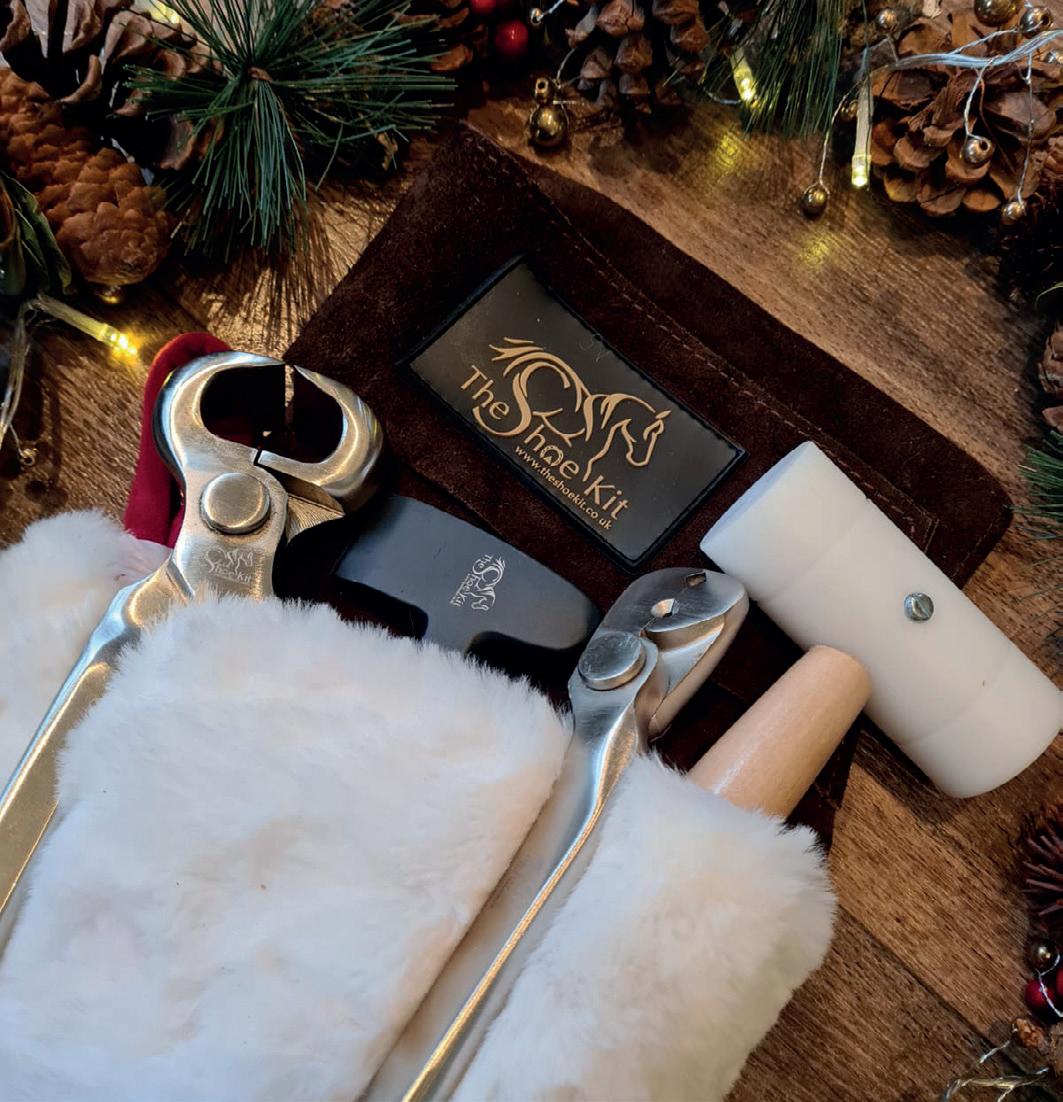


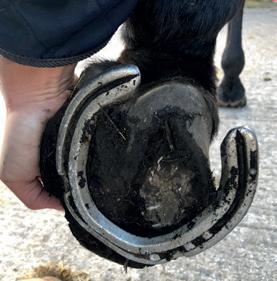




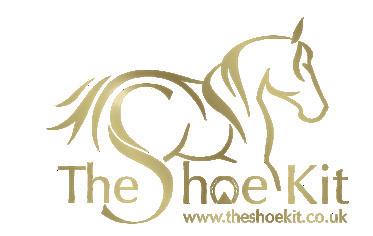

Techalogic Cameras
Revolutionising Equestrian Adventures
In the world of equestrian sports, capturing every moment of your ride is not just about reliving the thrill; it's about enhancing safety and sharing your passion with the world. Techalogic understands this unique blend of needs, which is why they've developed a line of innovative cameras for equestrian enthusiasts. The family run British company has gained prominence as the only brand offering cameras tailored for the equestrian market. Techalogic cameras are your trusted companions, ensuring no moment goes unrecorded and adding an extra layer of safety to your equestrian adventures.

www techalogic.co.uk
Riding Bags A stylish and functional bag designed for carrying riding gear can streamline their routine, making it easier to transport essentials to the barn.
EDUCATIONAL AND FUN EXPERIENCES
Incorporate learning and excitement into your gift choices:
For the equestrian who loves to read, consider gifting a selection of


equestrian books or a subscription to an equestrian magazine. From training guides and horse care manuals to equestrian fiction and biographies of famous riders, there are plenty of options to choose from.
For Children, the Kumakawa series of books by Ross Hartshorn are a perfect read for those with an interest in horses. A subscription to an equestrian magazine is a gift that keeps on giving, providing the recipient with a regular dose of equestrian news, tips, and inspiration throughout the year.
Riding Lessons or Clinics Offer the opportunity for skill development by gifting lessons with a local instructor or participation in specialized
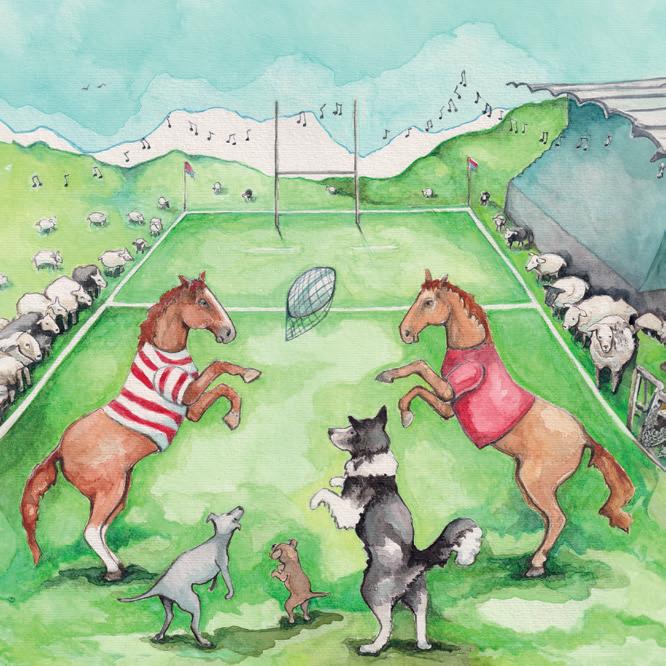
Membership to Equestrian
Organizations A membership to a local or national equestrian club can enrich their riding experience and offer networking opportunities within the equestrian community.
PERSONALISED GIFTS: Adding a Special Touch
For a truly unique and thoughtful gift, consider personalized equestrian items. From custom saddle pads and embroidered blankets to monogrammed riding gloves and personalized grooming kits, there are endless options to add a special touch to your gift.
Personalized gifts show that you’ve put extra thought and effort into finding something that is truly special and meaningful. Plus, they are a great way to celebrate the bond between rider and horse.
Finding the ultimate Christmas gift for an equestrian enthusiast doesn’t need to be stressful. With options spanning from practical riding gear to unique and meaningful home décor, there are plenty of thoughtful gift ideas to choose from. As you consider your selections, keep in mind the recipient’s personal tastes and specific needs.
This holiday season, give the gift of joy, functionality, and passion—gifts that reflect the beloved world of the equestrian enthusiast. Embrace the spirit of giving and make this Christmas one to remember!

Stylish Equestrian Clothing from Jockey and Jill Jockey and Jill, a brand that has become synonymous with chic and functional equestrian apparel. Whether your equestrian enthusiast is hitting the trails, training in the arena, or simply enjoying a leisurely ride, Jockey and Jill have something to suit every style and need.














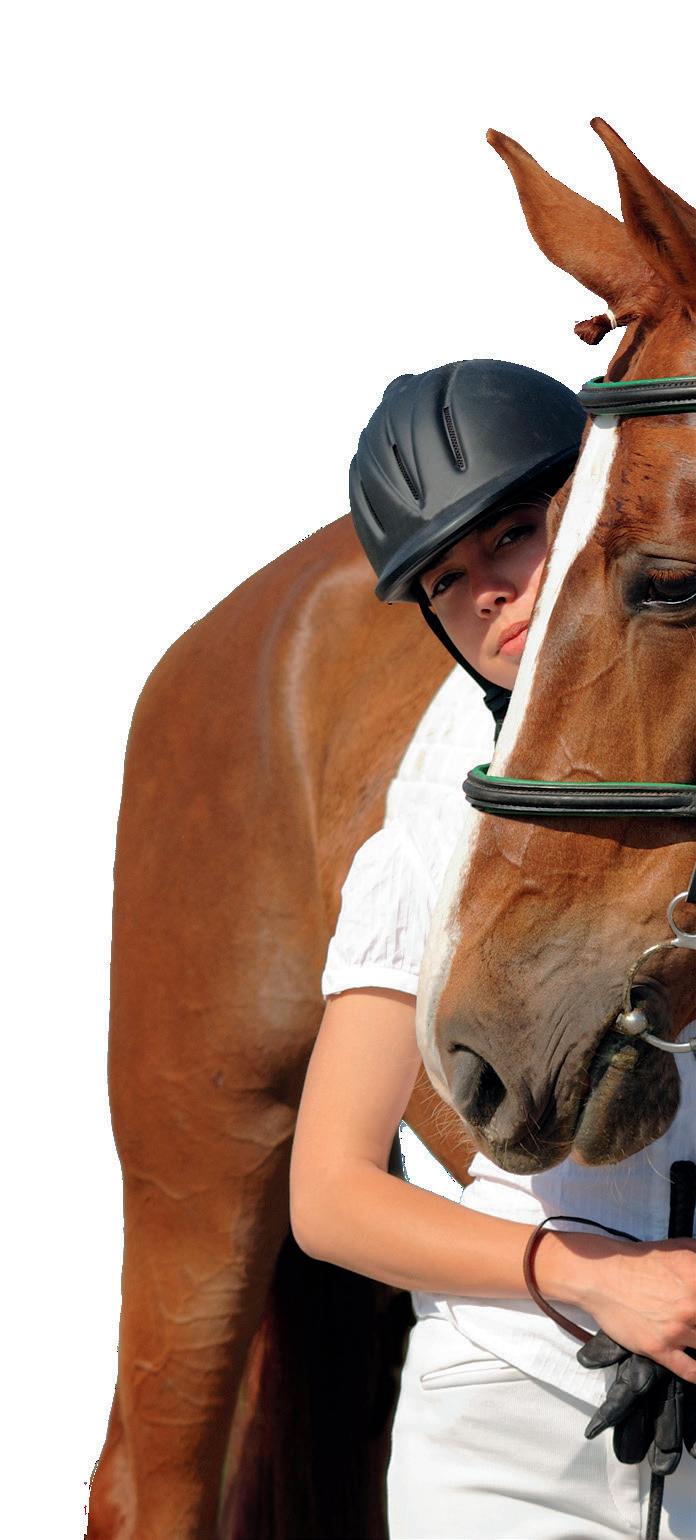


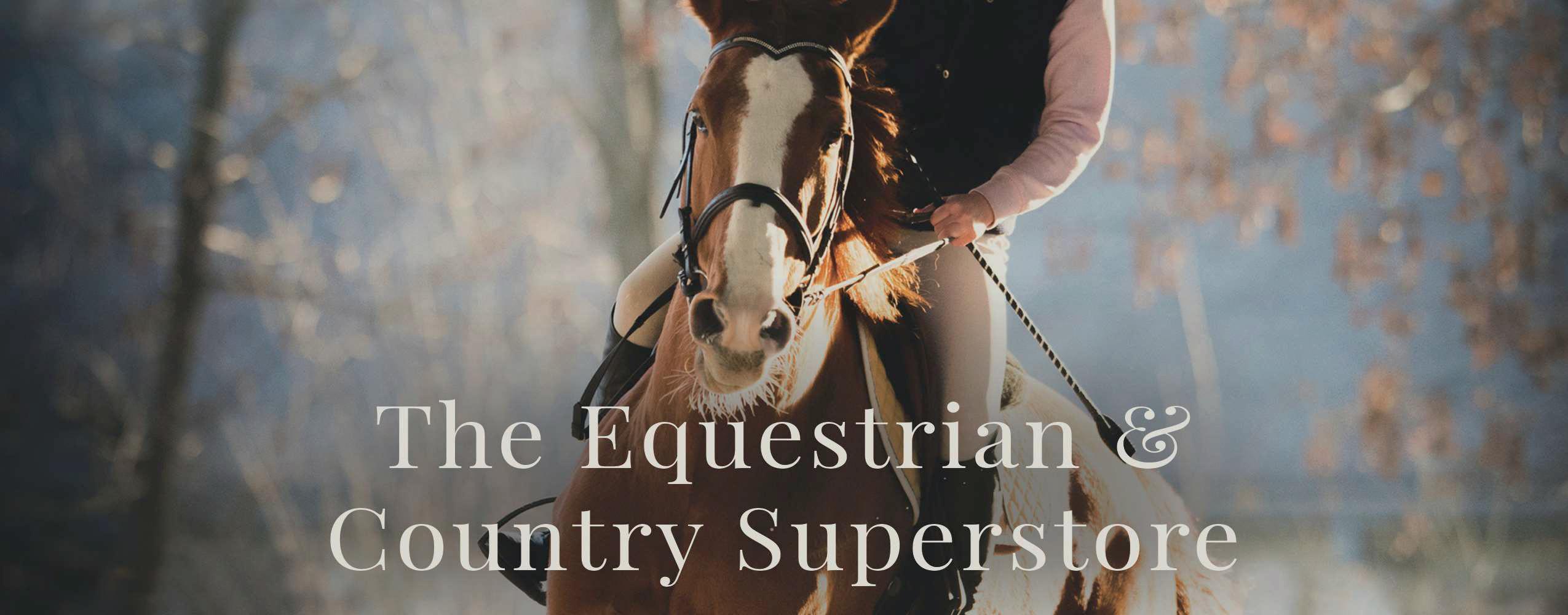
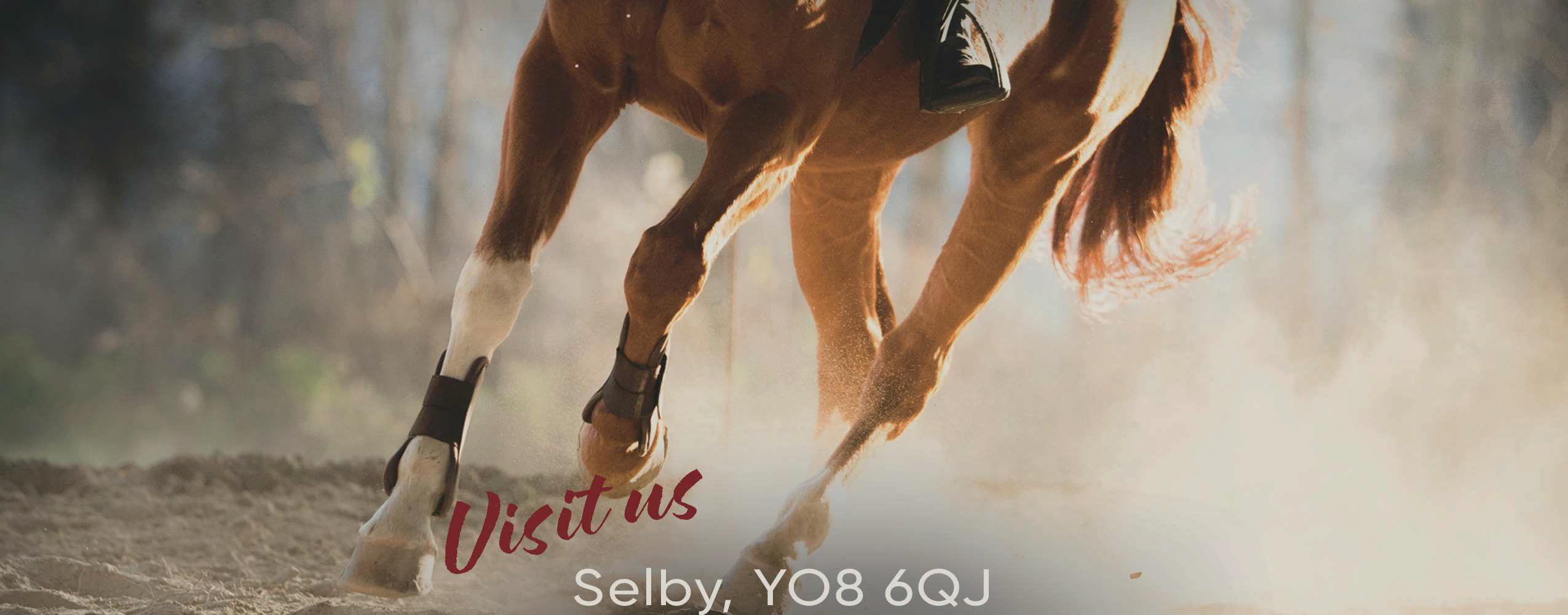




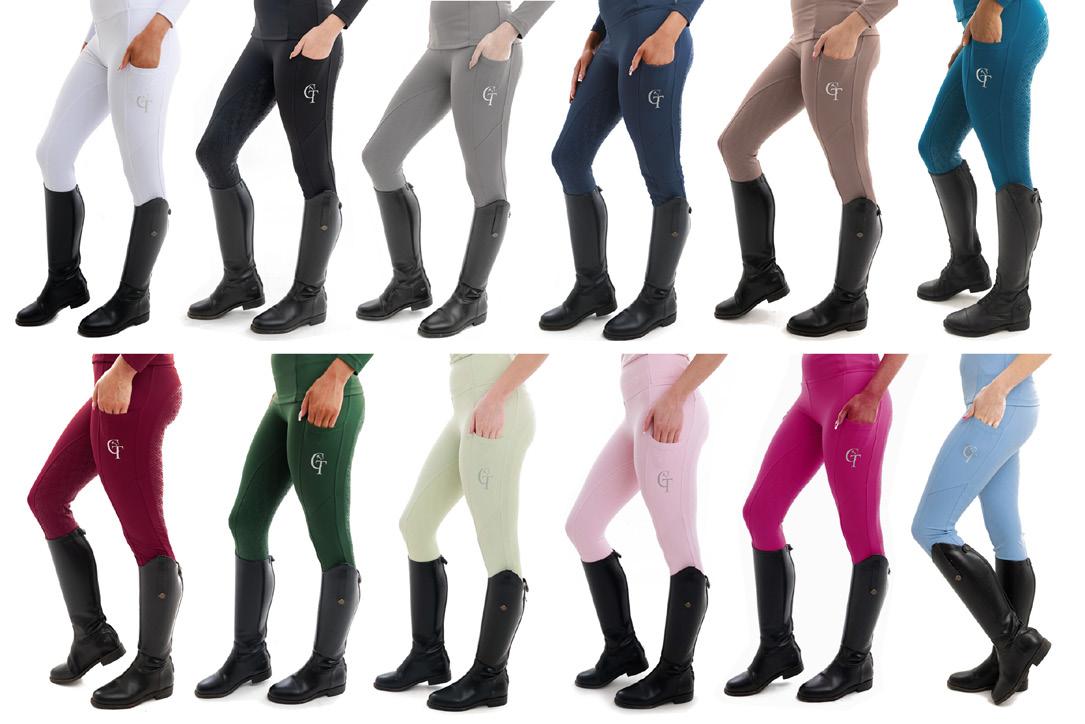


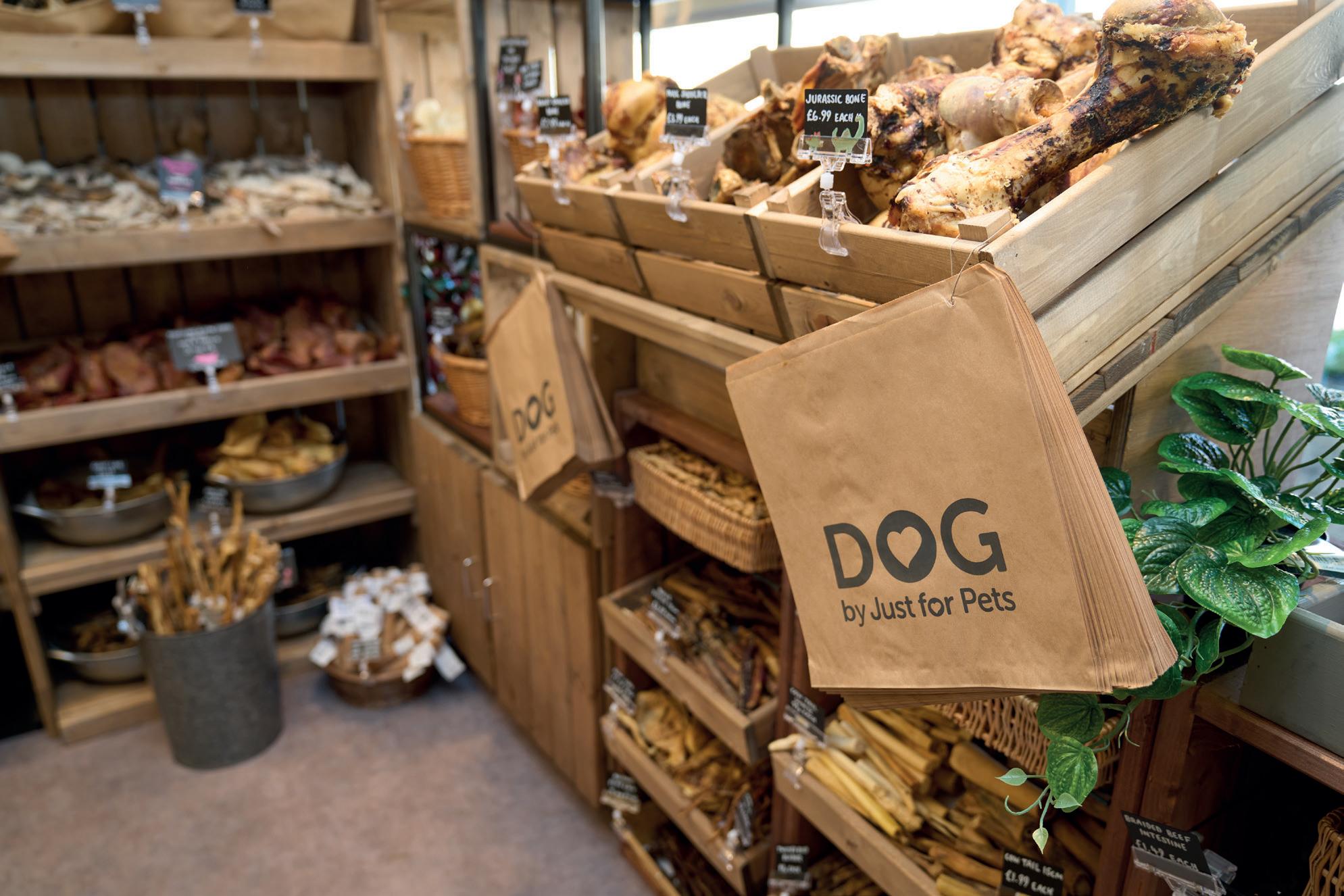









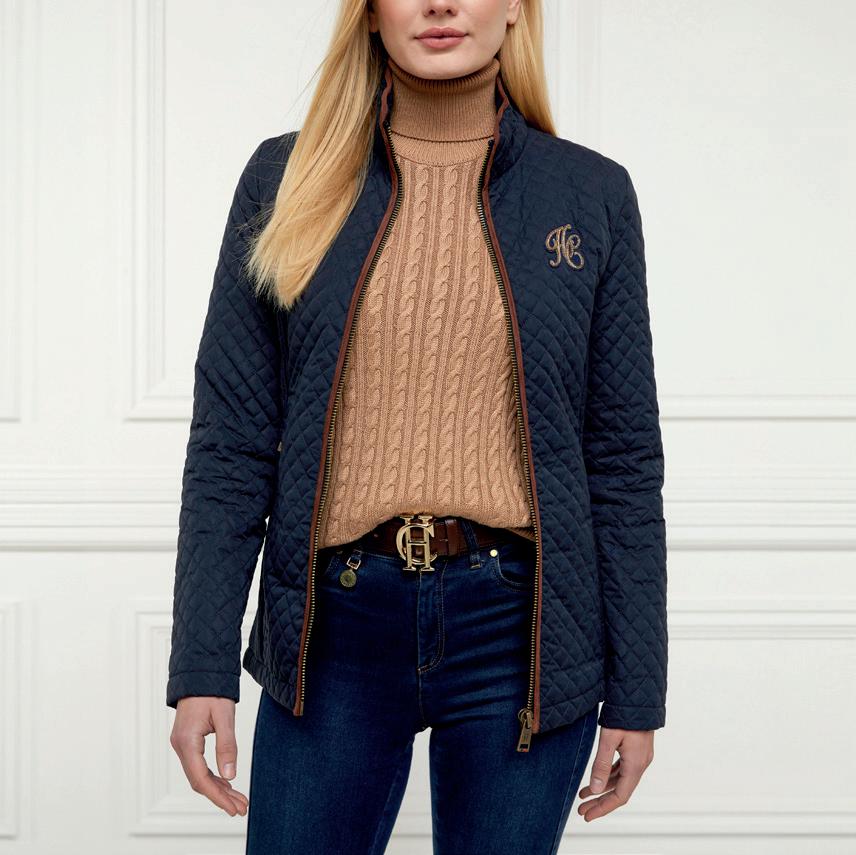




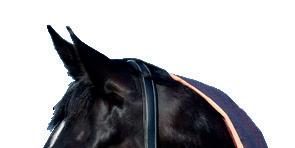
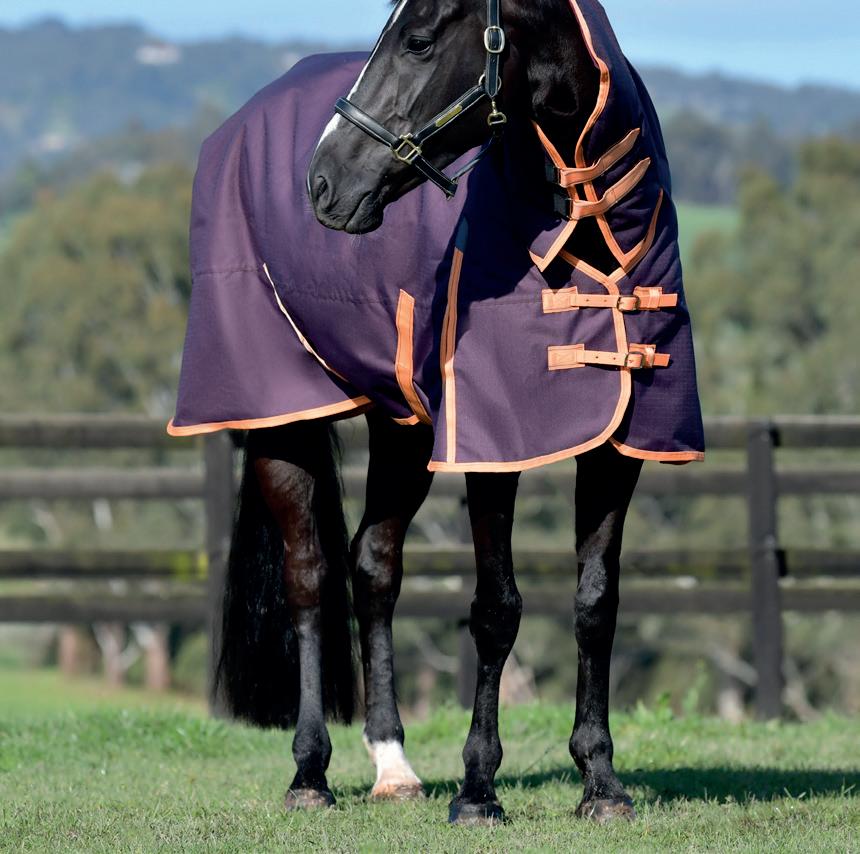











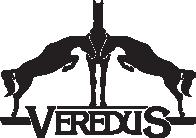
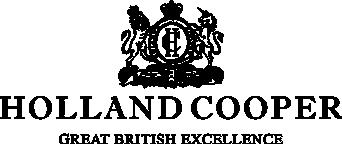

















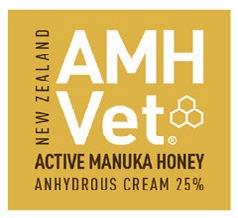

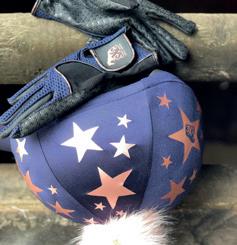


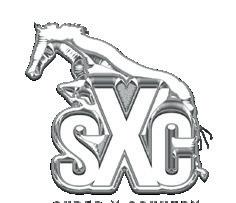






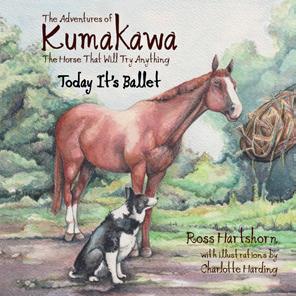



Listen to Kate Delaney, Emmy Award Winning Host of the America Tonight Radio Programme interview Ross on her program on YouTube
Watch the “This-N-That” interview with Ross as seen on Channel 9 in America

“A charming, original, and fun story from start to finish with the message that children should trying new things - even if they are not the perfect shape or size for it. It is an especially and unreservedly recommended pick for family, preschool and junior school book collections”. James A Cox. Editor-in-Chief.
IF

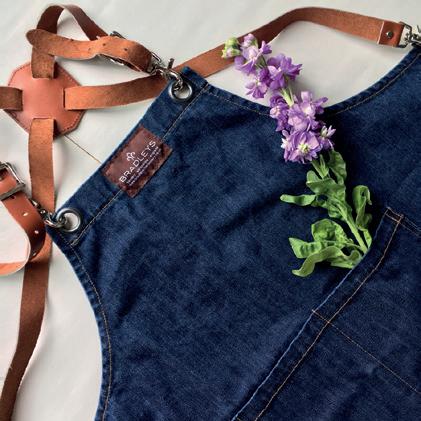

Country Lifestyle Clothing & Accessories
Traditionally Handcrafted in Shropshire
SHOP ONLIN E A T
BRADLEYSTH E T ANN E R Y C O U K
sales@bradleysthetannery.co.uk


WEAR HELITE, WHY NOT YOU?

Ri-Dry Clothing is distinctively designed and manufactured in the UK to provide the best possible protection from the elements.
Made from a premium waterproof and breathable fabric, the Ri-Dry range is totally waterproof and ideal for a variety of activities. Whether you are competing in an equestrian event or simply enjoying a leisurely stroll in the countryside, a Ri-Dry coat will keep you warm and dry, no matter what the weather throws at you.
In addition to their excellent waterproofing and breathability, Ri-Dry coats are durable and long-lasting, making them a valuable investment for anyone looking for a high-quality coat that will provide many years of reliable service.
Ladies, Men’s and Children’s sizes available in a variety of colours and styles.










As the festive season approaches, many of us start to think about the gifts we would like to receive or give. But this Christmas, consider a gift that goes beyond material possessions. For countless horses and ponies, winter can be a particularly challenging time as they rely on the care of equine charities. With many charities taking in over a hundred horses and ponies in need, your support can make a significant difference. This article will explore ways you can support equine charities throughout the Christmas months, ensuring these magnificent creatures receive the love and care they deserve during the cold season.
Equine charities often find themselves overwhelmed during winter. Many horses and ponies that come into their care may have suffered from neglect, injury, or have been rescued from dire situations. Here are some critical statistics to consider:
Many equine charities can take 300 horses and ponies during the winter months.
Maintaining a healthy environment for these animals can cost a charity on average £7,000 each year per horse rescued
Charities often rely on a volunteer base, yet during the winter, intakes can rise while volunteer numbers dwindle due to the seasonal weather.
it is evident that equine charities require substantial support as they work tirelessly to give these animals another chance at life. During the Christmas season, there are multiple avenues through which we can extend our help.







One of the most impactful ways to show your support for equine charities is through a sponsorship programme. Sponsoring a horse or pony not only provides immediate financial support but also creates a lasting bond between you and your chosen animal.
• Local Charity or NationalLook for reputable equine charities in your locality or nationally.
• Choose a Horse or a Pony
- Many charities will have profiles of the animal’s needing sponsorship on their websites.
• How much can you affordDetermine a contribution that you can afford and set it up as a monthly donation. This gives the charity consistent funding to manage care needs.

By sponsoring an animal, you’re directly influencing their welfare and recovery journey.
If you’re looking to make a more significant impact, consider the Gift Aid scheme. It allows charities to claim back tax on donations made by UK taxpayers, meaning your contribution can be worth up to 25% more without costing you an extra penny! Here’s how to maximise your effectiveness:
• Check Eligibility - Make sure you’re a UK taxpayer.
• Fill Out a Gift Aid Form - When making your donation, ask if they participate in the Gift Aid scheme and fill out a simple form.
• Maintain Records - Keep track of your donations so that you can provide proof of contributions if required.
This small action can greatly enhance the financial resources of equine charities.
If you’re unsure how to directly contribute, consider the Equine Charity Gift Appeal. Many charities run campaigns where you can buy a specific item that they need, from hay bales to vet care. These are often made convenient through online platforms. Here’s how you can get involved:
• Visit Charity Websites - Most charities will detail specific needs on their sites.
• Select Gifts - Choose gifts that correspond to your budget, ensuring your contribution is practical and meaningful.
• Spread the Word - Share your involvement with friends and family to raise awareness for the cause.





The only thing the rescued horses being cared for at Redwings Horse Sanctuary want for Christmas is a life of comfort and kindness, free of fear and neglect, and there are many ways you can help.
So many of us are stretched financially, and this time of year increases those
they can to do their vital work and Redwings is no different. We are 100% funded by our fantastic supporters, so whatever you can give really makes a difference.
The Redwings online shop has a great selection of cards, as well as calendars and diaries, the purchase of which helps to care for the horses, ponies, donkeys and mules who live at Redwings, and allows us to keep rescuing those who need us. We also have many wonderful presents for your family, friends and loved ones and our five visitor centres in Norfolk, Essex, Warwickshire and Angus, Scotland, all have on-site shops too!

pressures, but there are still lots of fun, innovative and surprising ways you can support charities like Redwings and enjoy that warm glow of giving this Christmas.
Redwings is the largest horse welfare charity in the UK, caring for around 1,500 equines every day at our sanctuaries in England and Scotland. Last year we offered a lifelong home to 104 horses, thanks to the support of our donors. More than 100 Redwings horses were also rehomed to carefully matched Guardians, who take on their everyday care. All charities rely on kind donors to give what

donations of unwanted or preloved tack and rugs, in good condition, which can be used by our horses, ponies, donkeys and mules, or sold in our charity sales
With so many horses living at our sanctuaries, we operate high levels of biosecurity to reduce the risk of disease and spread of infections, so for second-hand, used tack we ask that it is supplied in a clean and usable condition, bagged or boxed. We also kindly ask that rugs are washed and tumble-dried.
Send us your stamps: Save the stamps that arrive on any Christmas cards and once you have an envelope full pop them in the post to us! We’ll then be able to convert them into funds.
Spread the cost of your Christmas gift with a sponsorship and give the gift that keeps on giving: From just £2 a month, or a one-off payment of £15 per year, you can support Redwings’ work and give the gift that keeps on giving, as well as spread the cost this Christmas.
Shop your Christmas food and drink with us ahead of the big day: Ethical teas and coffees, artisan hot chocolate and locallymade sweet treats are all available in Redwings shops – perfect for visitors to share at your home during the festivities. And of course, proceeds of each sale directly benefit the horses, ponies, donkeys and mules in our care.
Make space for new items by recycling the old: Redwings welcomes

Make an appointment to discuss leaving a legacy: Legacies are a gift in your Will, when the time comes, and a vital way to help charities like Redwings continue our work. Over two-thirds of our income comes from gifts left in Wills. A gift of just £100 would enable us to sow an acre of grass seed on new land to feed our horses.
To find out more about how you can help Redwings this Christmas, please visit redwings.org.uk or call 01508 505246.




Even though it might be colder during the winter, many equine charities are always looking for additional help. Offering your time as a volunteer can be immensely rewarding. Here’s how you can get started:
• Contact Local Charities - Reach out to local equine charities and express your willingness to help.
• Join a Community Event - Many charities host events during the festive season; participating can establish a deeper connection with your chosen charity.
• Participate with Friends - Bring along friends or family members to volunteer with you, making it a fun, community-oriented activity.
As you prepare for the festivities this Christmas, let’s remember those who may not have a warm home or a loving family. The horses and ponies cared for by equine charities rely on our generosity and compassion during this challenging season. By sponsoring a horse, participating in Gift Aid, contributing to charity gift appeals, or volunteering your time, you can make a tangible difference in the lives of these animals.
This Christmas, consider that all you might want for Christmas can also transform the lives of those who are in need. As we rally around our equine friends this winter, let’s give the gift of hope and care— one hoof at a time.


Providing a safe haven for life for up to 20 equines at any given time.
We offer refuge for serious welfare cases and help people going through some very hard times. Rescue, rehabilitation, rehoming.

Malibu here was one of 6 foals we were able to take from the largest welfare case in the UK. They were in such a bad way that only 2 survived. Malibu has grown up to be the sweetest pony who lives for cuddles! The other surviving pony is now in a home experiencing life filled with love and proper care.

Wambrook, chard, TA20 3DH ferneanimalsanctuary.org

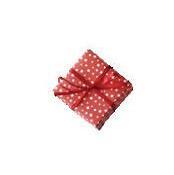




Sponsoring a rescued horse or donkey makes a beautiful gift for you or a loved one. It’s the next best thing to owning your own! Many of our residents have endured terrible starts in life, so sponsoring an Adoption Star from just £2 a month ensures they continue enjoying a safe and happy home at Redwings.


Raystede is an animal charity that rescues, rehomes and provides sanctuary for a wide variety of animals every day.
Sponsoring an animal helps to fund their care and give them a happy a life. It makes a wonderful gift for any animal lover!
What you receive as a sponsor
Updates on your sponsored animals

Personalised certificate
Invites to exclusive sponsor days, with ‘behind the scenes’ tours to meet the animals and staff
Regular copies of our Raystede magazine

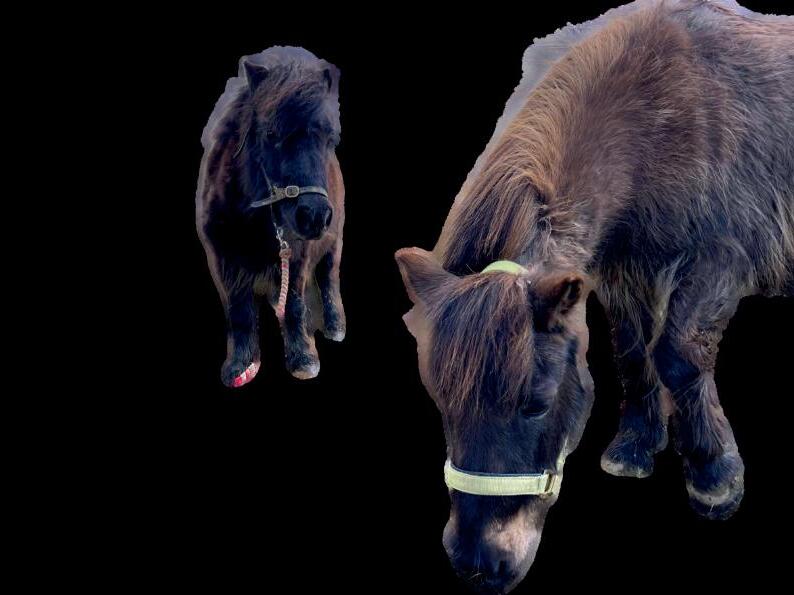

Sponsor our pony herd from as little as £5 a month.
For more information visit www.raystede.org or scan the QR code








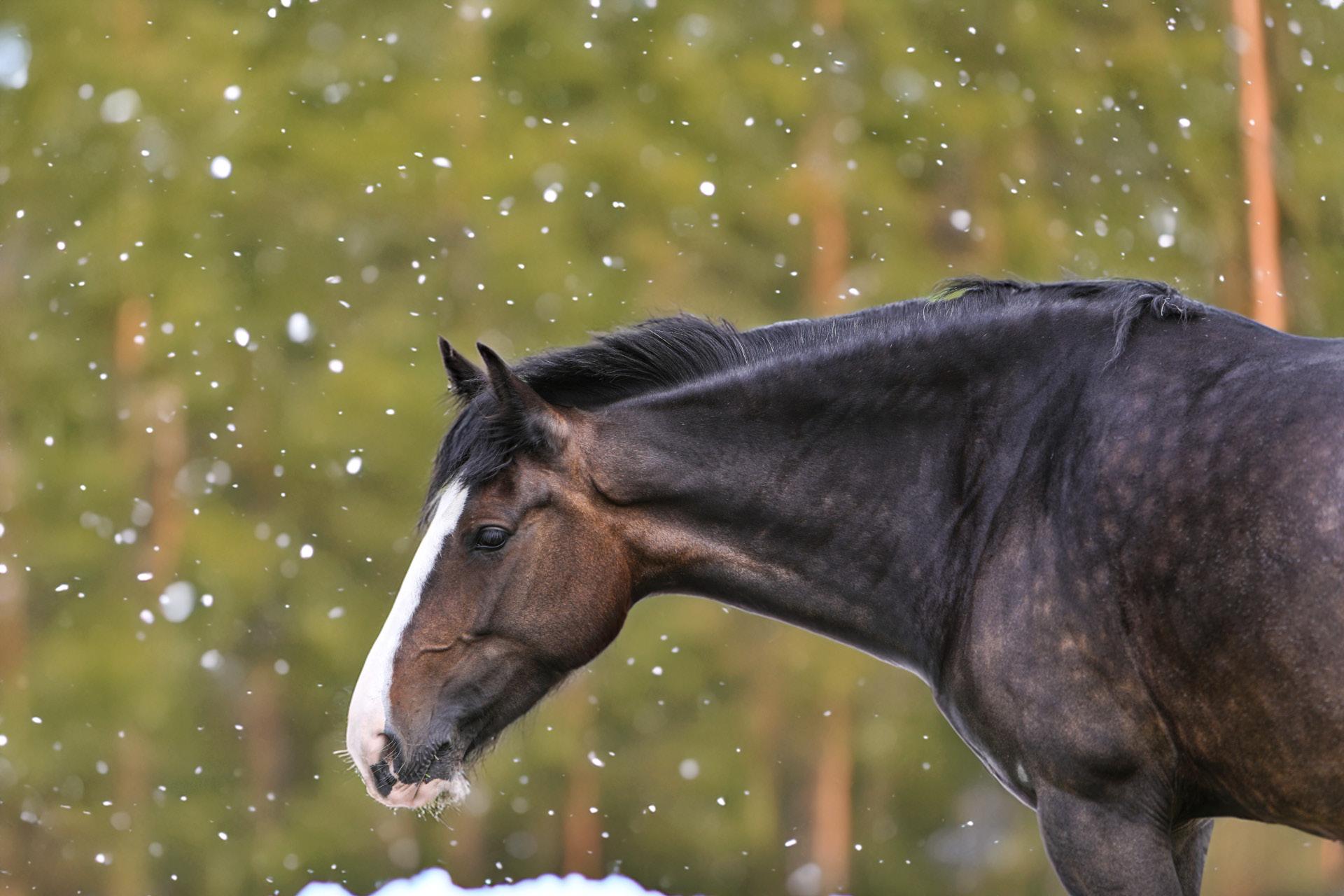



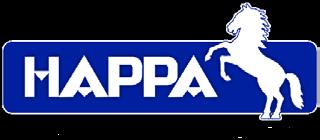








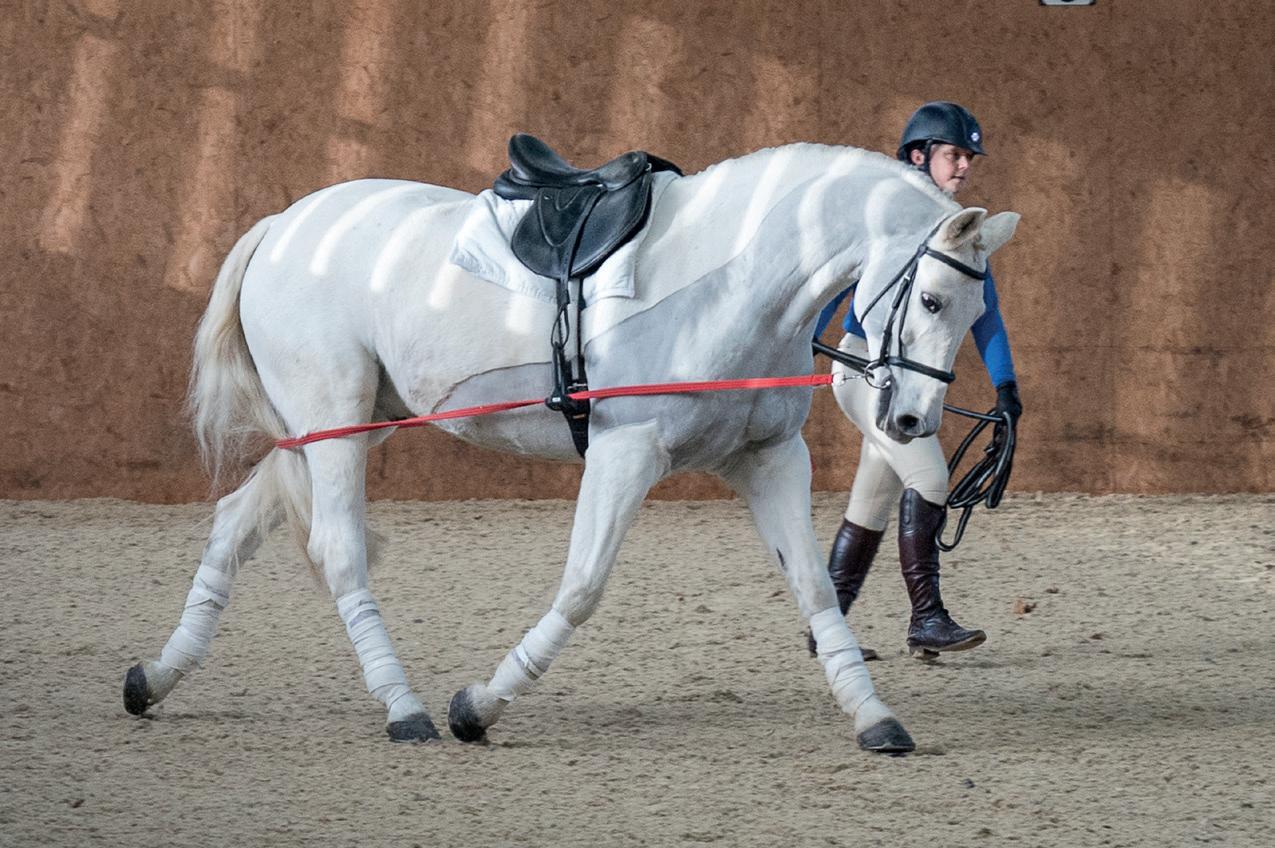
The approach is calm, respectful, systematic and with the welfare and the soundness of the horse at the forefront at all times. No rushed jobs or forced systems used here. The horse must be given the time to understand and to develop the muscle and strength to carry the rider with ease and confidence and in a good non damaging posture, so that he or she has a future. Long-reining, see on left, is very important at this stage. So much can be achieved on straight lines with no damage to weak young joints. Submission is not achieved through exhaustion but through understanding and the ability to be able to work with us and not against us.
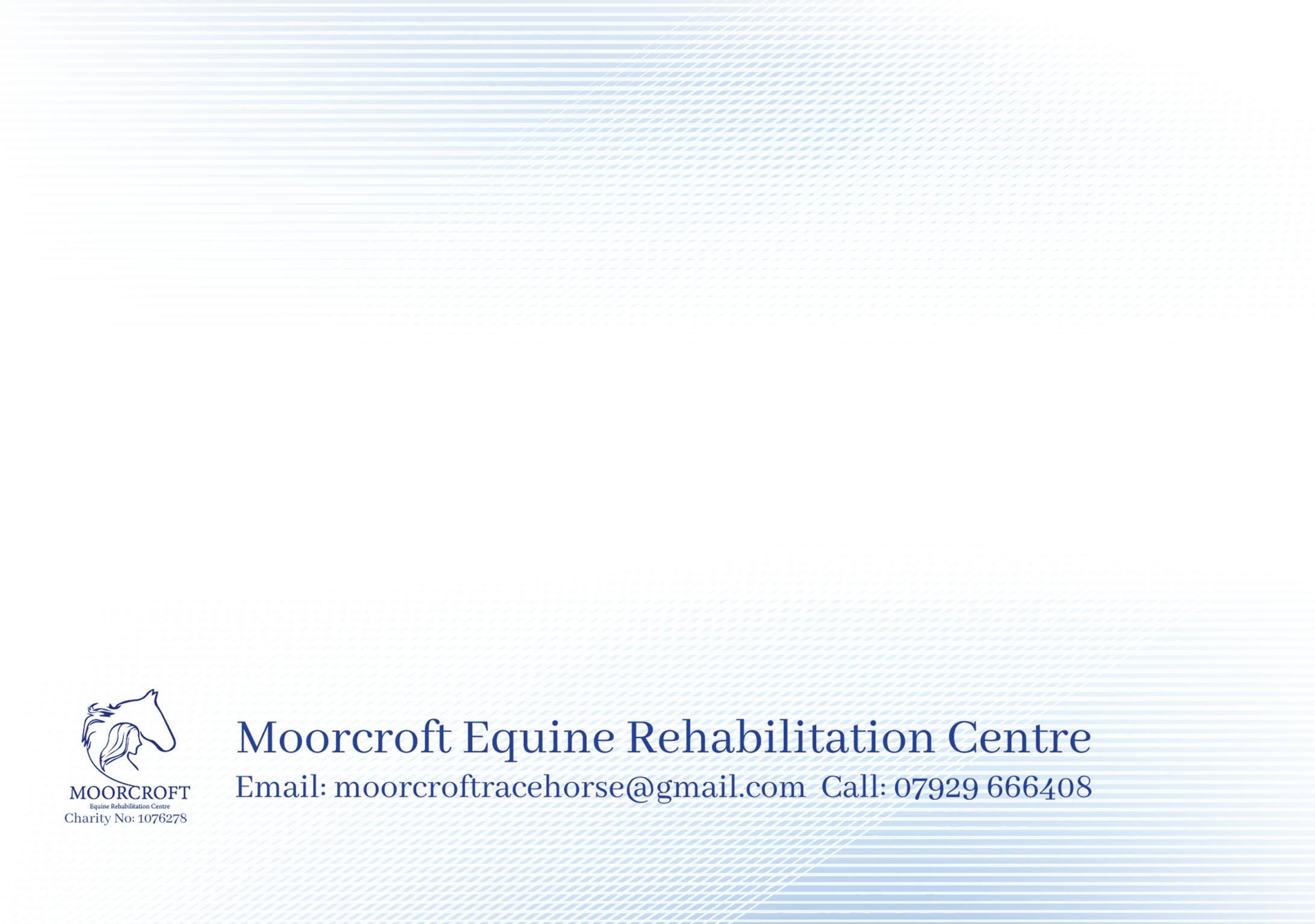


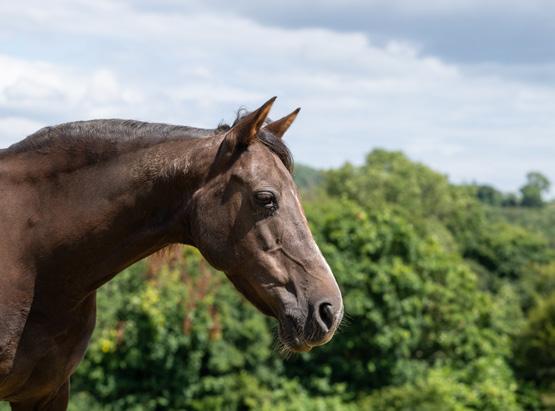
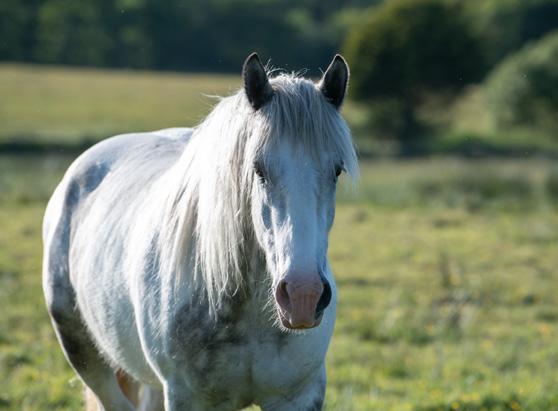
Receive a special edition pony when you join Stable Squad!




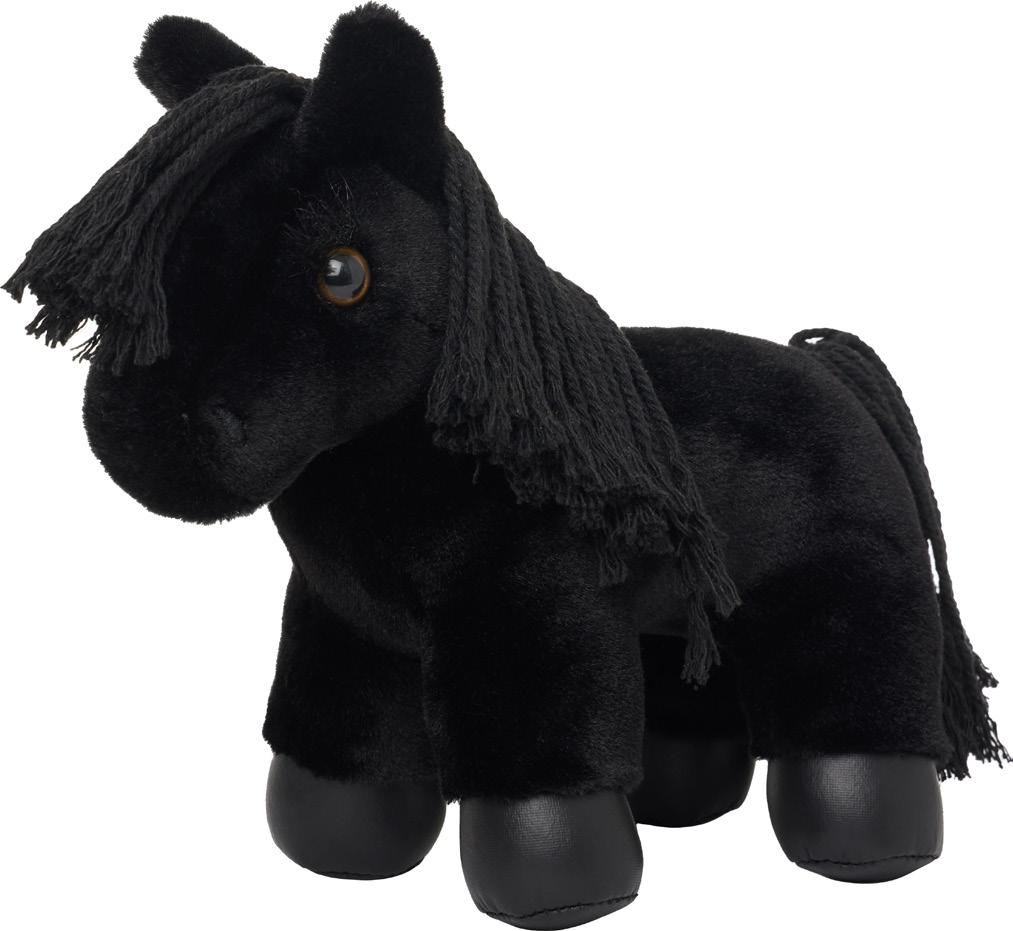


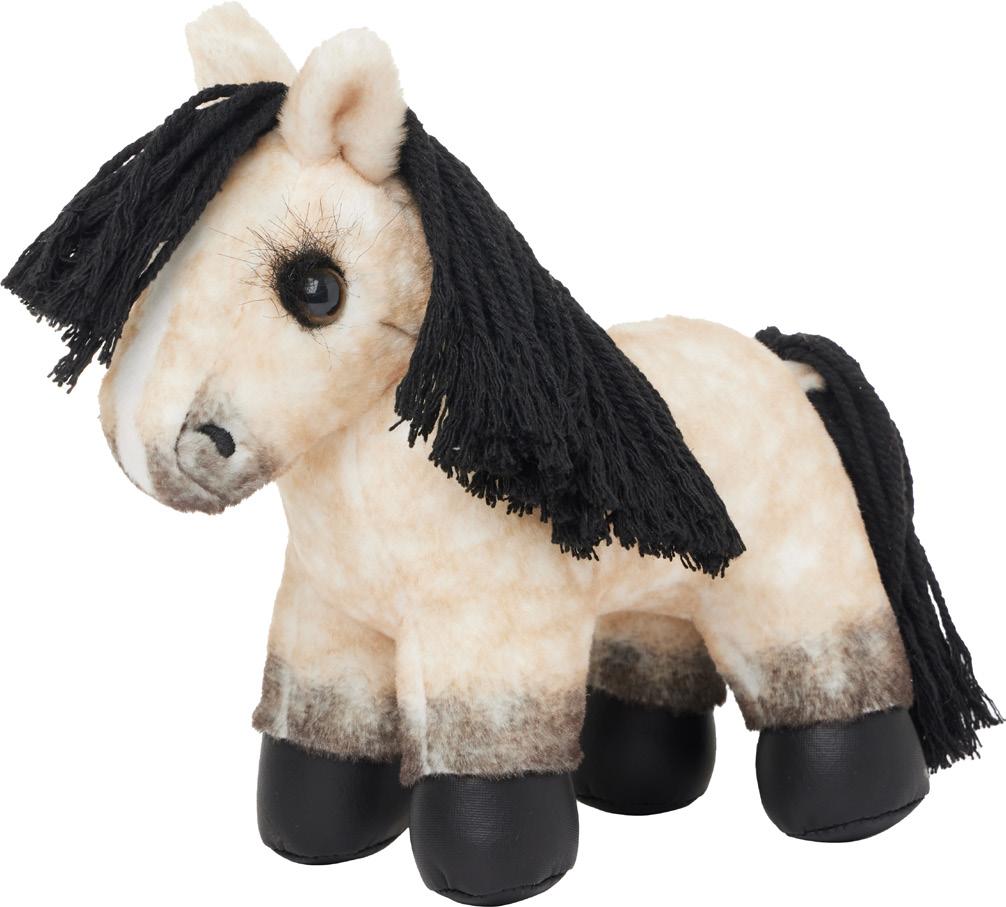
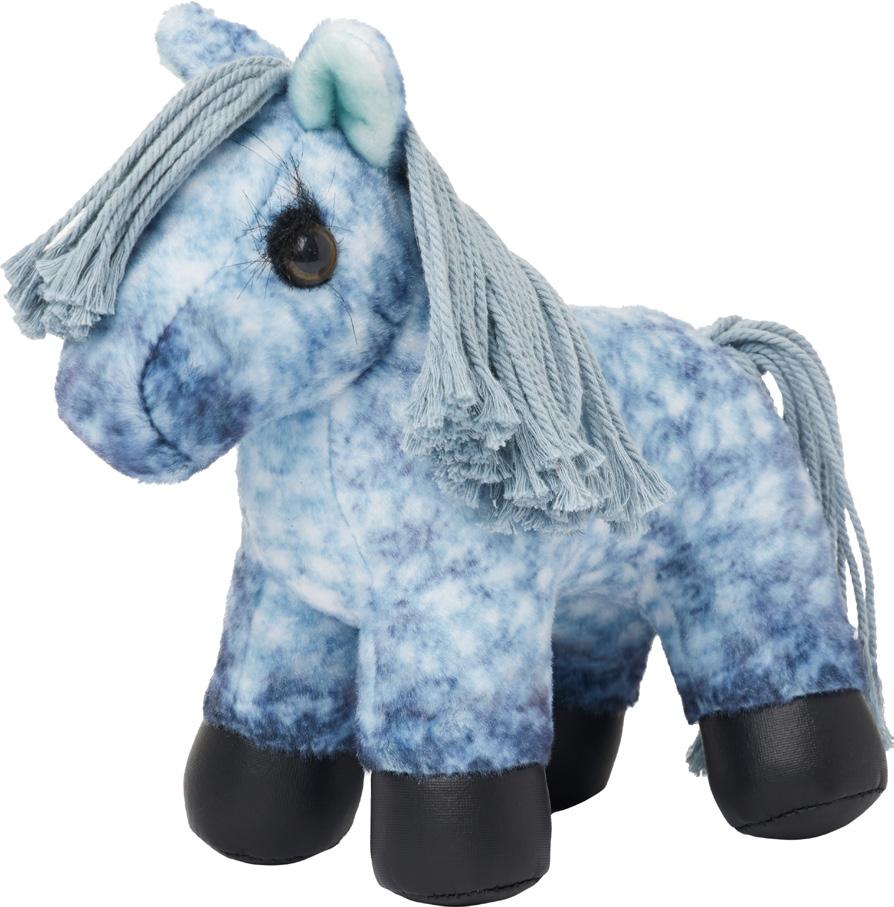
Join our family of over 2,500 horses, foals, donkeys and mules! Stable Squad magazine will gallop through your door packed with stories, games and fun ways to learn about great horse welfare. You can even earn Stable Squad rosettes! Join today!
















British Autumns are a sight to behold. Whether you’re a seasoned horticulturist or a novice gardener, there’s much to enjoy this season if you’re spending time in and around your property.
Autumn is a season of transformation, offering an array of visual delights to enjoy, whether from the comfort of your kitchen window or from the thick of the action outside in the garden. As summer’s warmth gives way to the crisp, cool air of autumn, colours become richer, scents can become more profound, and the overall atmosphere generally shifts to one that’s more restful and slower-paced.
Cultivating an attractive and
welcoming outside space this season is generally a rewarding experience, now we are past the overbearing heat and speedy growth and harvests that can be hard to keep up with in summertime. This season is also a wonderful
opportunity to create a space around your property that is not only visually striking and a source of personal enjoyment, but is also a haven for wildlife.
In British gardens during autumn, wildlife activity is generally abundant as many species prepare for the colder months ahead. Birds like robins, blackbirds and finches are frequently seen foraging for food. Migratory birds such as redwings and fieldfares typically arrive from northern Europe, while squirrels are often spotted gathering and burying nuts, particularly acorns, for their winter stores.
With this in mind, here we showcase some of our favourite seasonal, autumnal plants to help you plan an attractive outside space and enhance biodiversity at your property, and also offer some top tips for successful autumn gardening, to achieve that ‘golden season’ in your garden.

The Future of Horse Keeping Are you always thinking about your horses welfare?


Chrysanthemums
Chrysanthemums are quintessential autumn flowers, renowned for their vibrant blooms in a range of colours, including yellow, red, orange and pink. They are relatively low-maintenance, requiring only well-drained soil and a sunny spot; we find that regular deadheading encourages continuous blooming, which makes chrysanthemums a firm favourite at this time of year – they’re a beautiful, bright addition to the outside areas around your property.
These dainty booms are often called michaelmas daisies – they’re so called because they bloom around September 29, the ancient feast day of St. Michael, marking the transition to autumn from summer. Their pretty, star-shaped flowers, typically in shades of blue, purple, pink, or white, add a splash of colour to borders and beds. They prefer full sun to partial shade, and well-drained soil. Asters are also attractive to pollinators; great for garden biodiversity!
Sedums
Sedums, or stonecrops, are hardy perennials that thrive in the cooler temperatures of autumn. Their fleshy, succulent leaves store water, making them drought-resistant and low-maintenance – they can tolerate poor soil conditions, making them a versatile choice for many garden settings. The leaves of sedums spread like a glorious, dense mat; the plants bloom in late summer all the way through autumn, with flowers in shades of pink, red, and white. (The dead flower heads are worth keeping on the plants, as they look spectacular when covered in frost).
Fragrant blooms
Many autumn flowers are not only visually appealing, but also fragrant. The sweet scent of heliotrope can fill the air with a vanilla-like aroma. Late-blooming roses such as ‘gertrude jekyll’ continue to produce fragrant blossoms well into the autumn months, providing a romantic scent to the garden at this time of year. Scented geraniums can also keep your garden smelling delightful throughout the cooler months.
Deciduous trees and shrubs
If you are cultivating a space around your

property specifically to create colour and interest, consider deciduous trees and shrubs, as their leaves typically turn vibrant shades of red, orange, yellow, and gold. Japanese maples are particularly renowned for their striking red and orange leaves. Similarly, the leaves of beech and oak trees transition to deep bronzes and russets, creating a rich tapestry of colours in your outside space.
Herbs are the perfect plant to cultivate in autumn for a lovely aromatic experience. Parsley is a versatile herb that thrives in the cooler months; it can be grown from seed, sown directly into the garden, or from young plants started indoors. Parsley prefers a sunny to partially shaded location and well-drained soil.
Chives
Chives, hardy perennials, can be harvested well into the autumn. They grow best in full sun and well-drained soil, and are easy to grow from seed. Their mild onion flavour makes them a popular choice for garnishing soups, salads, and other dishes; perfect for rustic lunches around the table.
Mint
Mint is a robust herb that can continue to grow into the autumn months, especially if the weather remains mild. It prefers a partially shaded spot with moist, welldrained soil. Mint can be invasive, so it’s often best grown in containers to prevent it from spreading uncontrollably!
Other herbs like rosemary, thyme and sage also thrive in autumn, releasing their aromatic oils into the air and adding a delightful olfactory dimension to the garden experience outside your home.
Vegetables are another welcome addition to your autumn crop. Kale is a robust, leafy green that becomes sweeter as the temperatures drop, making it ideal for autumn harvests; it prefers a sunny location and well-drained, fertile soil. Kale can withstand frost, so is ideal for the changing seasons.
Brussels sprouts are a classic autumn vegetable; they require a relatively longer growing season, thrive in cooler weather and even improve in flavour after a light frost. They need a sunny spot and well-
drained soil, with regular watering and occasional feeding to support their growth. They do need to be planted in midsummer for an autumn harvest, however.
Carrots are another great choice for autumn gardening. They prefer sandy, well-drained soil and a sunny location. Thinning the seedlings to prevent overcrowding is essential for developing well-shaped roots. Again, sowing carrots in late summer can lead to a bountiful autumn harvest. Chantenay carrots are very well-suited to the UK climate.
Autumn gardens look beautiful adorned with the vibrant colours of berries and fruits. Holly bushes produce bright red berries that stand out against their glossy green leaves. The rowan tree, also known as mountain ash, will be covered in clusters of orange and red berries in autumn, attracting birds and adding to the garden’s visual appeal. The deep purple berries of elderberry and the bright orange fruits of sea buckthorn further enhance this season’s garden’s colour scheme. (Cotoneaster is another lovely plant for attracting wildlife to the garden, as the berries are especially enjoyed by birds.)

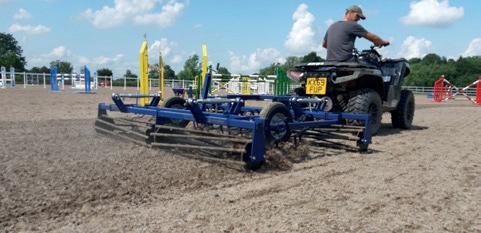



Riding Surface Maintenance it’s easier with ArenaMate®
Arena levellers for horse riding surfaces | Trade in old for new scan for more:
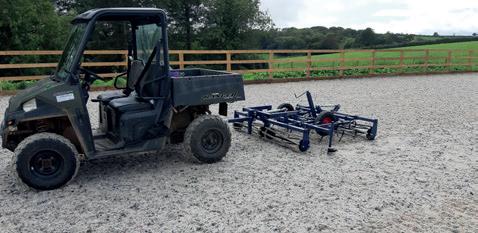

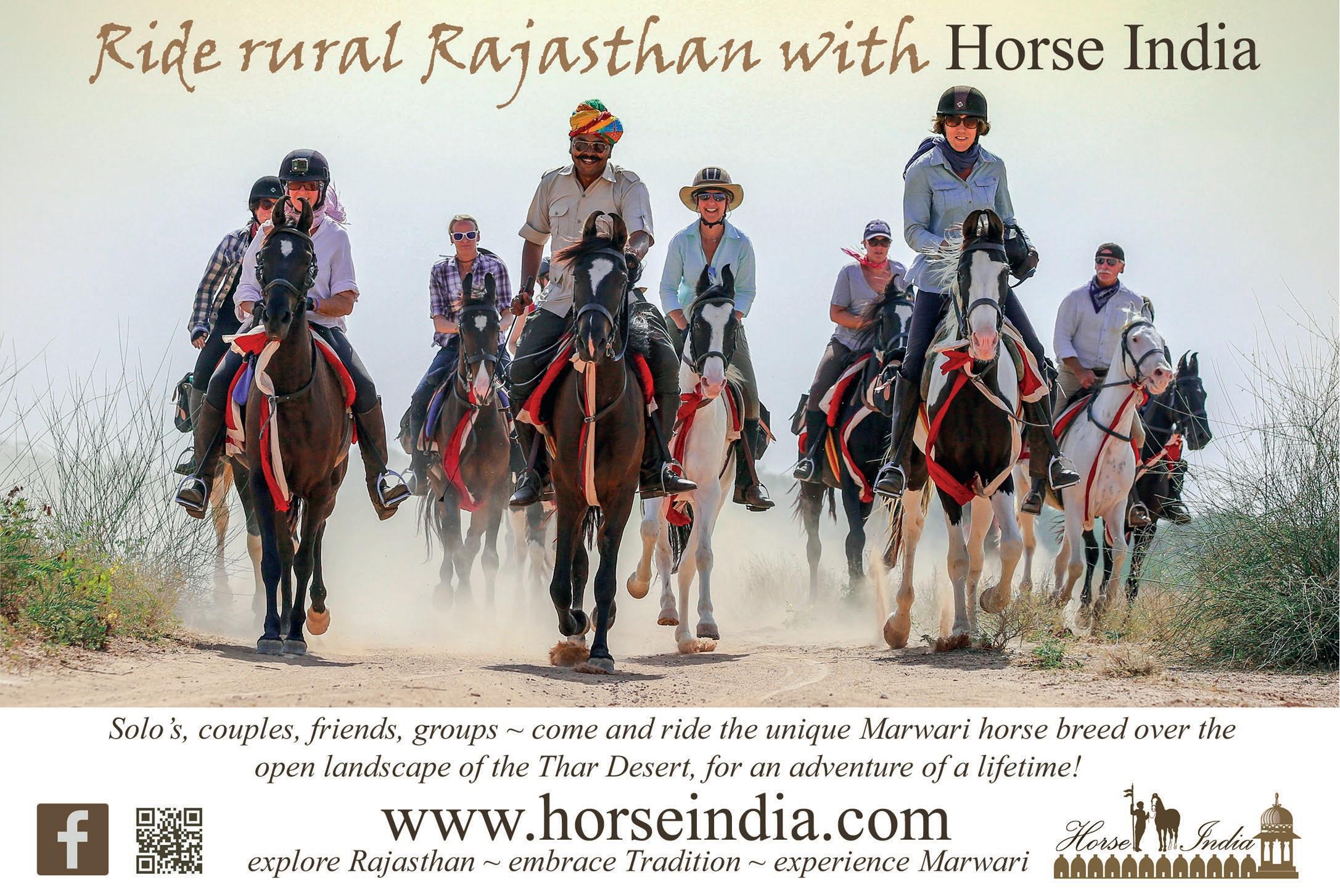


1. PREPARE THE SOIL
Before planting, ensure your soil is well-prepared by removing weeds and adding organic matter such as compost or well-rotted manure. This improves soil structure and fertility, providing a good foundation for plants.
2. APPLY MULCH
Applying a layer of mulch around your plants helps retain soil moisture, suppress weeds, and regulate soil temperature. Organic mulches like straw, wood chips, or compost are ideal for autumn gardens.
3. KEEP WATERING
Although autumn typically brings more rainfall, it’s important to monitor soil moisture levels, especially during dry spells. Water your plants in the morning to reduce the risk of fungal diseases, and ensure the water reaches the roots.
4. PREPARE FOR FROST PROTECTION
Be prepared for early frosts by having protective materials like horticultural fleece or cloches on hand. Covering tender plants overnight can help extend the growing season and protect them from frost damage.
5. CREATE WILDLIFE HABITATS
Now’s a great time to encourage wildlife by providing food, water, and shelter. Bird feeders, bird baths and log piles can attract birds, insects, and small mammals, enhancing your garden’s biodiversity. Hedgehogs are more active at this time of year, foraging for insects and slugs so they can fatten up before hibernation; insects like bees and butterflies are still present on warmer days, seeking out the last blooms of the season. Gardens with leaf piles or log stacks provide ideal shelters for small mammals like hedgehogs. Meanwhile, if you have a pond, do welcome the amphibian visitors like frogs and toads, which may be seen moving towards areas of water to find a suitable places to hibernate.
6. EMBRACE NATURAL ELEMENTS
Allow fallen leaves to remain in certain areas of the garden to create natural mulch, and provide habitat for insects. The organic matter enriches the soil and supports a healthy garden ecosystem.
The Future of Horse Keeping Are you always thinking about your horses welfare?





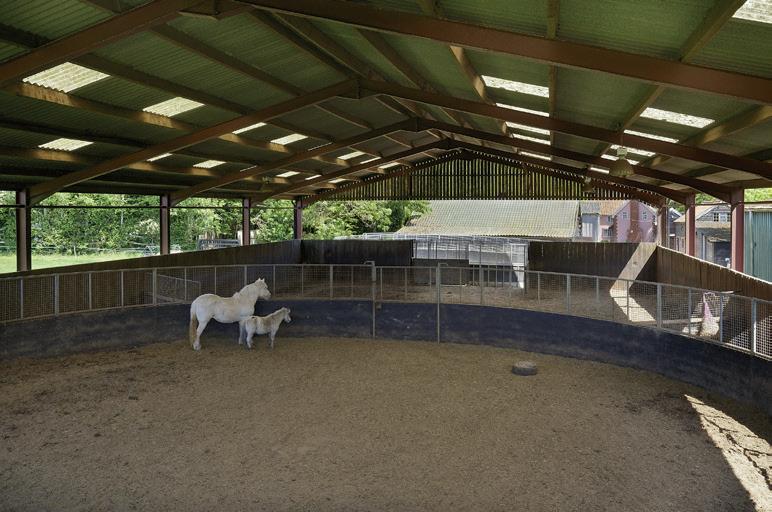

Situation:

Abbey Farmhouse, with its handsome rendered and colour washed elevations, is believed to date from the 15th Century and is of timber frame construction with pan tile roof. Arranged over two storeys and extending to some 2,800 sq ft, the property offers two reception rooms, five bedrooms and three bathrooms. Field Mouse Cottage and Hedgehog Cottage sit adjacent to the farmhouse and are of timber, brick and pan tile construction, and both can be let on Assured Shorthold Tenancies. Mature gardens to the south and east of the properties give way to attractive woodland from which the post and rail paddocks can be accessed.
The extensive modern outbuildings and barns at Abbey Farm offer a wide variety of uses and are currently utilised for general storage and equestrian purposes. The land at Abbey Farm is classified as Grade 3 on the Land Classification Soil Series of England and Wales and has been used for equestrian grazing in recent years. The land is currently arranged to offer five post and rail paddocks extending to approximately 11.5 acres. In all the property extends to about 14 acres.
Guide Price £1,300,000


Creating equine facilities for the future with innovative infrastructure
t: 01304 273620 I e: info@jelka.co.uk I www.jelka.co.uk
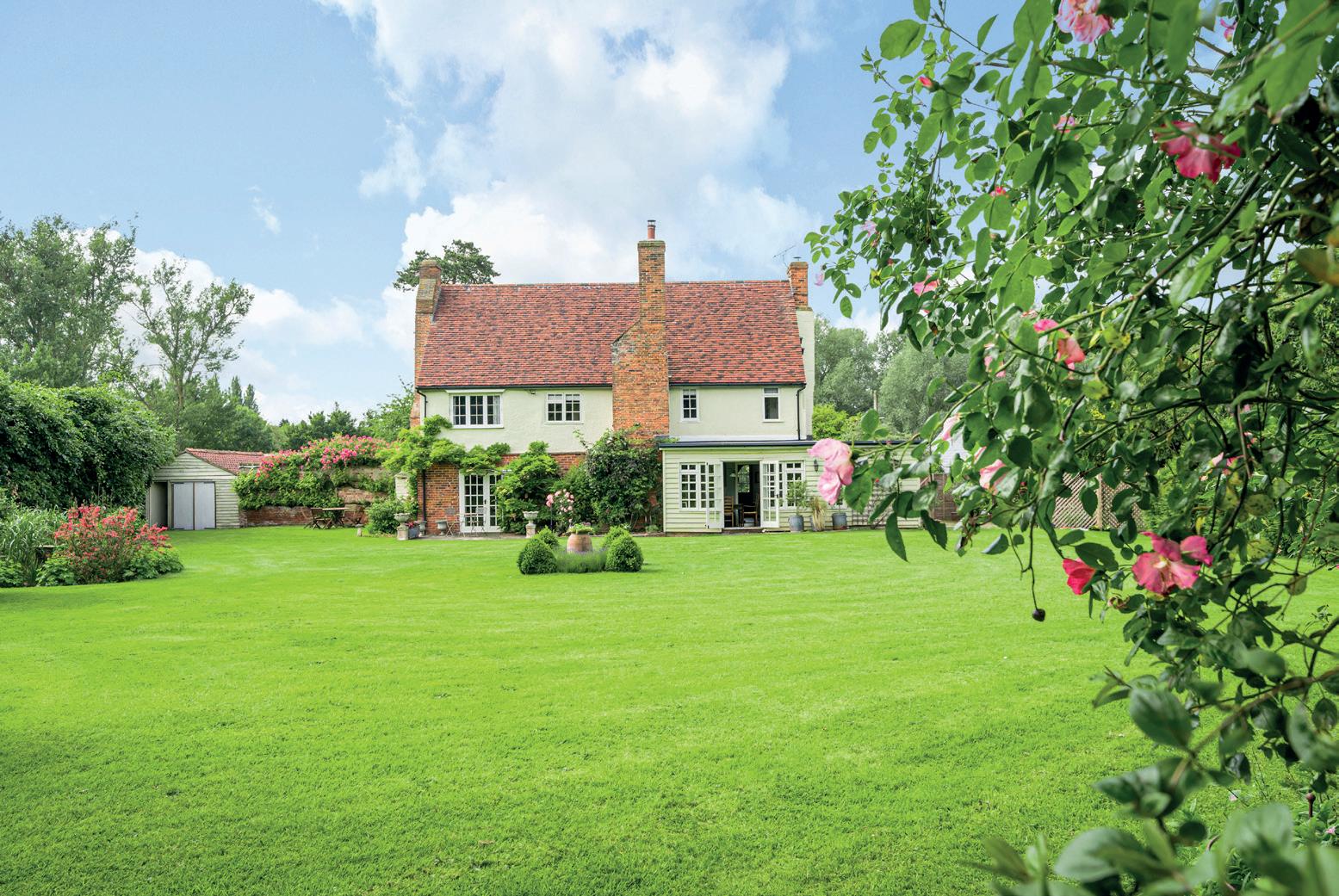




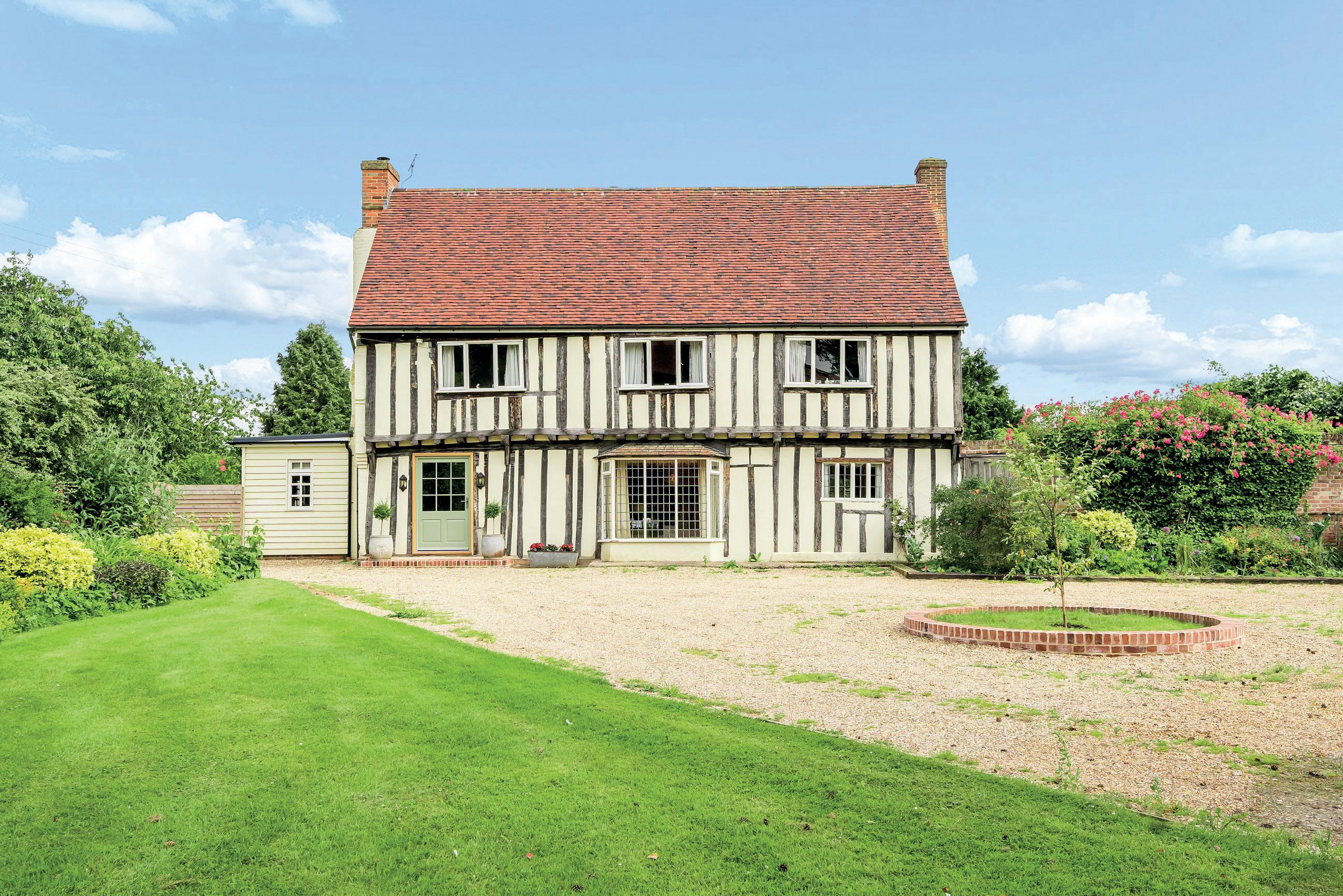
Situation:
Bower Hall is an elegant and wonderfully characterful Grade II listed former manor house dating back to around 1600, standing in a picturesque tucked away rural location near the river, with stable block, outbuildings and over 8.8 acres of gardens & paddocks.
The property presents outstanding, high-ceilinged heavy timber framework with fireplaces, arched alcoves, some superb exposed floorboards, and large windows to the front and rear giving the spacious well-proportioned accommodation a comfortable feel.
The glorious fence and hedge enclosed rear garden presents rolling areas of lawn interspersed with beautiful flower and shrub beds and borders, an orchard area and ‘’kitchen garden’ area to the side and terraced entertaining areas to the side and back of the house. A five-bar gate gives machinery access to the rear, leading through to the German designed stable block with 6 good loose boxes, a tack room, machinery store and hay/feed store.
Guide Price £1,250,000


Creating equine facilities for the future with innovative infrastructure
Bushy Hill Barn, Mickleton Road, Honeybourne, Worcestershire t: 01304 273620 I e: info@jelka.co.uk I www.jelka.co.uk

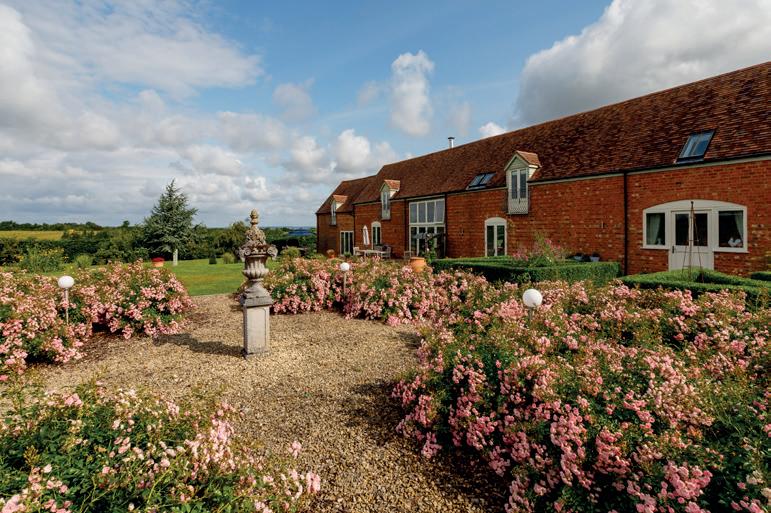
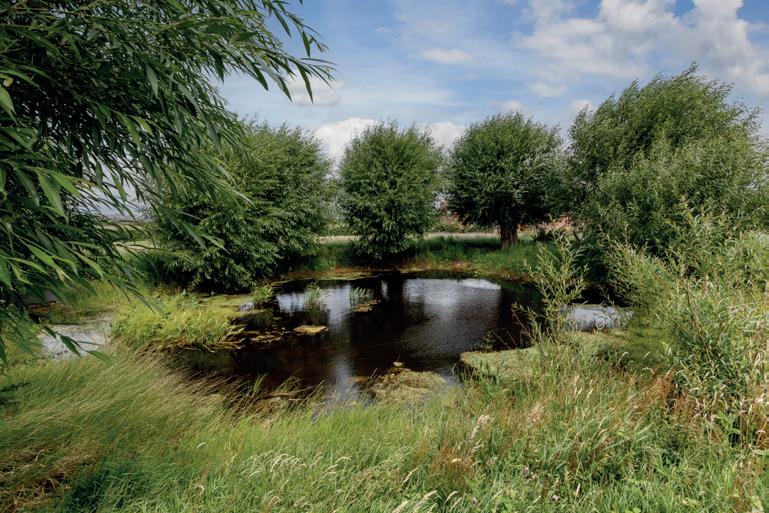

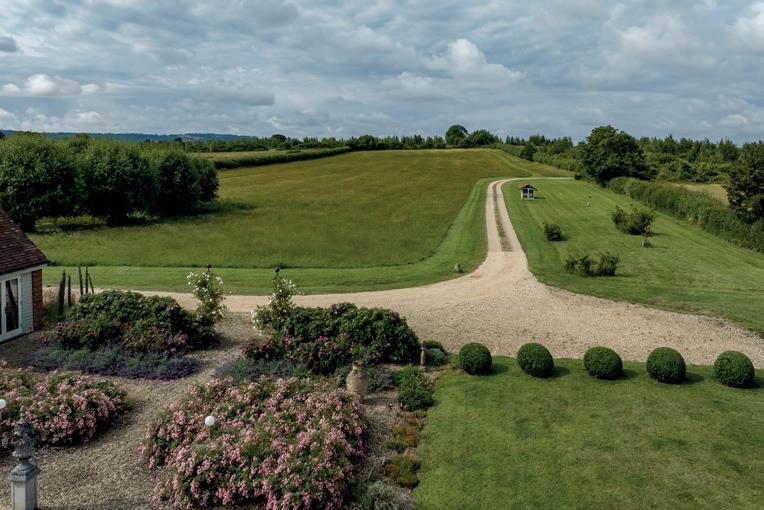

An impressive private six-bedroom barn conversion with stables, 12.50 acres and far reaching views.
Situation:
Bushy Hill Barn is constructed of brick under a tiled roof and dating from the 18th Century, Bushy Hill was converted in 2007 creating a stunning modern family home taking full advantage of the southerly aspect and open views. The property provides versatile accommodation with high ceilings throughout. There are two distinct but linked parts with a single storey wing providing the option of creating a separate self-contained annexe if required but serves equally well as a guest wing. A bespoke kitchen is in the centre of the house with full height windows, seating area with log burner, a two-oven electric Aga and Aga module, central oak island and integrated Meile appliances including dishwasher, combination oven, fridge and a wine cooler. A large dining room adjoins this area from where double doors open to the well-proportioned drawing room. The ground floor also provides a utility room off the kitchen and a very useful boot room and cloakroom off the main hall. There are four double bedrooms in the main barn served by three bathrooms to include a superb ensuite bathroom off the main bedroom. The bedrooms have great character with full height ceilings and enjoy superb distant views.
Guide Price £1,950,000





Imagine stepping into your garden and entering a space that feels like a private sanctuary - where luxury and elegance meets nature.
Our high-quality outdoor glass garden rooms are more than just an extension of your home; they are a statement of sophistication and style, meticulously designed for those who seek the finer things in life.
Crafted with the finest materials, our glass garden rooms provide an unrivalled panoramic view of your surroundings, bringing the beauty of the outdoors into the comfort of your home. Each structure is made from high-performance, thermal glass that ensures year-round comfort, keeping you warm in winter and cool in summer. The sleek design seamlessly integrates with any architectural style, whether modern or traditional, making it the perfect addition to your estate.
These bespoke garden rooms are tailored to fit your lifestyle. Whether you envision a serene home office, a stylish entertainment area, or a peaceful retreat for morning yoga, the possibilities are endless. The sophisticated,
minimalist design creates an atmosphere of elegance, while the surrounding nature enhances a sense of tranquility and calm.
Designed for the discerning homeowner, our garden rooms are built to withstand the elements while maintaining their flawless beauty. Each room is a masterpiece of engineering, blending innovative technology with superior craftsmanship. The addition of custom features such as underfloor heating, integrated lighting, and bespoke furniture allows you to create a space that is uniquely yours.
Invest in a high-quality outdoor glass garden room and elevate your living experience or show off your pride and joy. Discover a new way to enjoy your property—a space where elegance, comfort, and nature coexist in perfect harmony. Transform your garden into a luxurious haven and redefine what it means to live well.
For more information, contact OpenSky
Creating equine facilities for the future with innovative infrastructure
t: 01304 273620 I e: info@jelka.co.uk I www.jelka.co.uk Welfare. Efficiency.






An exquisite Georgian farmhouse with excellent equestrian facilities on the southern foothills of the Quantock
Situation:
An exquisite Georgian farmhouse restored and presented to an exemplary standard with a pool, pool house, and excellent equestrian facilities on the southern foothills of the Quantocks.
Grove Farm is quite exceptional and provides a rare opportunity for those seeking a conveniently situated country home having been restored and refurbished to an exceptionally high standard with the best quality materials, fittings and decorations together with energy saving specifications providing stylish and comfortable living. Acquired by the present owner four years ago the property has been totally restored and thoughtfully designed and remodelled to provide well proportioned and arranged rooms yet retaining a wealth of character, which all comply with the Grade II Listing. The interior design includes Jim Lawrence fittings, a Tom Howley kitchen with Miele and Liebherr appliances and Farrow & Ball colours throughout.
Guide Price £2,100,000


Creating equine facilities for the future with innovative infrastructure
t: 01304 273620 I e: info@jelka.co.uk I www.jelka.co.uk

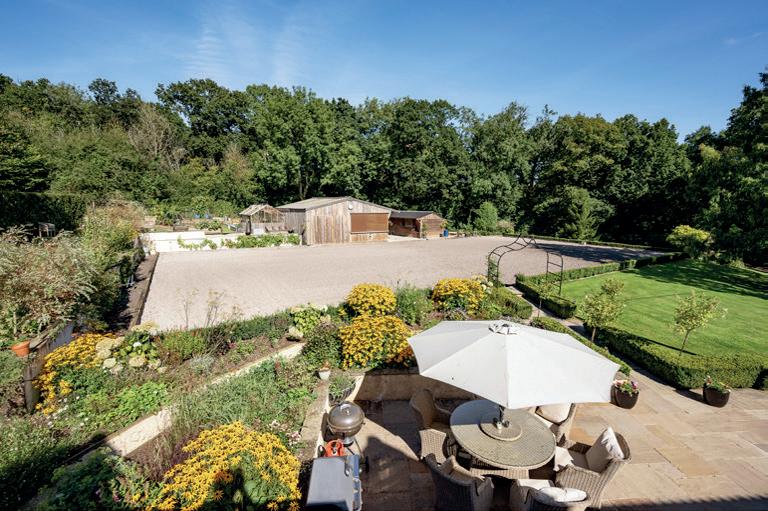



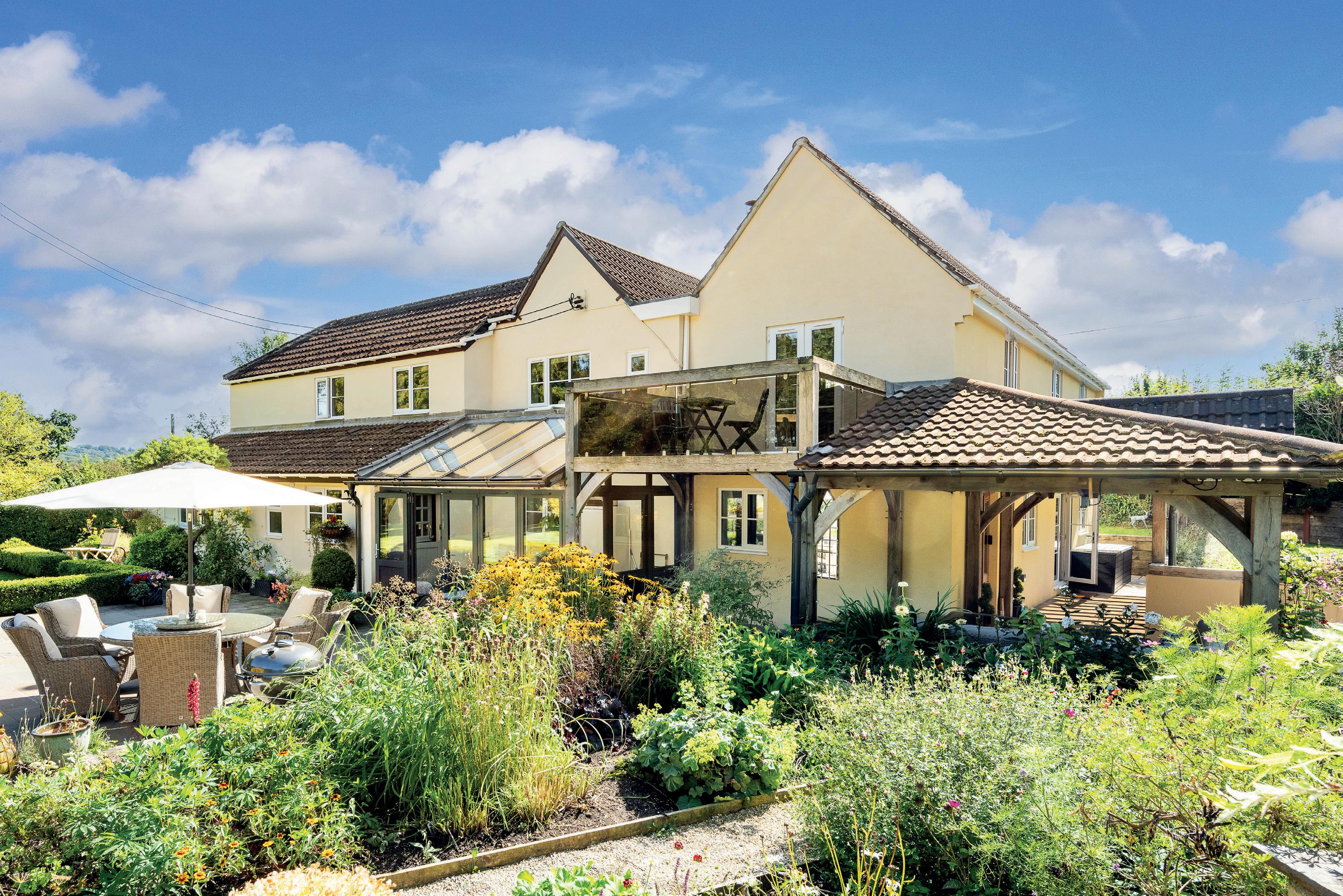
A well presented family house with extensive outbuildings and equestrian facilities standing in gardens and land of about 12 acres
Situation:
Bought in 2012 by the current owners, Mill Hayes House has been extended and comprehensively refurbished with meticulous attention to detail. The kitchen has been significantly enlarged and a new glazed roof installed; other attributes include oak laminate and ceramic tiling on the ground floor, underfloor heating in the main hallway, office, dining room, utility and shower room together with the two en-suite bathrooms at first floor level. The Harvey Jones kitchen is well fitted with a Fisher and Paykal 2 drawer dishwasher, electric AIMS 4 oven AGA, and an induction hob. Mill Hayes House has excellent equestrian facilities. Close to the menage is a stable block with Monarch internal stables and tack room and opposite is an electric solarium, with gas hot wash and an adjoining loose box. In addition, there is a Claydon 30 ft 4 horse walker (ask agent for more details). Planning permission has been granted for a two bay garage with room over.
Guide Price £1,680,000













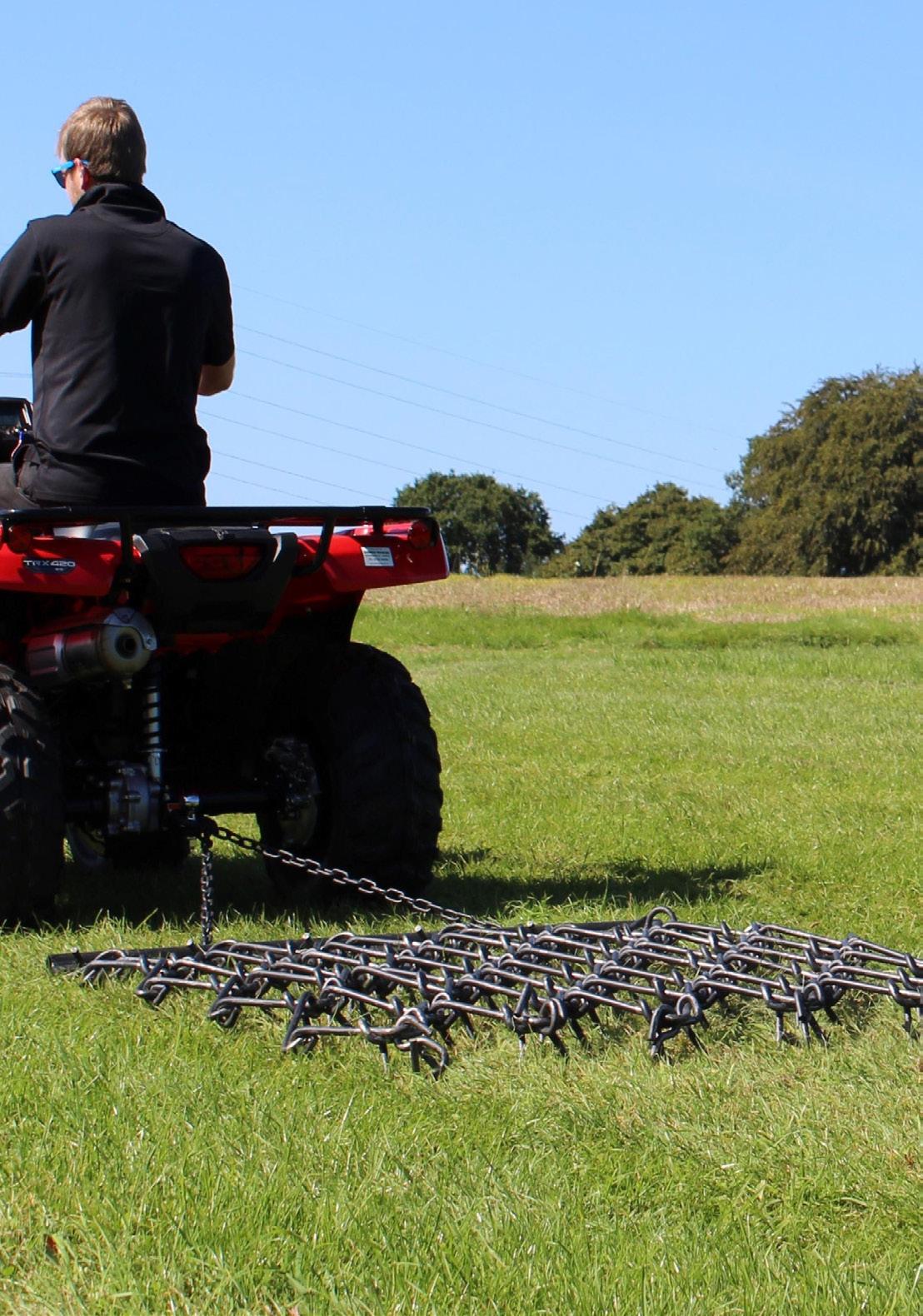
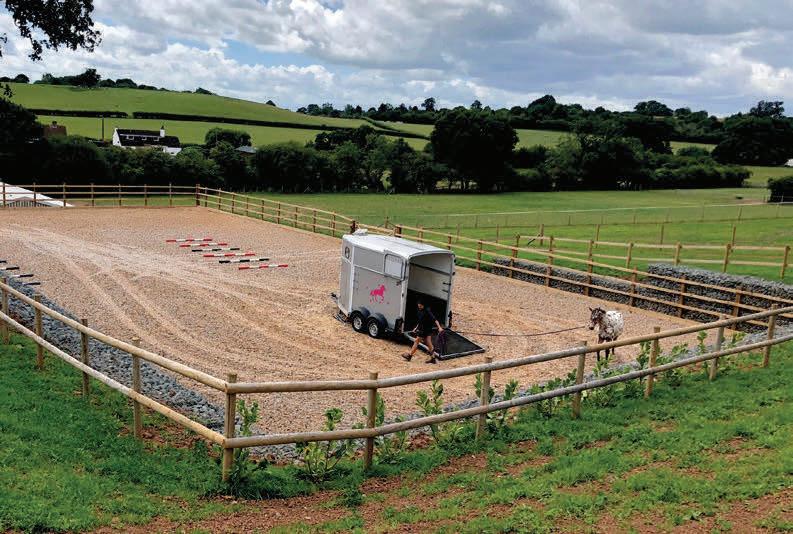











Efficiency. Performance. Creating equine facilities for the future with innovative infrastructure
t: 01304 273620 I e: info@jelka.co.uk I www.jelka.co.uk
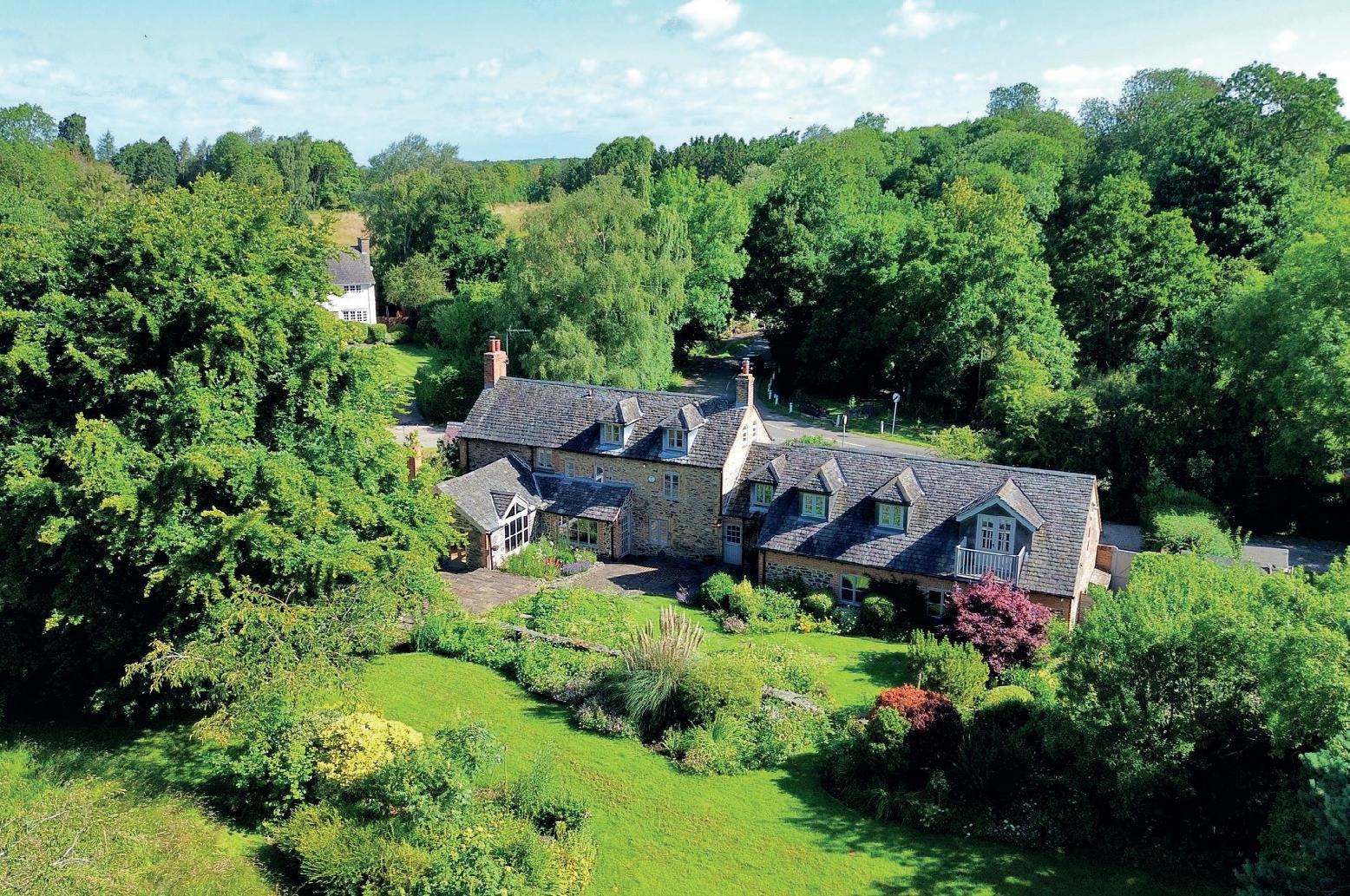




Situation:

Arguably one of the finest character properties in the Charnwood Forest, Valley Cottage is a stunning Grade II listed property enjoying an idyllic setting in this much sought after village boasting a vernacular appearance blended beautifully with the very highest quality interior and deceptive living Accommodation hich has been further enhanced. Set in just under 2 acres of stunning gardens and paddock, this heavily beamed cottage offers an impressive reception hall with four reception rooms, bespoke fitted kitchen, utility and WC, a total of five bedrooms including a recently converted and stunning master bedroom suite with its own luxury en-suite bathroom. There are three further bath/shower rooms in the main building making this ideal for various guest en-suite bedrooms or for a family. A truly wonderful home, the likes of which are incredibly rare to the market.
Guide Price £1,395,000


t: 01304 273620 I e: info@jelka.co.uk I www.jelka.co.uk

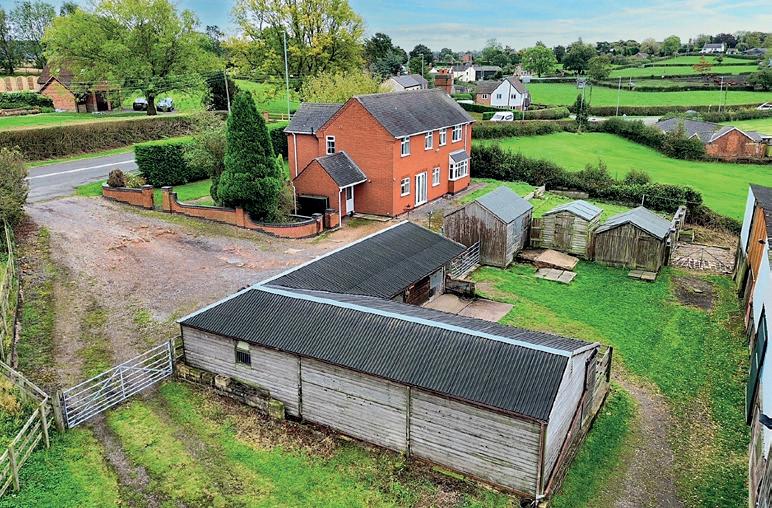



Situation:

An outstanding Equestrian opportunity to purchase a substantial detached family home, with circa 6.5 Acres, Stables, Barn and 20x40 Manege. Offering a lovely opportunity for a family to have their own horses and ponies on site just outside the back door. There is ample off road parking for a number of vehicles, including Horse lorries and trailers, along with a large Barn used as storage and offering a great practical space as Hay/tack store or workshop etc. The main house was believed to have been built circa 1990’s and offers an exciting opportunity to modernise and extend (subject to planning permission) to create an impressive home overlooking the elevated views at the rear. The property is set in a small village within rolling Leicestershire countryside close to local amenities of Ashby de la Zouch and Coalville, along with ease of access to the M1/A42.
Guide Price £850,000







Situation:

Set in an exceptional landscape within the heart of The National Forest, Bleak House is an outstanding opportunity for the equestrian buyer and/or developer. Offering 14 acres of beautifully maintained paddock land and a purpose built stable block, along with 2 barns having class Q permission for immediate conversion with separate road driveway access and a third barn available for application for Q Conversion from 2025 with a further separate driveway. The main house offers 2,872 sq ft of accommodation, with immense potential to create a ‘dream home’ project overlooking breath taking views. There is extensive garaging, outbuildings and further individual timber stables, making this a perfect home for equestrian buyers. The property sits within the Blackbrook Beauty Walk and in the shadow of the historic Mount St Bernard Abbey. A personal inspection of this rare property opportunity is essential to appreciate the potential and stunning surroundings.
Guide Price £1,750,000


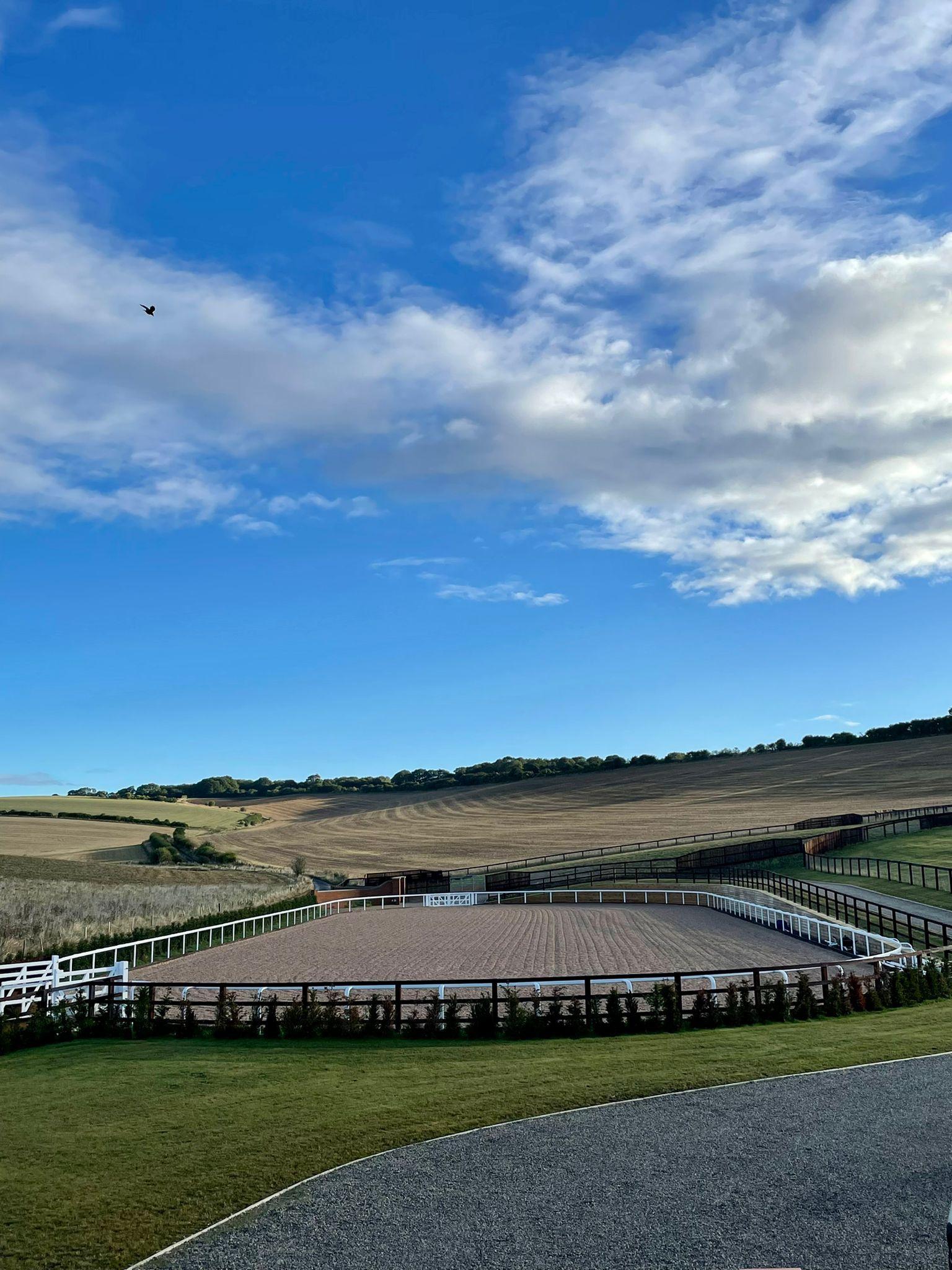

Hypercoat Prime -made from coldpressed Hemp Seed Oil, one of the healthiest food oils available and one of the best sources of Omega Oils (3,6 & 9)
Hemp Seed Oil comes from a sustainable source without the use of pesticides or fertilisers and does not contain heavy metals and toxins such as Mercury which can be associated with fish oils from ocean pollution. The Oil is free from any known allergens (Lactose, Gluten, Nuts etc) and is low in saturated fat and makes a substantial contribution to the intake of essential fatty acids which are required for good health. There are many benefits of Hemp Seed Oil which

•Reduces excessive moulting
•Maintains coat and skin condition and eradicates the itch, scratch cycle
•Attains and maintains a healthy blood pressure
•Attains and maintains a healthy cholesterol
•Nourishes dry skin, blotches and lesions
•Also relieves pre-menstrual stress
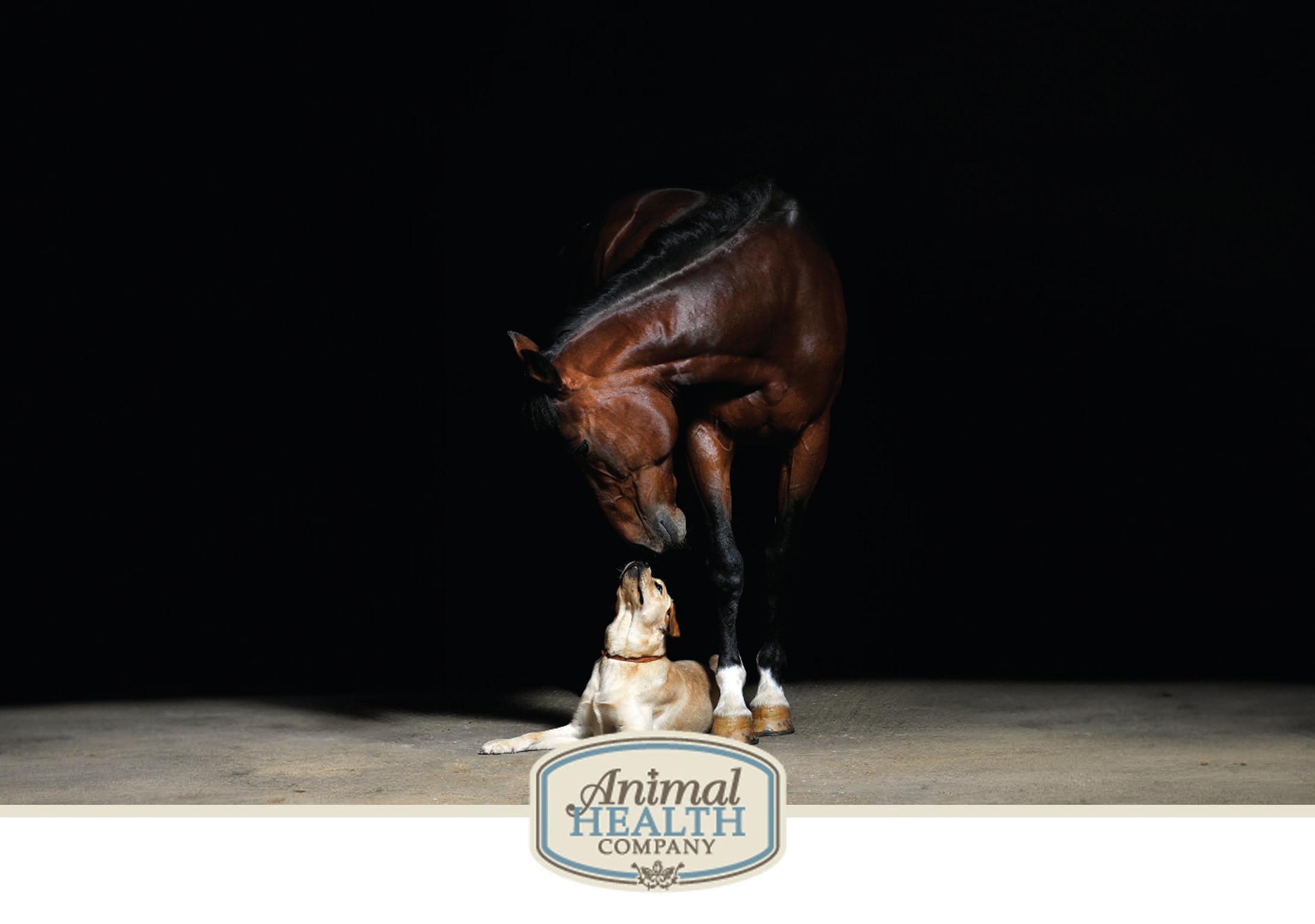
Odor-Kill is a very powerful deodoriser, know for its ability to kill even the strongest smells.
20mls is added to one litre of water making it great value for money, as one litre is £10.50 and can make 50 litres of solution. You can use odor-kill in the house, spray on carpets, dog beds, cat litter trays, to mop the floor, add to washing machine when washing dog beds. But you can also use it outside on patios, astro turfed gardens any place where a smell persists and its safe for your pets to go on when still wet. Used by many professional kennels, but available to all in sizes from a 500ml ready to use spray or in concentrated form from 250ml up to 20litre containers. Prices start at £6.00.

•Enhances stamina “Best deodoriser. I absolutely love Odor Kill. The smell is lovely and it’s very economical.” SUE THOMPSON









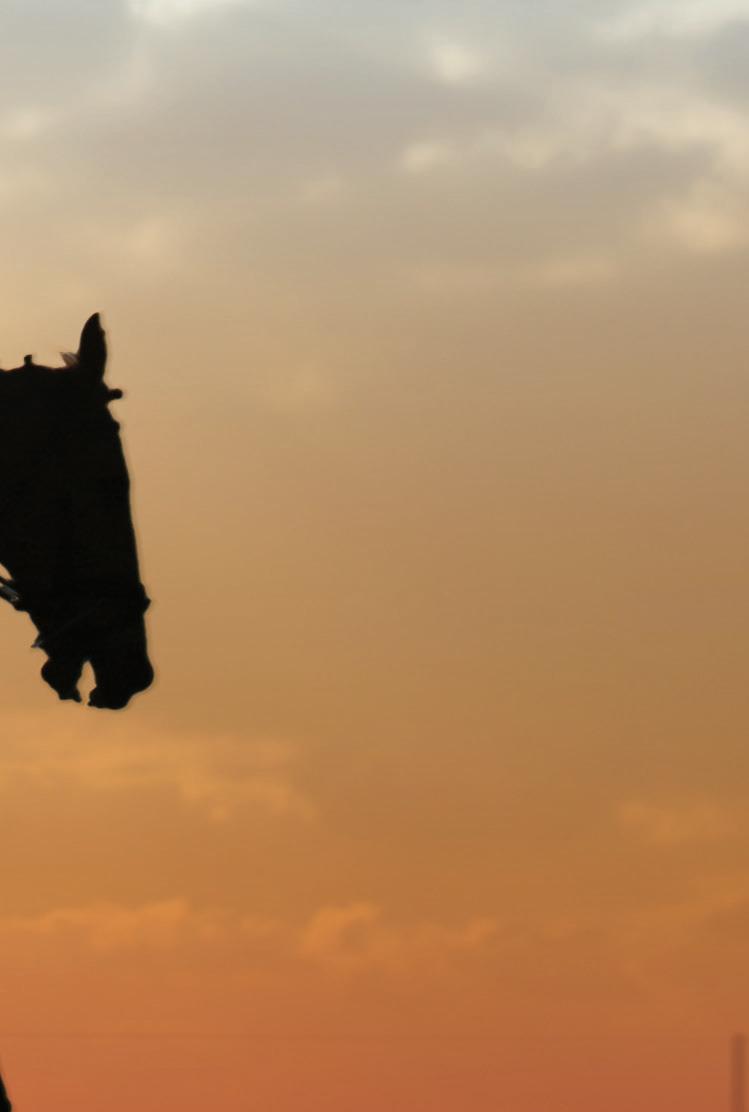





Spirulina is a fascinating nutrient with a rich history and a multitude of health benefits. Science has fallen in love with this amazing blue-green algae which is known for its nutrient-rich profile. Spirulina has proven to be an absolute superfood for horses, offering a multitude of health benefits, backed by scientific research. This nutritional powerhouse is celebrated for its rich content of essential amino acids, antioxidants, vitamins and minerals, making it an excellent supplement for equine health.
MEETING YOUR HORSE’S NUTRITIONAL NEEDS
Every horse owner worries that their horse might be missing out on valuable vitamins, minerals or micro-nutrients. And for many of us, trying to analyse ever-changing hay and forage sources is neither practical nor economical. Spirulina is a nutritional powerhouse and so packed with nutrients that even NASA relied on Spirulina to ensure that the astronauts met all their dietary needs. If you are looking for a
supplement that will supercharge your horse’s nutritional status, Spirulina may be the practical and cost-effective answer for your horse.
HEALTH BENEFITS IN ABUNDANCE
Spirulina is recognised for its high protein content, providing all essential amino acids required by horses. For horses that struggle to keep topline, for young growing horses or horses engaged in regular exercise, Spirulina serves as a complete protein source, so your horse can build musculature and improve condition.
Spirulina also contains critical antioxidants that are necessary for recovery and growth. Spirulina’s antioxidants extend beyond mere protection; they also work hand in hand with the immune system. Spirulina helps maintain a balanced state of cellular health, helping to ward off infections while avoiding overactive immune reactions that can lead to inflammation. For athletic horses, reducing exercise-induced oxidative damage can also improve muscle endurance and yield
Spirulina has been a nutritional supplement for astronauts since the early days of space exploration. NASA conducted research to find the most nutrient-rich food to keep the astronauts healthy under the stress of space travel. NASA chose Spirulina due to its high nutritional value, long shelf life and ease of use in powdered form. So don’t underestimate its nutritional benefits for your horse!!! He will feel so healthy, he will be “over the moon!”


... Because you love your horse

faster recovery times. In plain terms, this means that your horse will enjoy exercise more, recover faster and perform better.
Spirulina’s antioxidants also support external health. The skin and coat of a horse can reflect its inner well-being and Spirulina’s rich array of antioxidants contribute to a lustrous coat and healthy skin. A beautiful mane and coat is the sign of a robust antioxidant defence system at work and a strong immune system means less vet bills and a healthier, happier horse!
Spirulina has also proven to bolster the health of horses with equine metabolic syndrome (EMS). The supplementation of Spirulina has been associated with weight loss and improved insulin sensitivity in horses with EMS. In fact, after supplementing with Spirulina, research showed that the study horses exhibited less “crestiness” in their necks, reduced fat deposition, improved condition and significantly better metabolic health.
The anti-inflammatory properties of Spirulina are also being explored for their potential to protect joint cartilage which could be a game-changer for maintaining equine joint health in performance horses where joints get significant stress. Many equine disciplines really challenge your horse’s joints, such as the fetlock and coffin joints of showjumpers, and the hocks/tarsus of dressage and western reining horses. A groundbreaking study highlighted the protective effect of Spirulina on joint cartilage, suggesting that Spirulina might be a valuable supplement for maintaining joint health in demanding equine sports. Spirulina may also benefit aging horses, as supplementation may mitigate or delay the onset of chronic or degenerative joint conditions
Spirulina is a natural anti-inflammatory and antihistamine and a powerful tool to support skin and lung health. At some
The Aztecs were not just an advanced civilisation, but they were also nutritional trendsetters. They harnessed the power of Spirulina long before it became a wellness trend. This superfood was the ancient equivalent of a protein shake, boosting the endurance of Aztec messengers and enhancing the musculature of their warriors. Science has shown the same benefits for your equine friend, promoting muscular endurance, topline and improved recovery!





* A potent source of vitamins, minerals and micronutrients
* May alleviate the symptoms of sweet itch
* Supports respiratory health, especially during seasonal allergies
* Bolsters the immune system and promotes healthy skin and coat
equinesynergy.net





TRY THE ENTIRE EQUINE SYNERGY RANGE
point in their life, most horses struggle with breathing disorders, seasonal allergies or unexplained coughing or wheezing. Many horses begin each training session with hacking and snorting and others suffer from coughs at certain times of the year.
!DOGGONE AMAZING NEWS!
The Spirulina is a great supplement for your dog too! Spirulina boasts more beta-carotene than carrots which might turn your dog’s vision into superhero status – helping him with important tasks like spotting squirrels! And because it is rich in protein, your canine friend will have better muscles and a beautiful shiny coat. Spirulina’s antioxidants are like tiny shields protecting your furry friend from the inside out. Just sprinkle some on his food and voilà, you’ve got a fourlegged, tail-wagging picture of health!

Studies have shown that Spirulina can significantly support respiratory health, making it a valuable supplement for horses with allergies, inflammatory airway conditions, heaves or other respiratory disorders. Some studies have even shown that Spirulina may reduce headshaking which can have many causes, but may be related to allergies or sinus irritation.
Spirulina is considered safe for long-term use, so your horse can enjoy the benefits during all stages of life. Spirulina is available in various forms, such as powder and pellets. However, the powder form is highly versatile and can be mixed directly into your horse’s regular feed or dissolved in water or oil. This allows for easy customisation of dosage, depending on your horse’s specific needs. This is particularly useful for horses that may be picky eaters.
When starting to supplement with Spirulina, it is important to introduce it gradually to allow your horse’s digestive system to adjust. Begin with a smaller dose and incrementally increase to the recommended amount over several days or weeks. The typical feeding rate for a 500kg horse is about 20 grams twice a day, but this can vary, based on the horse’s activity level and overall health.
Like kids when they first try vegetables, some horses may be hesitant to consume Spirulina due to its unique smell and taste. In such cases, you might start by adding increasing amounts daily to your horse’s feed, so the horse becomes accustomed to the taste and smell. And
Sweet itch affects a myriad of horses each year and is the biggest challenge that many horse owners will face. This condition occurs when a horse has an extreme reaction to midges and can be a heartache for horse owners as they try to alleviate the relentless scratching of their horse. Spirulina promotes healthy skin in horses and may be a real aid to horses that suffer from sweet itch. There is growing evidence that supplementing with Spirulina during the warmer months can help to alleviate the terrible itching and also help to prevent the skin infections that often follow. Many owners start their horses on Spirulina in early spring to give their horses the best chance of avoiding the sweet itch reaction in the ensuing summer months.
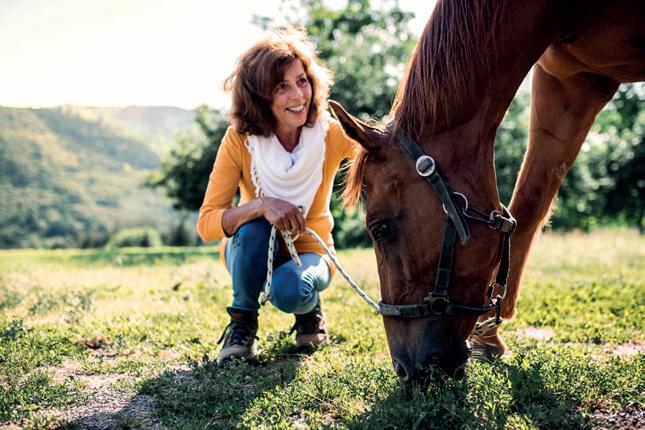
to make it more palatable, mixing Spirulina into wet feeds or combining it with a little molasses or coconut oil can help when first introducing the supplement. Many horse owners have had success mixing it into a mash with other favourite treats to encourage acceptance. However, you will find that once horses get accustomed to Spirulina, they are happy to consume it with their regular feed.
Spirulina is a superfood with an extraordinary promise for equine health. Its amazing benefits are supported by science and its role in equine nutrition makes it a remarkable component of a healthy equine diet. Research continues to explore the full potential of Spirulina for horses. With ongoing research, the scope of Spirulina’s benefits continues to expand, promising a natural way to support the wellbeing and longevity of all our equine companions
Always consult with a veterinarian before making any significant changes to your horse’s diet, particularly as it may pertain to any pre-existing medical conditions in your horse.

... Because you love your horse

MAXIMIZING SPENDING ON COST-EFFECTIVE MULTIPURPOSE FEEDS AND SUPPLEMENTS
In the world of equine nutrition, finding the right balance between cost-effectiveness and providing your horse with the necessary nutrients can be a tricky challenge. With the wide variety of feeds and supplements available on the market, it can be overwhelming to decide what is best for your horse without breaking the bank. However, with some strategic planning and tips, you can maximize your spending to ensure your horse stays healthy and performs at its best.
It is important to assess your horse’s individual needs and your available budget and to consider factors such as your horse’s age, breed, activity level, and any specific health concerns to help you determine what nutrients are essential for your horse’s well-being and performance. Set a realistic budget keeping in mind that quality should not be compromised for cost. Consider choosing multipurpose feeds and supplements that offer a wide range of nutrients in a single product. This will not only save you money but also simplify the feeding process. Multipurpose feeds and supplements often include a balanced blend of vitamins, minerals, proteins, and fats to support overall health and performance.
Focus on providing your horse with a balanced diet that includes high-quality hay or pasture, along with a multipurpose feed that meets its nutritional requirements. Make sure the feed and supplements you choose contain key nutrients such as protein, amino acids, vitamins, and minerals to support muscle development, energy production, and overall well-being.
Purchasing feed and supplements in bulk or taking advantage of seasonal sales and discounts can help you cut down on expenses. You can also explore natural and homemade supplements that are affordable and provide additional health benefits for your horse.
Once you have established a feeding plan that works for your horse, it is important to monitor its progress regularly. Keep an eye on its weight, muscle tone, coat condition, and overall performance to ensure that it is getting the right nutrients from the feed and supplements. Make adjustments to the feeding schedule as needed based on your horse’s changing needs and response to the diet. Consult with a veterinarian or equine nutritionist if you have any concerns about your horse’s health or nutritional requirements.
With careful planning and consideration, you can work smart, not hard, when it comes to providing your horse with the best nutrition without breaking the bank.










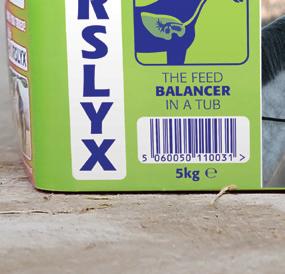


















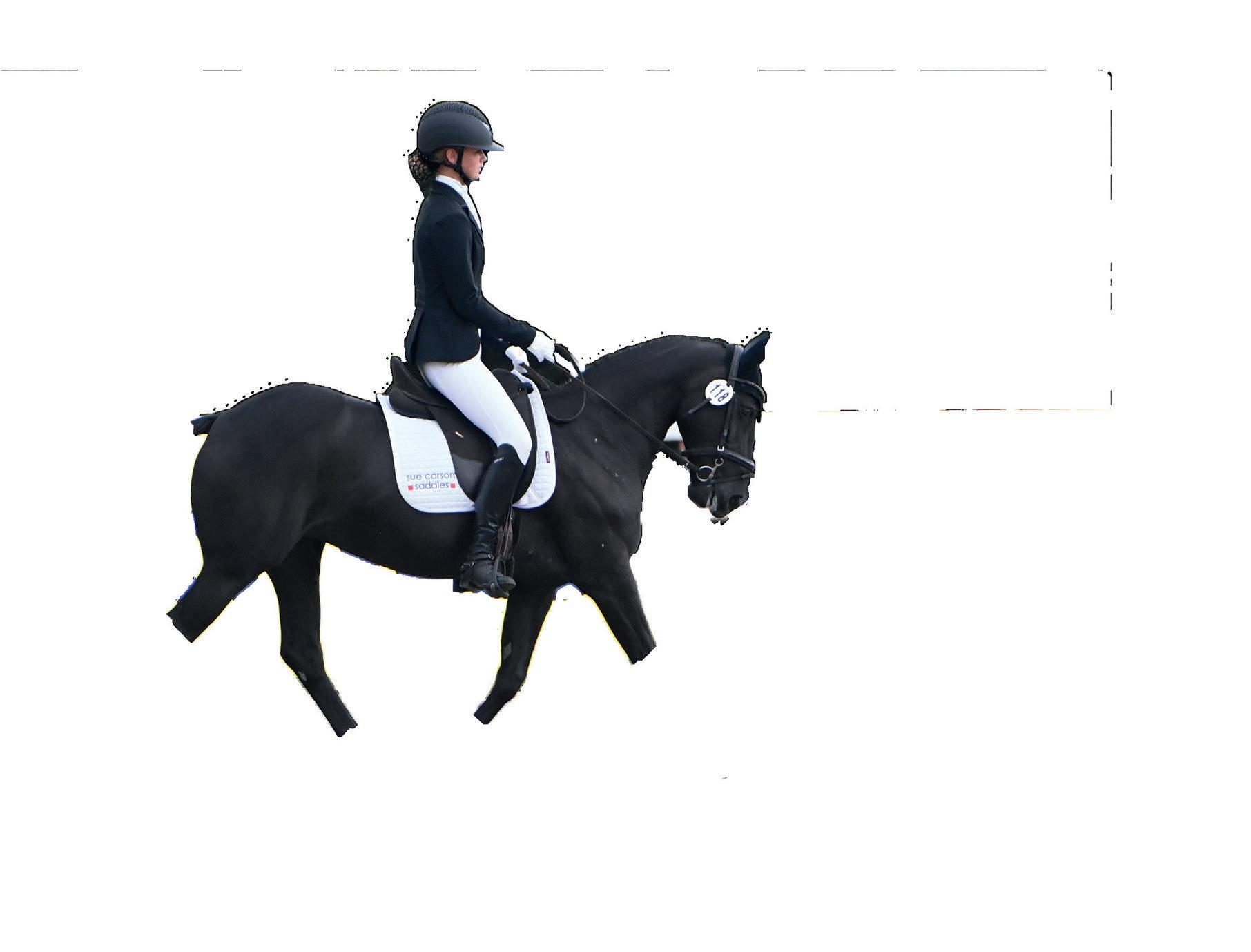
equine sport and are excited to welcome Freya Alderson as their new ambassador. Freya, who’s 16 , competes in British Dressage as part of the North and East Youth squad.
As a child, Freya was happy grooming and picking out feet for her father’s horses, and then at eight, the family found her

represented the N&E region and England at BD Youth Home Nations in August.
Freya, feeds an Emerald Green Feeds forage-based fibre diet to Precious, Brando and Poppy and she’s already enjoyed visiting the farm during harvest to see her horses’ feed being made.
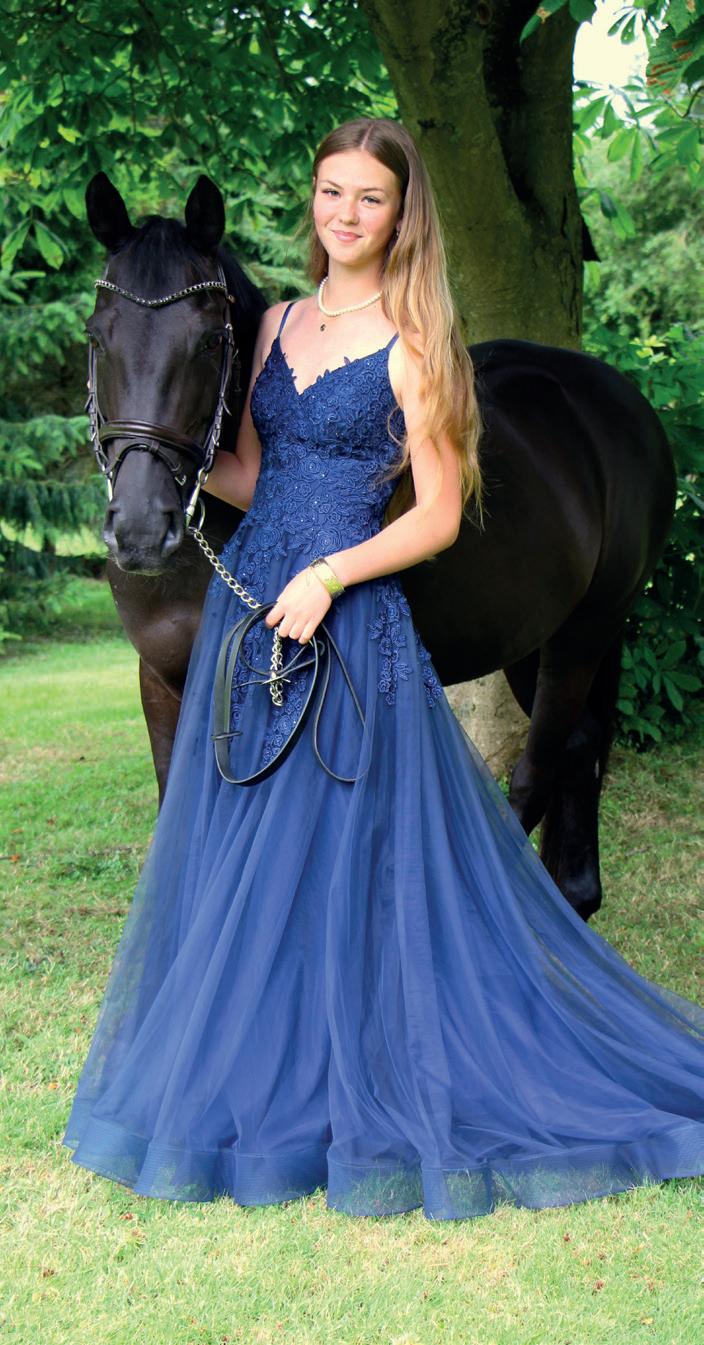

Proud sponsor of Ros Canter World & European Eventing Champion and Badminton Horse Trials Winner 2023
and relevant diet




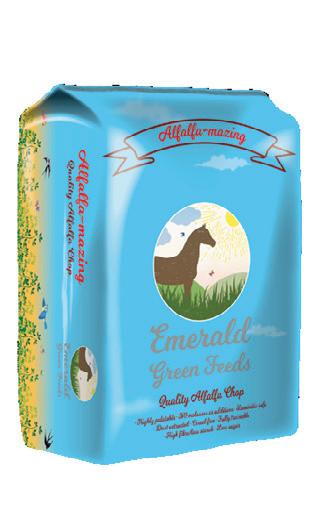

“We continue to have excellent results
with the pellets and chop from
Emerald
Green Feeds” Ros
Canter

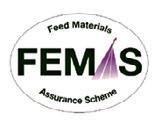

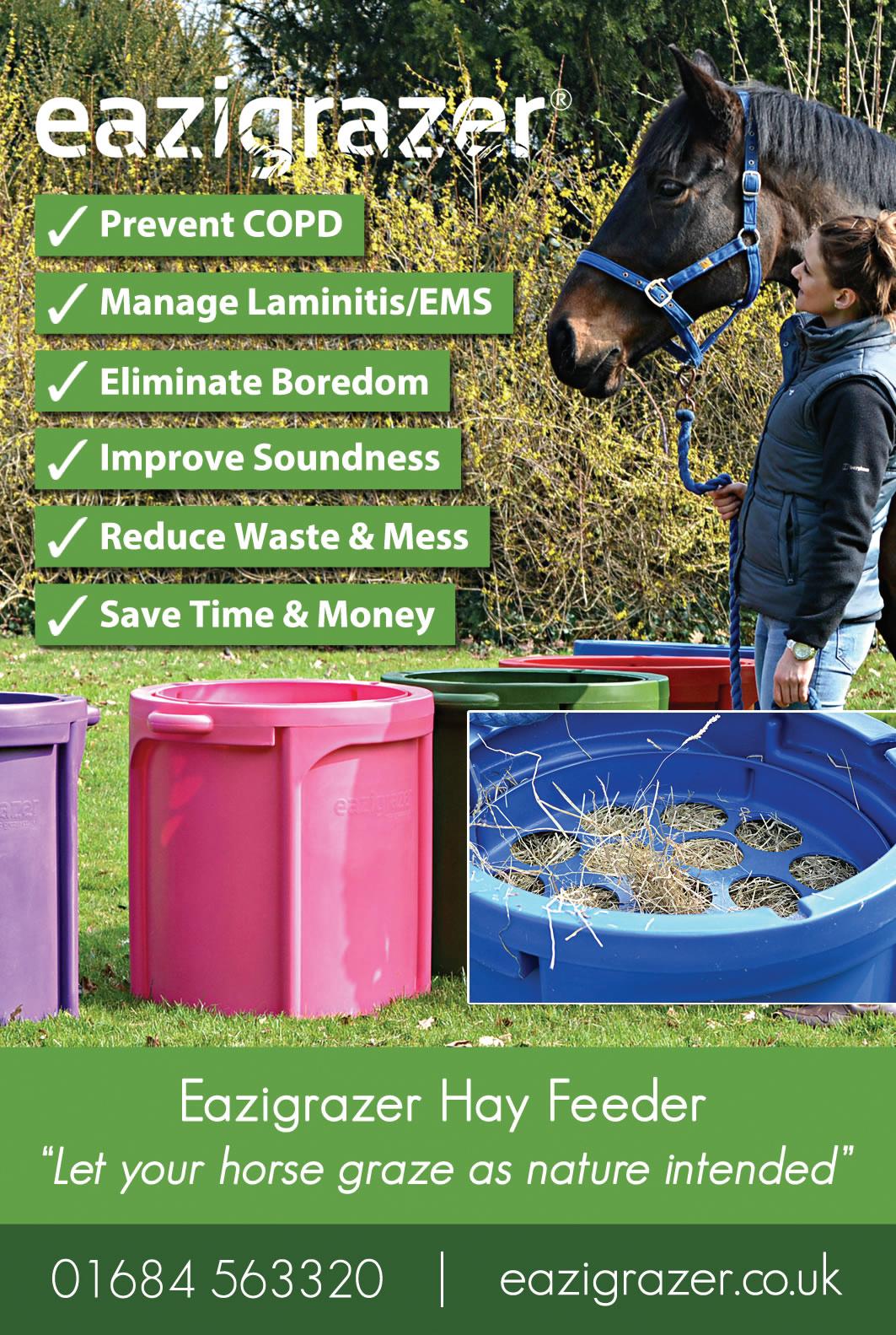


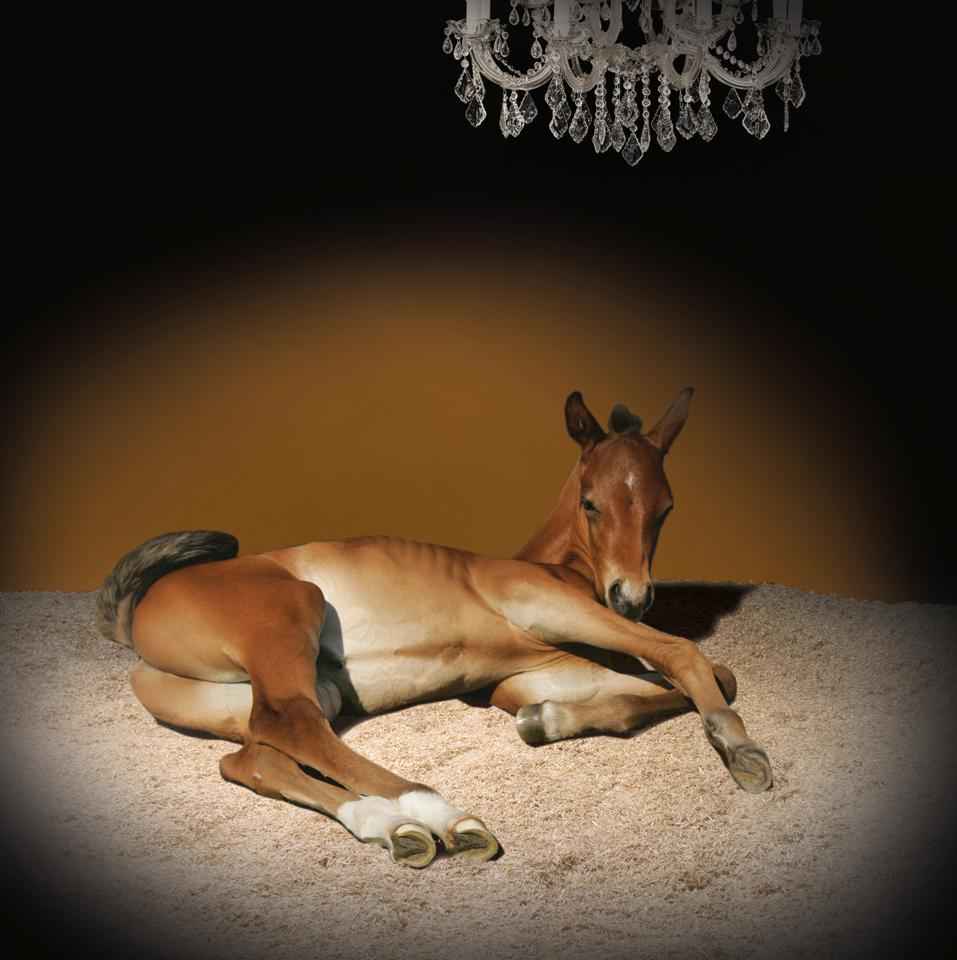
•
•
•
•
•


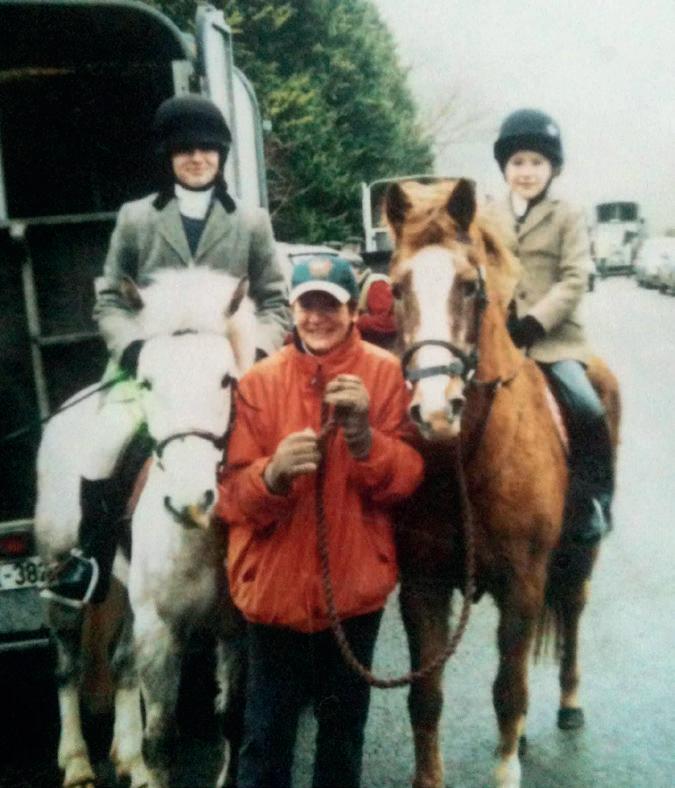
Growing up in the Power family, I’ve always been immersed in the world of grass seed. Our family has been in the business for five generations, and we’ve seen it all when it comes to grass. But despite this deep-rooted knowledge, I never imagined how crucial it would be when it came to caring for my beloved horses.
A move to a new home with fertile land, that had been in grass for some time, presented a particular challenge for one of our ponies, a Connemara called Millie.
I’ve always had a soft spot for Connemaras. They’re lovely ponieshardy and relatively easy to keep, but not without their challenges. One problem that can trouble this breed is laminitis.
Understanding why Connemaras are prone to this condition requires a bit of history. These ponies come from the rugged west of Ireland, where they were bred to survive on sparse grazing – they are hardy and capable of living off very little. Over the years, we’ve had our share of laminitic ponies, and managing the condition has always been a delicate balancing act - restricting feed, soaking hay, and ensuring regular exercise. Unfortunately, there’s no one-size-fits-all solution, and it often comes down to trial and error.
Once in her new home, Millie developed laminitis which eventually got so severe I feared we might lose her. After months of recovery, I realised that if I wanted to truly help Millie, I needed to go back to the roots – literally.
Given my family’s background, I knew that grass was likely to hold the key. The fields were predominantly sown with perennial ryegrass, a species that’s been bred for high yield and digestibility. This is great for dairy cattle but less ideal for horses and ponies, particularly those prone to laminitis. Ryegrass can contain anywhere from 15% to 26% sugar per kilogram of dry matter, and for horses, especially those with conditions like laminitis, that high sugar content can be problematic.

In my research and conversations with vets, the issue of sugar kept coming up. I tried soaking hay to reduce the sugar content and restricted Millie’s turnout time, but I needed to do more. I realised that the small, sugar-rich shoots of ryegrass that regrow after grazing might be causing more harm than good.
Whilst perennial ryegrass is the most grown grass in the UK for grazing and forage, there are many other species that are more lignified, with lower sugar content, which can grow just as well. I decided to turn to more traditional, lower-sugar grass species. That’s when the idea for the Millie Mix was born.

The ryegrass-free mixture was sown in the autumn, and by the spring we were cautiously optimistic. That year, Millie had her first trouble-free grazing season in years. To my surprise, the ponies even preferred the Millie Mix over the ryegrass, a testament to its palatability.
After years of battling laminitis, Millie’s condition was under control. The Millie Mix certainly seemed to be a part of this positive outcome, and I’m hopeful that its benefits will continue for years to come with many laminitic horses and ponies.
Julie Power runs Meadowmania, a seed company specialising in natural horse paddock seed. For more information about the Millie Mix and their complete range of paddock seed mixtures, scan the QR code, visit www.meadowmania.co.uk or email shop@meadowmania.co.uk


When it comes to choosing the best bedding for your horse, there are several options available in the market. Each type of bedding comes with its own set of benefits and drawbacks, and as a responsible horse owner, it’s important to weigh these factors carefully before making a decision.
Before diving into the types of horse bedding available, let’s discuss some key factors to consider when making your selection. The ideal horse bedding should provide comfort, absorbency, and ease of cleaning. Here are some important features to look for when choosing horse bedding:
1. ABSORBENCY: A good horse bedding should be highly absorbent to soak up moisture and keep your horse dry and clean.
2. COMFORT: The bedding should be soft and comfortable for your horse to lie down on without causing any discomfort or sores.
3. EASY TO CLEAN: Cleaning out your horse’s stall is a regular chore, so


it’s important to choose bedding that is easy to clean and maintain.
4. DUST-FREE: Some types of bedding can produce dust, which can be harmful to your horse’s respiratory health. Opt for dust-free bedding options to keep your horse safe.


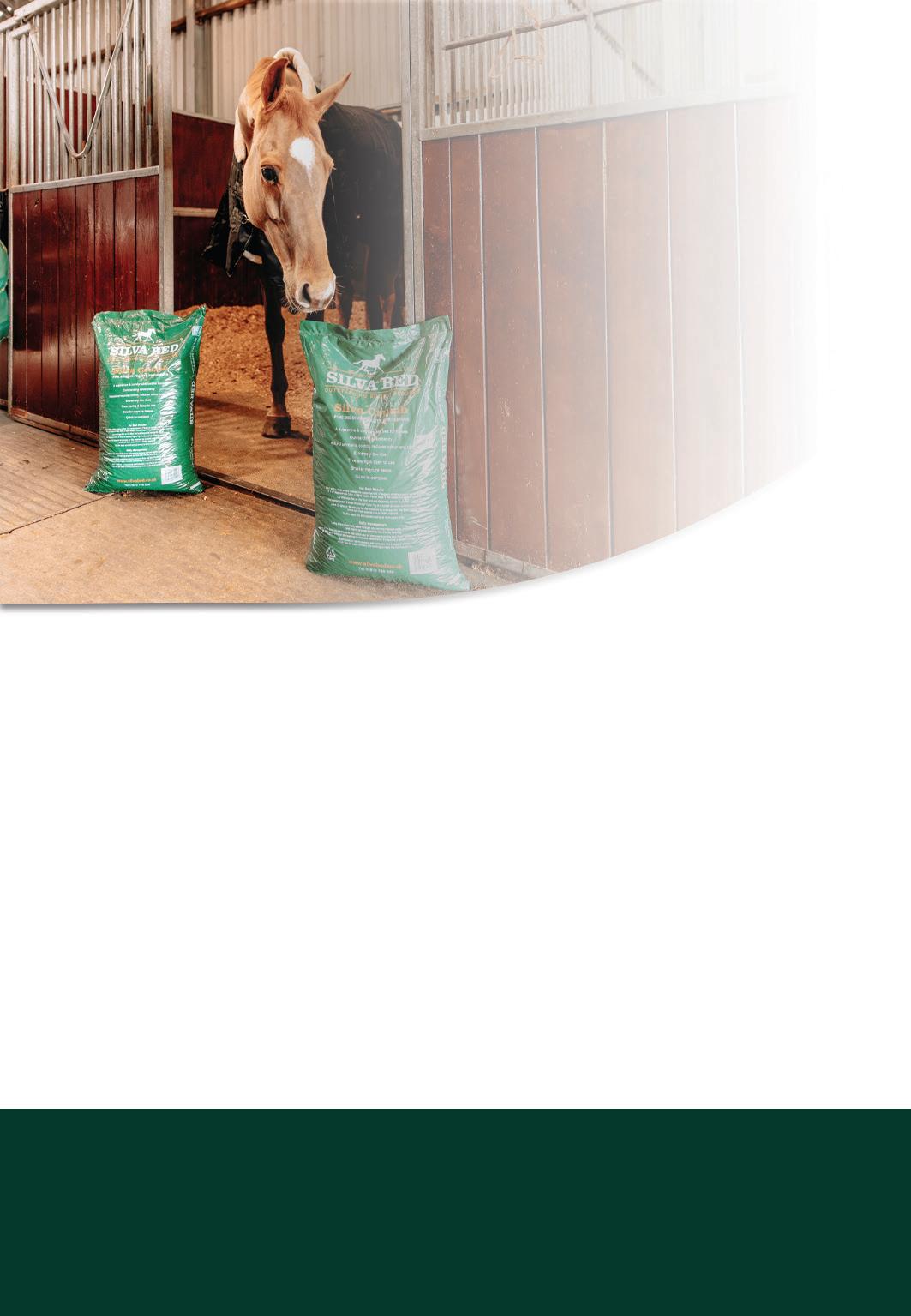
3 pallet sizes available order

5. COST-EFFECTIVE: Consider the cost of the bedding and how long it will last before needing to be replaced. A cost-effective option will save you money in the long run.
TYPES OF HORSE BEDDING
Now that we’ve covered what to look for in horse bedding, let’s explore the different types available on the market:
1. STRAW: Straw bedding is a traditional option that is affordable and readily available. It provides good insulation but can be dusty and less absorbent than other options.
2. WOOD SHAVINGS: Wood shavings are a popular choice for horse bedding as they are highly absorbent and comfortable for horses. However, they can be more expensive than other options.
3. PELLETED BEDDING: Pelleted bedding is made from compressed sawdust or paper and offers excellent absorbency. It is easy to clean but can be dusty if not properly moistened.
4. SHREDDED PAPER: Recycled paper bedding is a eco-friendly option that is highly absorbent and dust-free. It is also cost-effective and easy to dispose of.



1. STRAW:
Benefits: Affordable, readily available, good insulation.
Negative Points: Dusty, less absorbent, can be hard to clean.
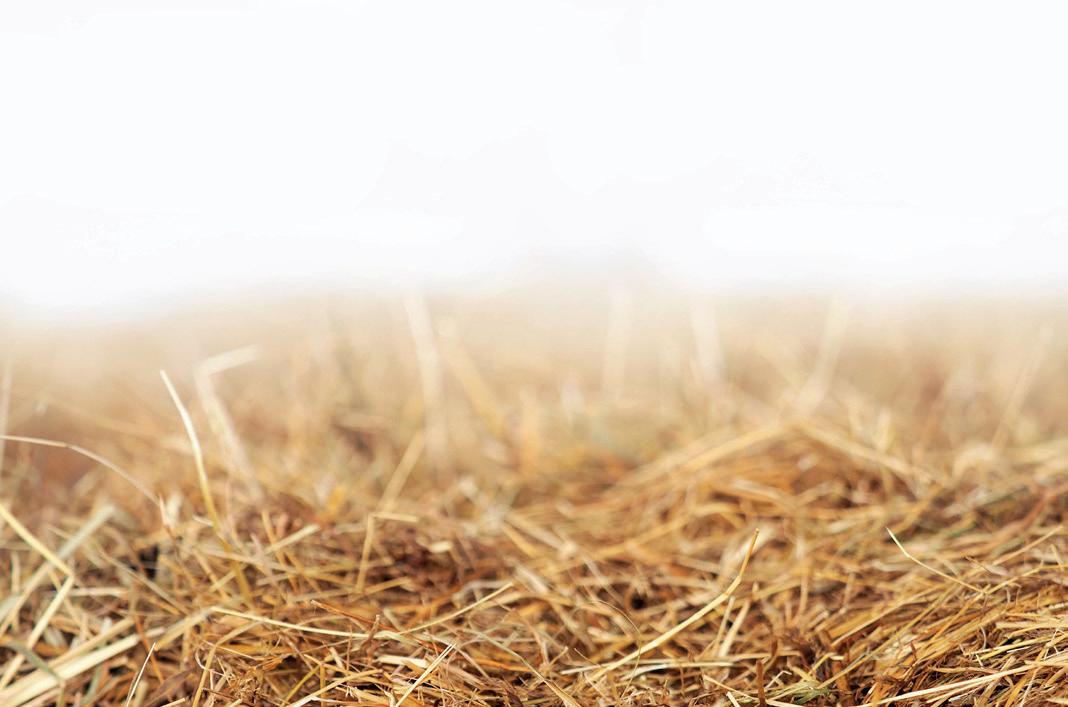
2. WOOD SHAVINGS
Benefits: Highly absorbent, comfortable, readily available.
Negative Points: More expensive, can be messy to clean, may contain dust.

3.
Benefits: Excellent absorbency, easy to clean, low dust.
Negative Points: Can be expensive, may require more frequent replacement.

Benefits: Eco-friendly, highly absorbent, dust-free.
Negative Points: Not as readily available, may be less comfortable for horses.clean, may contain dust.


HOW TO MAKE YOUR HORSE BEDDING GO FURTHER AND SAVE MONEY
To make your horse bedding last longer and save you money in the process, consider the following tips:
• Regularly clean out your horse’s stall to prevent the buildup of waste and moisture.
• Add fresh bedding as needed to maintain comfort and absorbency.
• Use a deep-litter method to reduce the frequency of complete stall cleanouts.
• Consider mixing different types of bedding to find the perfect balance of comfort and affordability.
Choosing the right horse bedding is essential for your horse’s health and well-being. By considering factors such as absorbency, comfort, and cost-effectiveness, you can select the best option for your equine companion. Remember to weigh the benefits and drawbacks of each type of bedding to make an informed decision that meets both your horse’s needs and your budget.





As the UK’s leading freely distributed,
publication Your Horse & Country Magazine really does have it covered. From unearthing treasured country homes and estates in our exclusive Your Country Property feature, to exploring the seasons as they change, bringing you a host of dreamy days out, fashion tips and shopping essentials!
Also working hard with our in-house vet to keep on top of your equine health care, Team YHC explore real-life symptoms and scenarios in order to keep you in the know!
For just £18.99 a year we can bring all of this and much more direct to your door. Simply complete and return the subscription slip below.
In the vast equestrian landscape, finding ideal bedding for horses can be daunting. But nestled in South Shropshire, Concord Straw Pellets, a family-run business, offers a game-changing solution. Co-founded by Suzanne and Rosie, horse enthusiasts, Concord Straw Pellets produces straw pellet bedding from top-quality British Wheat Straw, revolutionizing horse care routines with sustainability and convenience.
Proudly produced on their farm, Concord’s bedding ensures superior comfort and hygiene. Notably, their dust-extracted pellets undergo rigorous processing, heating to over 100 degrees, eliminating bacteria and dust particles. This creates a plush, safe resting place, promoting horse well-being.
Their excellence is evident in awards like the “Overall Best Bedding” in Dr. David Marlin’s
study. Concord’s bedding saves time and money, needing only 6-8 bags initially and 1-2 bags weekly for top-ups. Its absorbency reduces waste and muck pile, streamlining upkeep and allowing more time with horses.
Beyond equestrianism, Concord serves smallholders, farms, and offers cat litter, demonstrating versatility and commitment. Free delivery for orders of 50 bags or more ensures accessibility, aligning with their ethos of innovation and excellence.
Concord Equestrian, a family business driven by passion and innovation, has transformed horse care. Suzanne and Rosie’s dedication to quality and safety has earned them acclaim, promising a lasting impact on the equestrian world.



* Super absorbent
* Cushioned bed
* Reduced waste
* Affordable
* Easy to use
* 100% Quality British Wheat Straw
* Fully dust extracted
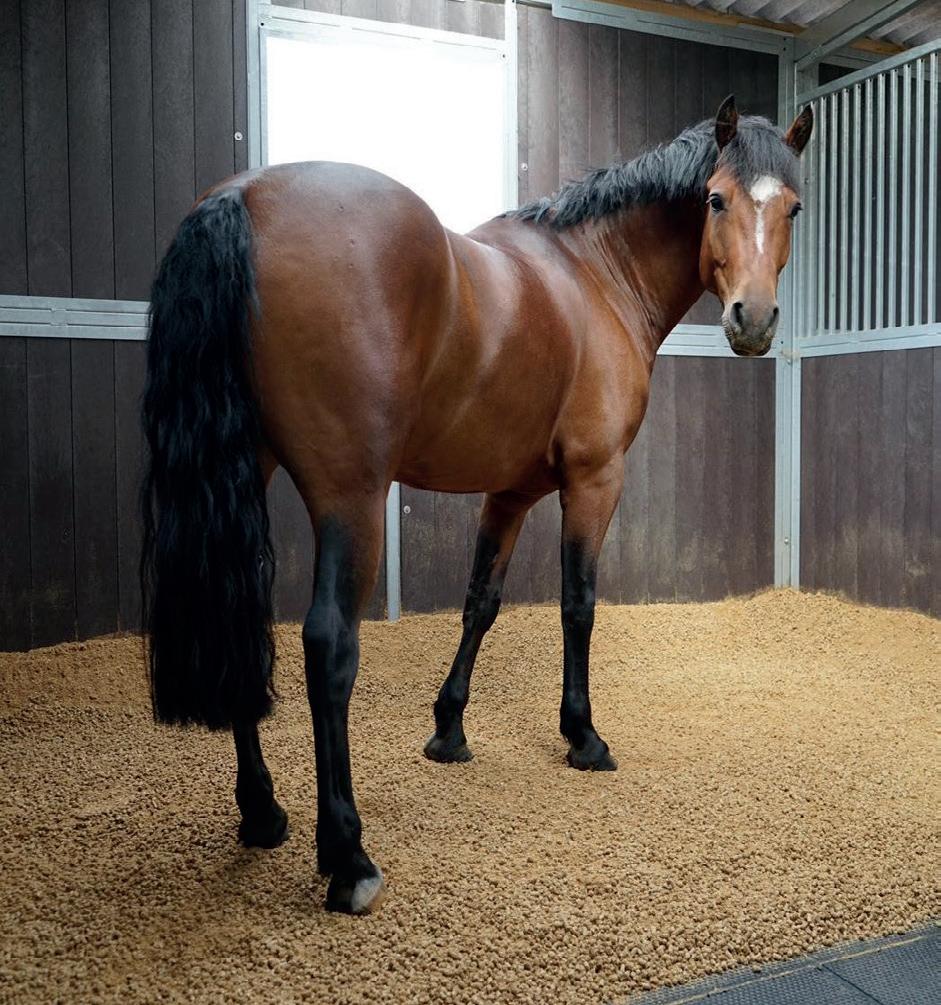
EASYFIX Equine - Why everyone should have rubber matting in their yard!

EASYFIX Equine Rubber Matting Solutions are recognised as the best quality and highest performing products in the marketplace. They provide a complete solution for many of the world’s leading horse breeders, owners and trainers. Their portfolio includes horse walker tiles, diamond deluxe glue and sealed rubber stable matting, a variety of walkway matting, wetpour and rubber paving solutions.
EASYFIX are committed to being the world’s no.1 provider of equine matting solutions, fences and hurdles. They understand the importance of comfort and safety for your horses, which is why their passion is to protect yours!
To meet our customers’ expectations, we believe that ongoing research & development is vital. R & D is undertaken by our in-house product development team to ensure that our products meet our rigorous standards.
EASYFIX Equine have a dedicated, state-of-the-art laboratory located onsite which ensures that their entire product range meets the necessary standards from the initial product concept through to the research and development phase, right through to product launch.
They are continuously innovating and striving towards excellence. Over the last 25 years, they have worked with leading bodies within the equine industry to develop an extensive range of fences, hurdles & rubber matting solutions.
EASYFIX Equine is used, trusted and recommended by riders, trainers, equestrian venues and racecourses around the globe.
EASYFIX Equines latest innovation – The Diamond Deluxe Glued & Sealed Stable Matting
The Diamond Deluxe Stable Matting System boasts a unique and patented design.
It combines grip and comfort with ease of cleaning.
The glued and sealed system provides a hygienic and biosecure environment for your horse within its stable. It provides maximum comfort for your
William Fox-Pitt
British Eventer & Olympian

horse, whilst ensuring maximum grip. The unique design not only looks aesthetically pleasing but also allows for easy cleaning and mucking out due to the diamond finish on the mat. The enhanced comfort of the mat aids in rest & recovery. The Diamond Deluxe also comes with the option to add an 8mm layer of PU latex foam on the underside of the mat, which creates a cushioned top surface providing maximum comfort for your horse.
Greatly reduces bedding costs
Easy to clean and maintain
Mats are bonded to create a fully sealed, hygienic and non-porous floor
Provides an excellent grip underfoot when lying down, getting up and rolling over
The rubber provides thermal insulation and an anti-fatigue surface
For more information on EASYFIX Equines extensive range www.easyfixequine.com or call +353 9096 43344


Jemima Haydon from London International Horse Show gives us the lowdown on this year’s
London International Horse Show 2024 is set to bring its share of thrills and spills and of course its special festive charm, with its dates this year being the week just before Christmas. The first International Horse Show took place in Olympia London in 1907, it was called to a halt during the war years but was revived by Raymond Brooks-Ward in 1972. It took place in the exhibition halls at Olympia for nearly 50 years and now, for the third year in a row, is setting up shop at London ExCeL (easily accessible via the Elizabeth Line). Spectators can expect five days’ worth of rip-roaring first-class equine competition and displays spanning Under 25 classes

giving up-and-coming riders the chance to compete on a global stage all the way up to FEI World Cup™ Jumping status which showcases the world’s best riders, and don’t forget the added extra of the Kennel Club Dog Agility classes, the Defender Shetland Pony Grand National and the equestrian displays. Visitors can also spend their time perusing the expansive Shopping Village to find everything from top-tier equestrian gear to festive favourites or soak up the atmosphere with a glass of fizz in one of the many hospitality experiences on site.
London International Horse Show is only one of a handful of global events that host

FEI World Cup™ Qualifiers for all three disciplines: Show Jumping, Dressage and Driving. These Qualifiers are part of the FEI World Cup™ series and play a huge role in the annual competition circuit. They bring a whole host of avid fans to cheer on each sport, and of course the best riders from all over the world come to London to compete for the titles. The first FEI World Cup™ qualifier for jumping was introduced at Olympia in 1979 and has run every year since, promising undeniable rivalry between riders jumping difficultly constructed courses with enormous fences up to 1.60m. In addition, FEI World Cup™ Dressage was introduced in 2004 and following that the FEI World Cup™ Driving in 2013.

This year’s Show will commence on Wednesday 18th December with the FEI Dressage World Cup™ (Grand Prix) presented by Bret Wilson Dressage International Ltd and supported by Horse & Hound as the inaugural event in the International Arena. This kicks off the duo of Dressage classes, with the FEI Dressage World Cup™ Freestyle to Music presented by Bret Wilson Dressage International Ltd and supported by Horse & Hound taking place the following evening. The Freestyle class is when the riders can really show off the prowess of their horses, manoeuvring them into beautiful shapes and paces in time with their chosen soundtrack. Following Olympic team bronze medal success in Paris in August and respective second and third places at The Show in 2023 having both scored over 75% in the Grand Prix and over 83% in the Freestyle, Charlotte (Lottie) Fry and Becky Moody are likely to have all eyes on them as they take the centre stage hoping to defend their British titles.
Show Jumping classes will take place each day, kicking off with the merry Champagne Taittinger Mistletoe Stakes and for those with guts of steel, the infamous LeMieux Puissance – last year won by Guy Williams on the late Mr Blue Sky Uk. The London International Puissance record still stands at an amazing 2.31m (7ft 7 ins) set by Nick Skelton when he took on the challenge with Lastic as far back as 1978. The festive Show Jumping continues with The Santa Stakes, The Christmas Tree Speed Stakes and The Snowflake Stakes, and make sure you don’t miss the gripping Cavago Six Bar on Saturday 21st December: a competition where six jumps are set out equally spaced and heighted, usually with two canter strides in between, and each round the bars are raised higher until only one horse and rider combination jumps them all clear. The pinnacle of Show Jumping culminates with The Longines FEI Jumping World CupTM presented by Agria on the final day of The Show, Sunday 22nd December, last year won by Ben Maher on Enjeu de Grisien with a flying
clear in the jump-off narrowly beating his fellow 2024 gold medallist Scott Brash by 0.62s.
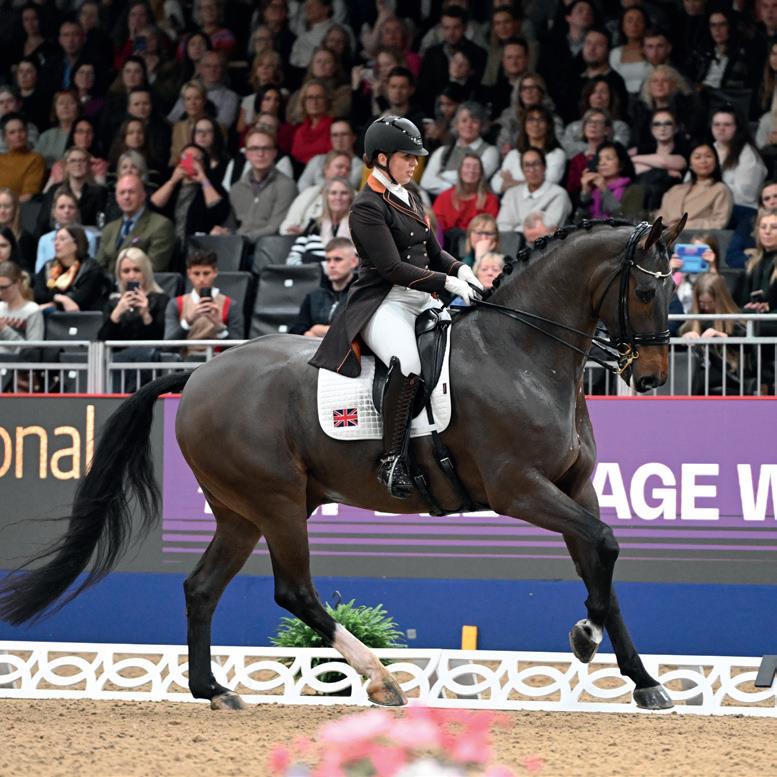

Friday 20th December will see the start of the FEI Driving World Cup™ leg in which Boyd Exell of Australia will aim to retain his winning title, having scored 136.35 in 2023, and having won the World Cup™ 13 times already. This continues into another session on Saturday 21st December where the final result will be revealed. Driving here sees four-inhand horse teams compete in one of the most adrenaline-fuelled equestrian disciplines by aiming to be the fastest team to complete a narrow course of obstacles without fault, testing resilience and fitness of both horse and rider. Outside the International Arena, the New Horizon Plastics London Arena located in the Shopping Village will host The London Showing Series, comprising 28 classes, running at five more than last year. These classes will include everything from in-hand to ridden, and small horse to ex-racehorse; they have been introduced to provide a comprehensive viewing experience for anyone and everyone. The commentator’s roles in this Series are two-fold; they will announce what the judges are looking for in each of the classes to give the audience full context as well as observing and sharing how each rider-horse performs.
the New Horizon Plastics London Arena will hold The LeMieux Masterclasses spanning Dressage, Jumping, Driving and Eventing Grassroots to Glory. These Masterclasses are a chance to watch experts in the field such as Richard Waygood MBE, British Equestrian’s Eventing Performance Manager, run a session with celebrity equestrians in an engaging and informative experience, featuring demonstrations of advanced techniques as well as practical, step-by-step exercises that can be implemented at home. These Masterclasses will offer a comprehensive exploration of the path to competitive success, tailored to inspire and educate riders of all levels and promise to be highlights of the Show.
The programme this year will again include The Markel Jockeys Jumping in aid of The Injured Jockeys Fund which will see exjockeys battling it out in the unknown (to them) world of Show Jumping. In addition, this year will see the return of popular Display, Lorenzo the Flying Frenchman who hasn’t performed at The London Show since 2011. Lorenzo and his team of eight to ten horses will showcase their groundbreaking ‘Action’ performance in a display of harmony and valour. Lorenzo will stand atop his galloping horses, clear obstacles, and orchestrate breathtaking sequences, embodying his reputation as he ‘flies’ around the International Arena. Pushing the boundaries of the extraordinary, Lorenzo never fails to captivate children, awe novices, and impress specialists alike.


Showing classes take place each day of The Show and in between them

Show Director Simon BrooksWard said, “We are delighted to welcome back Lorenzo after all these years. His display exemplifies the highest


level of horsemanship, showcasing an extraordinary bond and deep understanding with his horses. It is an honour to have him, and his team return to London International Horse Show, bringing their unique blend of glitz and glamour to the Show with an incredibly impressive display.”
A familiar favourite, the infamous Defender Shetland Pony Grand National sponsored by Defender will also return in December where audacious child jockeys will have a chance each day of taking home the trophy by being the fastest around the track, racing in their iconic colourful jockey silks on their pocket-rocket Shetlands. What’s more, The Kennel Club Dog Agility will take place in the International Arena and a variety of other dog agility classes in the New Horizon Plastics London Arena, seeing handler-dog combinations race against the clock in a bid to successfully complete a course of daring obstacles without fault.
Aside from the thrilling competition taking place in both arenas across equestrian and canine classes, there really is something for everybody throughout The Show at ExCeL.
The Live Zone will be

whole host of activities, talks

and Q&As offering the chance to meet and hear from some of your favourite riders and leaders of the industry. Named appearances include Meet and Greets with Meg Elphick and This Esme, a Meet the Defender Shetland Pony Grand National jockeys, a talk with the Show’s official charity partner, The RDA and daily Children’s Hobby Horse Activities. Make sure you are dressed to impress for the daily LIHSBest Dressed Competition or spend your day browsing the Shopping Village, now open from 9am each morning and closing 30 minutes after the evening interval each day. Experience a range of shopping opportunities for horse and rider, from equestrian clothing to jewellery, to all your tack needs. There will also be fashion, footwear, fine art, and sculpture

festive treats such as awardwinning Christmas liqueur which tastes like mince pies in a bottle and artisan vans offering a range of

warming delights. The Christmas Market will be a particular highlight area of the Show as it will have views over the Warm Up Ring and the main ring for the New Horizon Plastics London Arena.
The Show has wonderful hospitality options, with Private Boxes offering incomparable views over the International Arena, entertaining up to 16 guests and including a delicious meal, or the Phoenix Club Enclosure located next to the International Arena collecting ring where you can make use of the Restaurant and Bar all day, watch the riders warm up and enjoy VIP seating for the International Arena. Alternatively, upgrade to a first-class seat in the New Horizon Plastics London Arena Grandstand and benefit from the Equiyd London Areena VIP Bar too. This extra can be added to any ticket type including shopping only tickets so make sure you don’t miss out on a drink and sit down with a view after you’ve shopped until you’ve
You can purchase tickets for every performance and shopping only at www.londonhorseshow.com with discounts available for concessions and group bookings.



International Arena & New Horizon Plastics

WEDNESDAY 18TH

London Arena Scan

PLUS
Daily excitement from The Kennel Club Dog Agility, The Shetland Pony Grand National, and Lorenzo, the ‘Flying Frenchman’

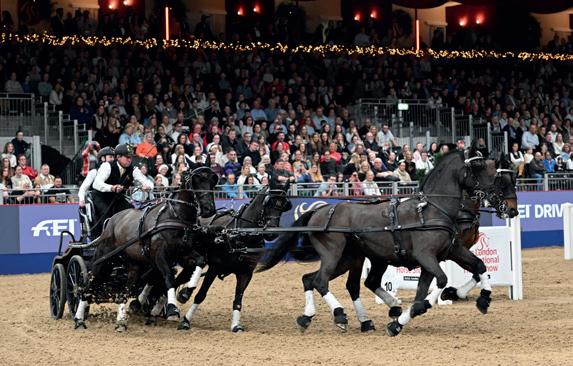
FRIDAY 20TH

The London International Horse Show
SSADL Grand Final
The FEI Driving World CupTM
The Christmas Tree Speed Stakes
Services Jumping Championship
Markel Jockeys Jumping in aid of
The Injured Jockeys Fund
The London Grand Prix
In The London Arena...
LIHS Showing Series Championships for Cob Type & Hack Type
The FEI Dressage World CupTM Grand Prix
The Pony Club Mini-Major
The Ivy Stakes
The Champagne Taittinger Mistletoe Stakes
The LeMieux Puissance
In The London Arena...
LIHS Showing Series Championships for Hunter Type, Riding Horse Type & Ladies Show Horse
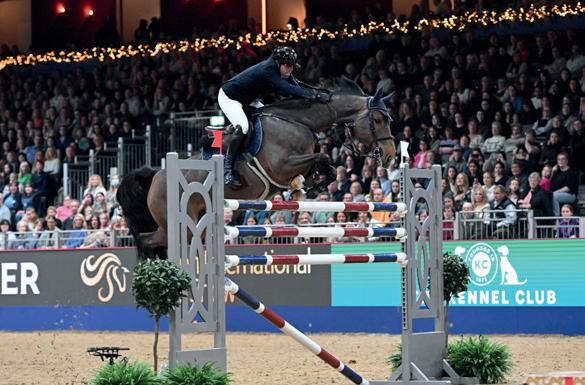
SATURDAY 21ST
The Mini Stakes (148cms)
The Six Bar
The Snowflake Stakes



THURSDAY 19TH
The Under-25 British Championship
The Christmas Pudding Speed Stakes
The Santa Stakes
The FEI Dressage World CupTM Freestyle to Music
In The London Arena...
LIHS Showing Series Championships for Working Type & Racehorse to Show Horse

The FEI Driving World CupTM
The Longines Christmas Cracker
In The London Arena...
LIHS Showing Series Championships for Coloured & Performance Ponies

SUNDAY 22ND

The BSPS Ridden Mountain and Moorland Championship – Preliminary & Final
The Agria 128cms Championship
The Longines FEI Jumping World CupTM
In The London Arena...
LIHS Showing Series Championships for Heritage Working Sports Pony and Worker Stakes





Jon Williams Stables help us prepare for the colder, wetter months
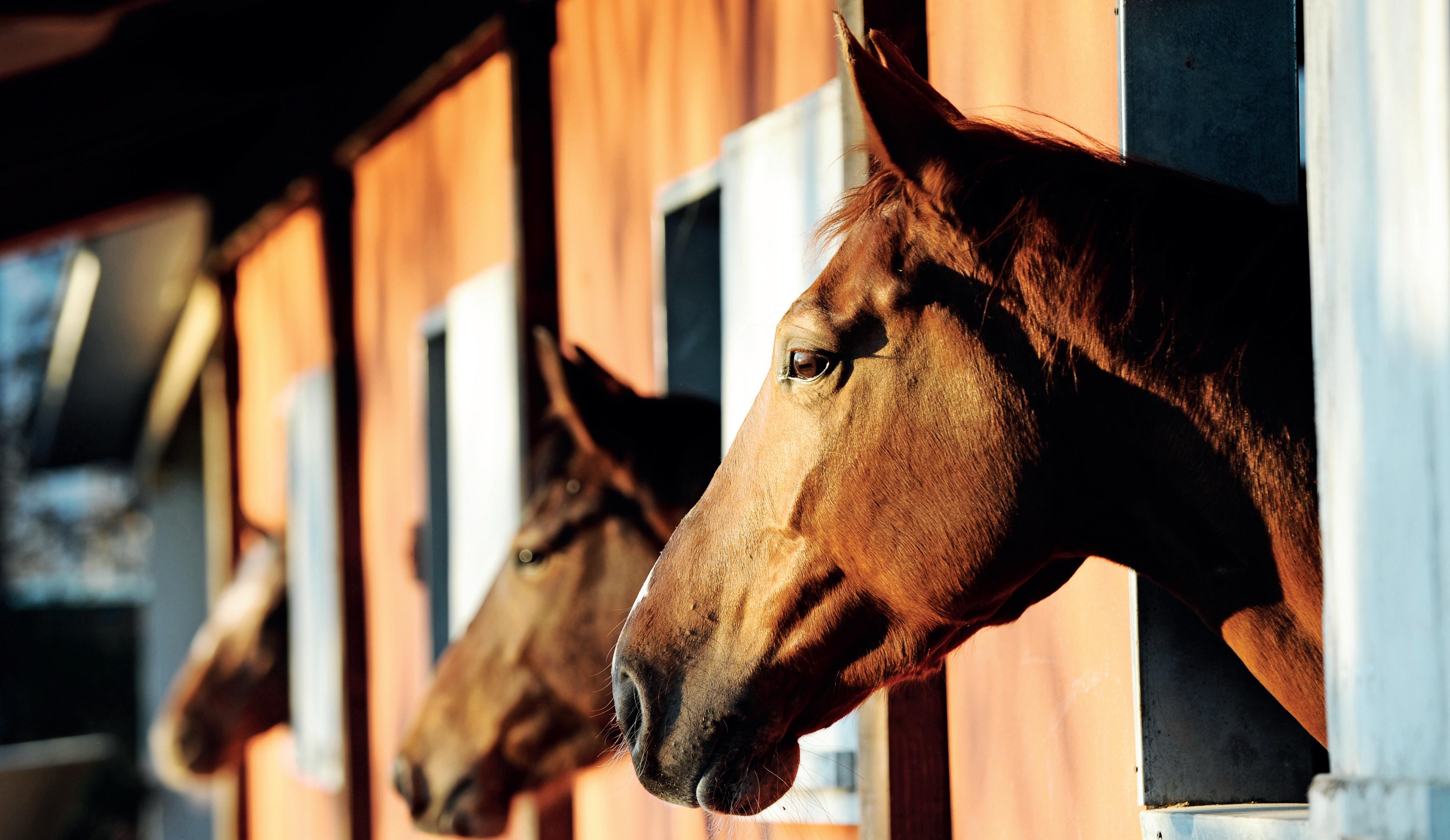
As we stand on the cusp of winter, the days are growing shorter, the wind bites a little harder, and the skies darken with the promise of rain, sleet, and snow. For horse owners, this shift signals more than just a seasonal change in wardrobe or routines; it is a critical time to think about the well-being of our equine companions. The colder, wetter months ahead demand proper preparation, especially when it comes to providing the essential protection of shelter. Shelter is more than just a roof overhead,so it’s important to look at the different types of structures available, and what factors should be considered when planning or


upgrading stables and shelters for the long winter months.
Horses are hardy animals, and their evolutionary history as free-ranging creatures has equipped them with natural defenses against the elements. However, even the most resilient horse needs shelter from the harsh conditions of winter, particularly when those conditions are prolonged or extreme.
Cold, wet, and windy weather can challenge a horse’s ability to maintain a stable body temperature, despite their natural winter coat. When a horse’s coat is wet or subjected to constant wind,
its insulating properties are diminished, making it harder for them to stay warm. Exposure to cold, wet conditions over extended periods can lead to discomfort, illness, or more serious conditions like hypothermia. Additionally, frozen or muddy ground can increase the risk of injuries due to slips or falls, and icy conditions can limit access to food and water.
Shelter not only provides warmth and dryness but also serves as a safe space for your horse to rest, relax, and avoid stress caused by the weather. During storms, horses instinctively seek protection, and offering them a well-designed, functional shelter is key to responsible horse care.

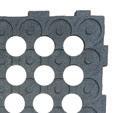



When it comes to providing shelter for horses, there’s no one-size-fits-all solution. The type of shelter you need will depend on your location, the number of horses you have, your budget, and the particular needs of your animals. Broadly speaking, horse shelters can be divided into two categories: mobile and static structures.
Mobile shelters are ideal for horse owners who want flexibility or who need to shelter horses in different areas of their property. These shelters are typically easy to move and do not require planning permission,



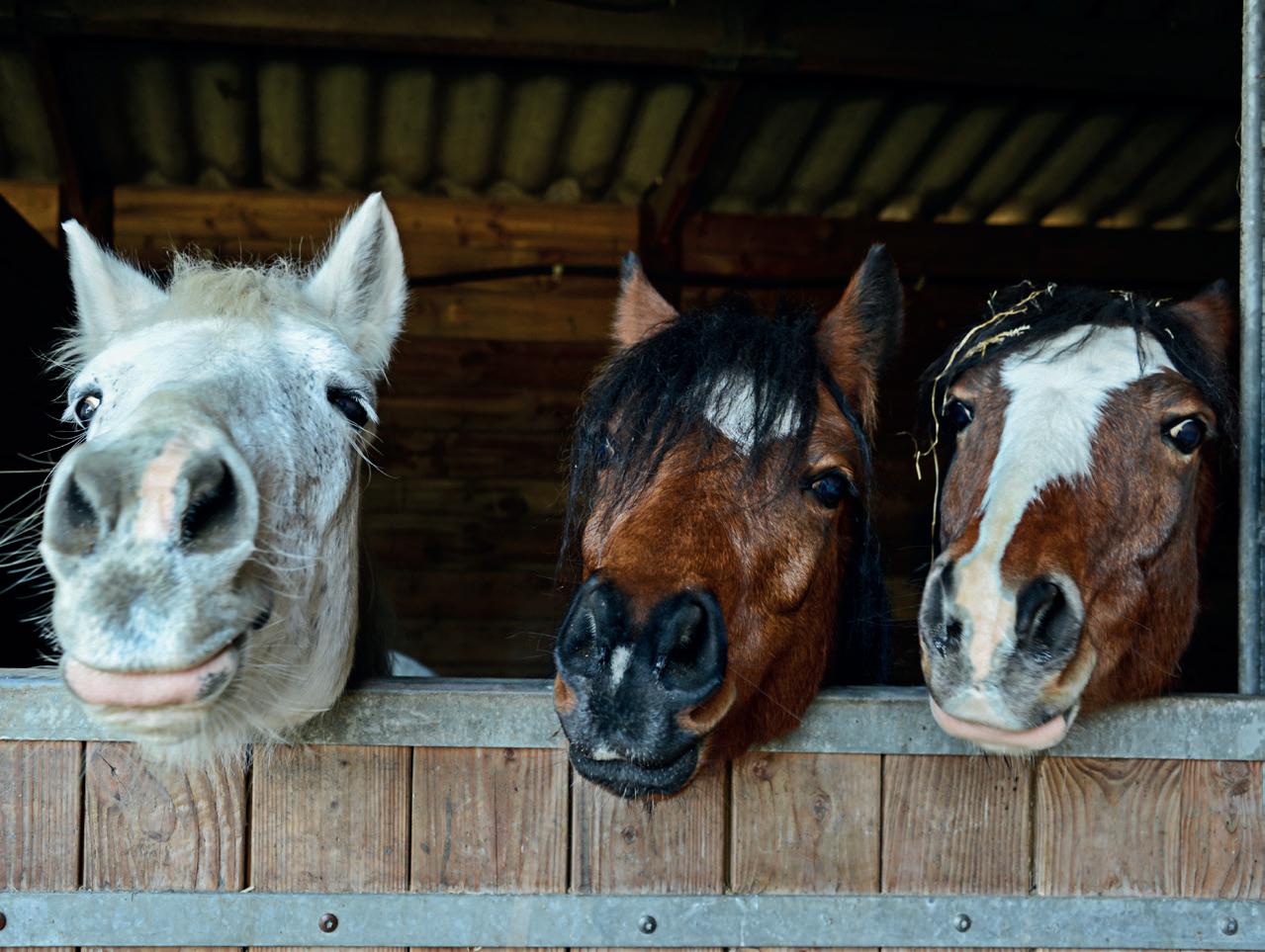





“Complete project solutions by British craftsmen”

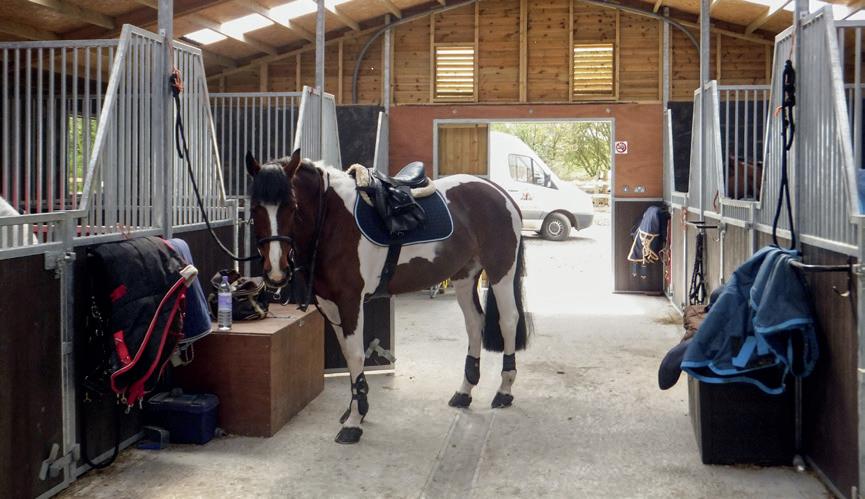
As well as our robust and beautifully designed ranges we also provide a design through to completion service. From the initial design right through to completion we will deliver you a custom crafted and tailored building that totally fulfills your needs.
Whether you need one stable or a complex, the wide range of options within our Intro, Ideal and Elite ranges is sure to meet your requirements. When you purchase any of our fine range of quality buildings we want you to feel proud you have selected a Jon William Stables product.
We do this by creating equestrian products that have been built by craftsmen. We strive to build the best possible product we can, so we are confident you will be proud to own it. We firmly believe our business cornerstones drive us to perfect every Jon William Stables product.
quality equestrian buildings built by British craftsmen
We want you to be proud of your purchase. We are proud to create it for you. Call us now and select which product is perfect for you and your horse.
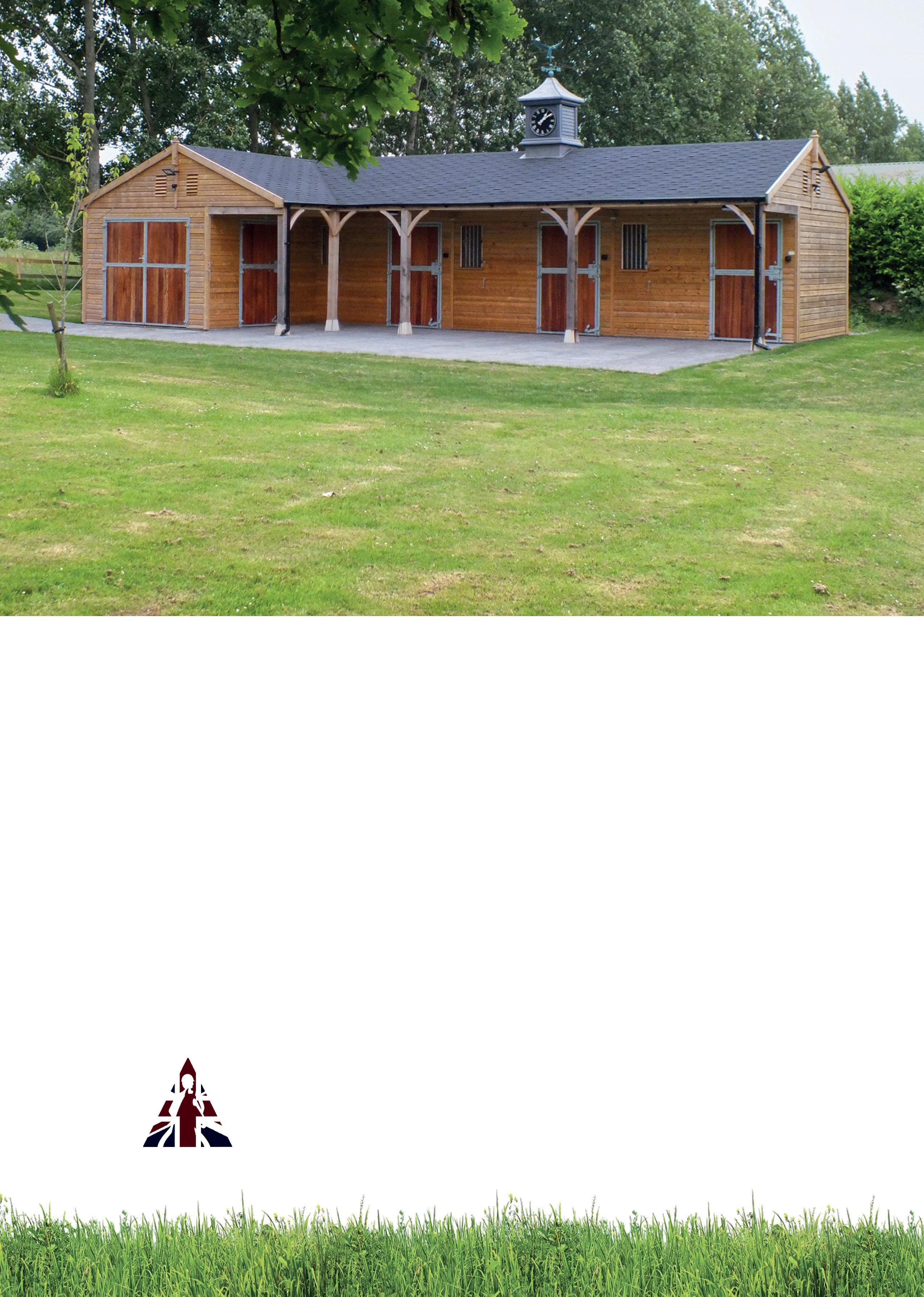


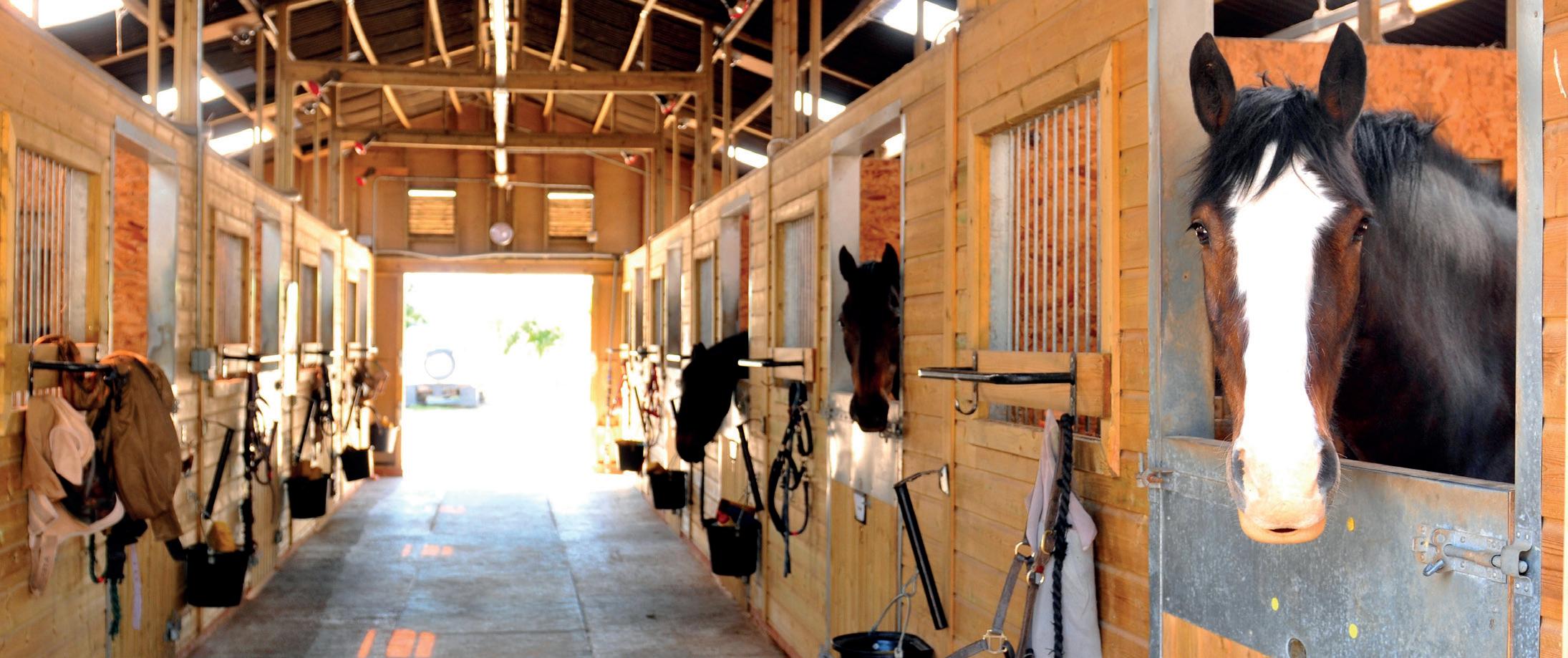
making them a popular choice for seasonal use.
Higher quality shelters are often made with galvanised steel sledges for added durability.

One key consideration for mobile shelters is placement. Position your shelter in a well- drained area, ideally on higher ground, to avoid flooding during heavy rains. Also, consider the direction of prevailing winds and aim to provide a windbreak by positioning the shelter in a way that shields horses from the brunt of the weather. Temporary anchoring of the structure properly is essential to prevent it from being damaged or blown away in strong winds.
Permanent stables or barns are, of course, a larger investment but offer a more stable, long-term solution. These structures are often designed to offer multiple stables, storage areas, and other amenities like tack rooms, wash bays, and feed storage. In designing a permanent shelter, ventilation should be a top priority. Horses need a steady flow of fresh air to prevent respiratory issues, but drafts should be avoided. Well- designed stables feature windows, vents, or doors that allow air to circulate without exposing horses directly to wind or rain. Timber stables have great insulating properties, keeping horses warmer in the winter and cooler in the summer.
Another important factor is the size and layout of the shelter. Each horse should have its own space, with ample room to move, lie down, and get up without hitting walls or barriers. The recommended size


for an average horse’s stall is 12 feet by 12 feet, but larger breeds may need more space. Flooring should be sturdy, non-slip, and easy to clean, with good drainage to keep the area dry and reduce the risk of slipping or the development of conditions like thrush.
When it comes to building or upgrading a shelter for your horses, planning is essential. Start by evaluating the specific needs of your animals. Are they elderly or prone to health issues? Do you have pregnant mares, foals, or performance horses that may need more attention during the colder months? Every horse is different, and their shelter should reflect their individual needs.
Next, consider the climate in your area. If you experience heavy snowfalls, a structure with a strong, sloped roof will help to prevent snow from accumulating and collapsing the shelter. In rainy climates, gutters and proper drainage systems are crucial to keep water from pooling around the shelter’s foundation.
It’s also important to think about access. During winter, frozen ground and muddy fields can make it diffcult to bring hay, feed, and bedding to your horses. Ensure that your shelter has easy access to these essential supplies. Planning an effcient feeding and watering system will save time and effort while ensuring that your horses always have access to freshwater, even in freezing conditions.
Beyond the physical structure, there are a few additional considerations to ensure your horse’s shelter is both safe
WHATEVER YOUR STABLING REQUIREMENT, SCOTTS HAS THE SOLUTION.
Established in 1920, Scotts of Thrapston is a leading manufacturer and supplier of desirable equestrian buildings and bespoke timber stables, with an unrivalled reputation for design expertise, quality and service.
Scotts specialises in offering clients a comprehensive service from groundworks and arena construction through to design, manufacture and build, providing the complete customer journey from concept to completion. Every equestrian building is individually designed and represents equine living at its best.
To find out more, please contact the sales team on 01832 732366 or equestrian@scottsofthrapston.co.uk


and comfortable. Regular maintenance is key to avoiding issues like leaks, broken boards, or sharp edges that could injure your horse. A well- maintained shelter is not only safer but more comfortable for your horse, providing peace of mind during the winter months.
It’s also important to think about bedding. Horses typically generate heat through digestion and movement, but providing ample, dry bedding can help insulate them from the cold ground and provide








a comfortable resting space.
Straw, shavings, or rubber mats are all good options, depending on your horse’s preferences and any potential allergies. Finally, consider adding extra layers of protection during severe weather.
Waterproof
turnout blankets, for example, can help keep horses dry when they are outside of their shelter, while thermal blankets can add an extra layer of warmth.
As winter approaches, now is the time to prepare your horse’s shelter for the cold, wet months ahead. Whether you opt for a mobile or permanent shelter, the goal is the same: to provide a safe, dry, and comfortable environment where your horse can rest and recover from the elements. By planning ahead and considering the specific needs of your horses, you can ensure they stay healthy, happy, and wellprotected throughout the winter season. After all, every horse deserves a place to take shelter.






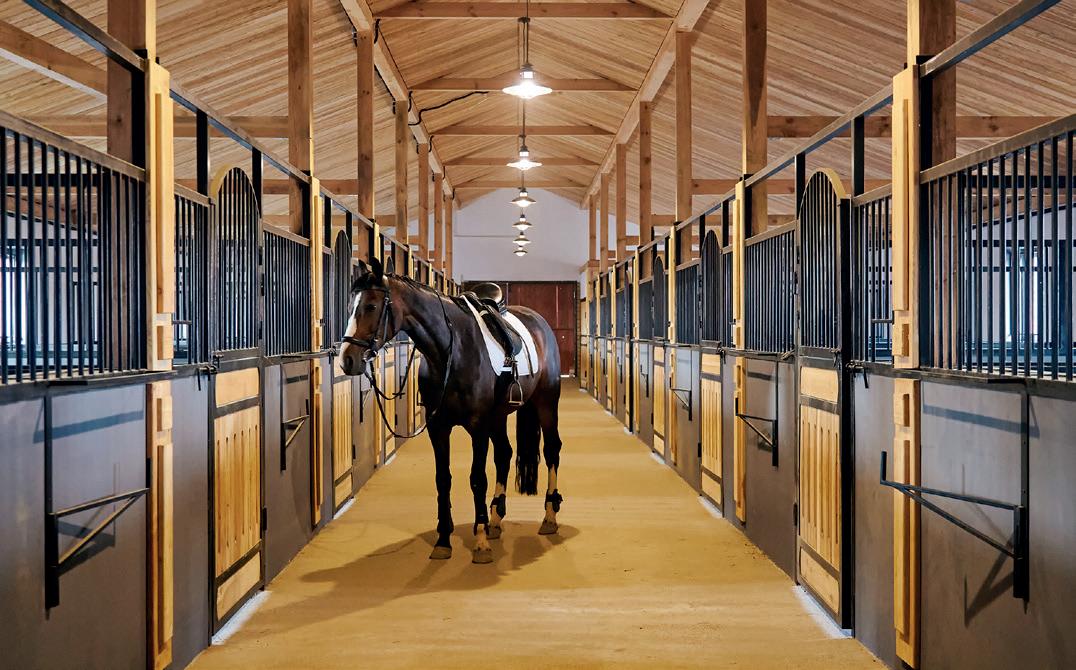




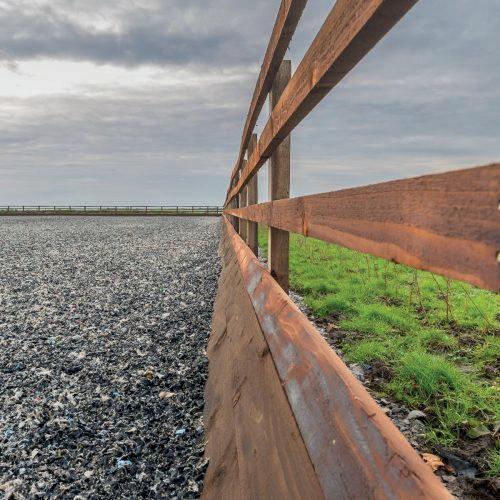


This is probably our most versatile system, typically timber frame construction ideal for 2 storey houses, but also makes wonderful mobile homes.
Outside cladding can be half round log 60mm, weatherboard, shiplap, or rendered, built on 140mm framework filled with insulation and vapour barriers and a choice of internal linings, they can be lined with plasterboard, t&g boarding, half round log, or a mixture of all three to create different effects internally. Again vaulted or flat ceilings, these have double or triple glazing, and are fully insulated throughout, as with all our cabins built to your design.
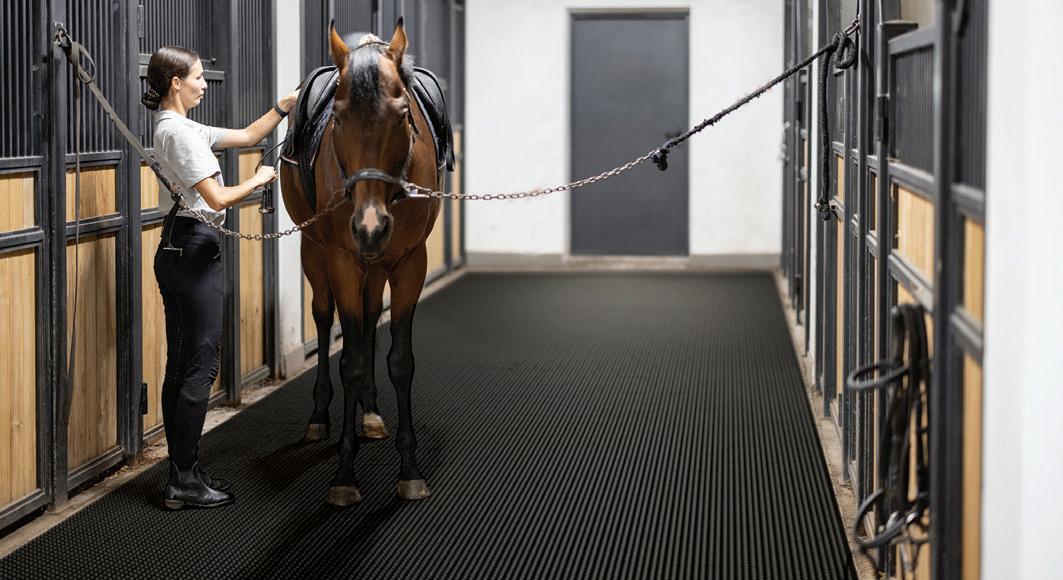
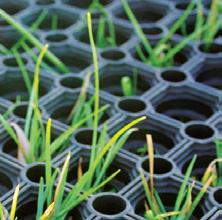

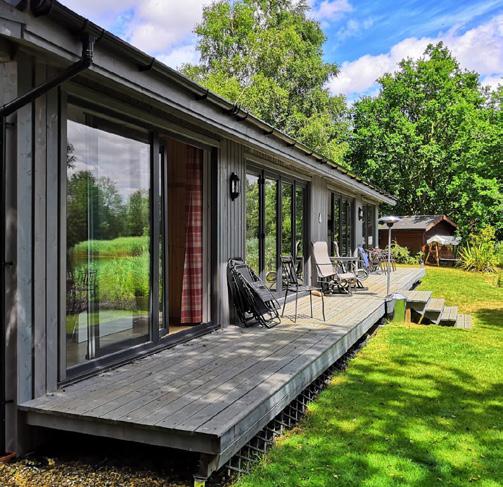
• Finance options • Planning permission advice • Timber Built Garages • Log Cabins • Flood Proof Cabins
These are cabins, built using hand crafted logs 220mm x internal walls where practical Or studwork and space in ke hall ways insulated floors and roofs again fully double glazed some ongoing maintenance I s normal with these. Visually stunning to calculate a



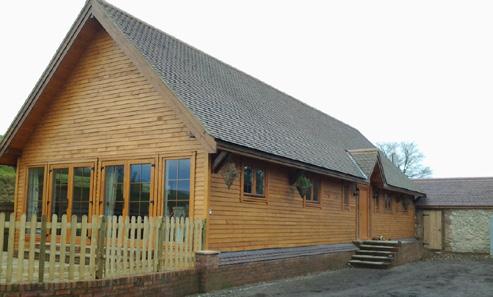


Thanks to our stable mats, you can provide your horse with the flooring that healthy horses need. High quality stable mats for horse husbandry
PERFECT FOR:





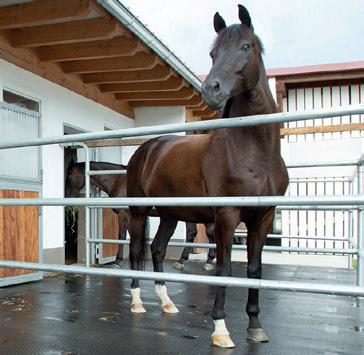

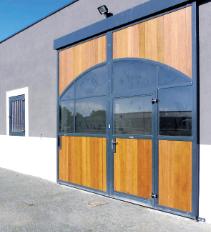


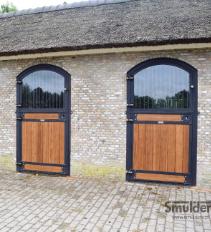

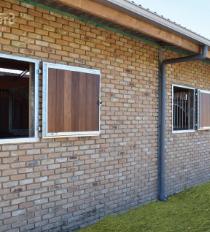





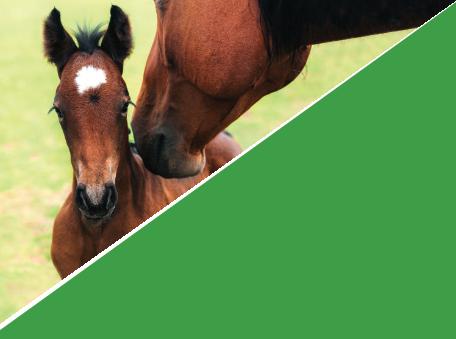






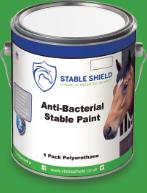


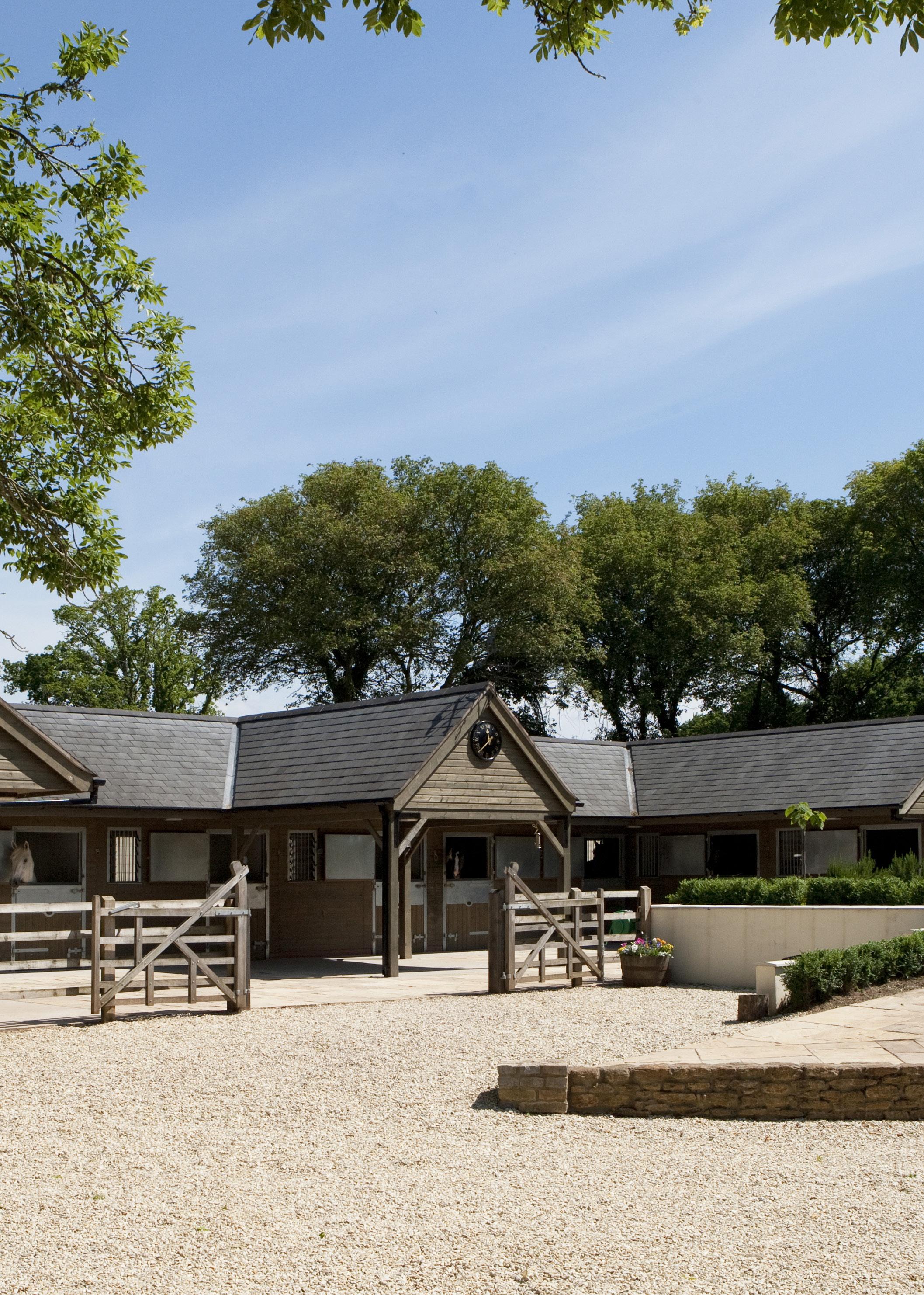
Scan the QR code to view our equestrian range.


We stock 100% rubber stable mats
Eva mats for protection on walls
Anti-bacterial stable paint
Rubber tiles and pavers for walkways
Heavy duty Diamond mats for washbays

By our experienced & professionally trained in house fitting team.
The original developers of the fully bonded and sealed stable system. Designed over 20 years ago using specially developed adhesives and sealants for the ultimate biosecure environment.

We are one of the UK’s largest horsebox manufacturers, building quality horseboxes for over 40 years
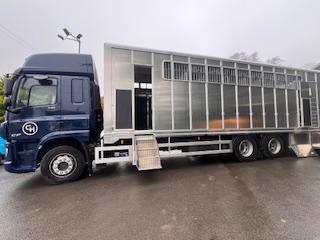


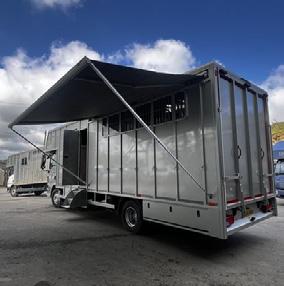
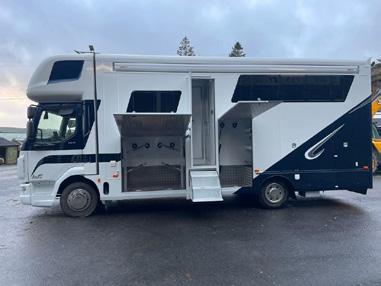



Do you know your payload before you drive to an event?

It is very easy to overload a 3500kg horsebox, and even a 7500kg one, as most people don’t take into account passengers, tack, water, hay, and these add to the payload considerably.
For example, an empty 3500kg horsebox normally weighs about 2500kg, leaving 1000kg for the driver and passenger, horse, tack, etc. Many of these horseboxes are stalled for two horses, and that can be a big problem. If you are overloaded and have an accident, your insurance will be invalidated and you could be facing a number of offences, both overloading and licence ones. In recent years, the DVSA has found that more than 80% of LCV’s stopped on the roadside on suspicion of overloading, are in fact overweight.
You have a limited payload capacity and wish to carry an extra horse or equipment. You don’t want to buy a newer, bigger horsebox so you can save money by converting your current vehicle. You want to avoid a large fine by DVSA.
The first thing is to weigh your horsebox FULLY LOADED with your horse(s), tack, water, food, and passengers so that you know where you stand. Remember to weigh each axle individually as you may find that whilst you may be under the Gross Vehicle Weight, you have actually overloaded the rear axle. This is very common in lightweight horseboxes. Fortunately SvTech can help, and is keen to promote its uprating service for lightweight horseboxes (3500kg), whereby the horsebox can gain an extra 200-300kg in payload. This provides vital payload capability when carrying an extra horse and/ or tack and offers peace of mind for the owner.

We can start the ball rolling by asking customers to fill in an enquiry form and send it back with photos of the Horsebox plate, the weight ticket and Registration Document.
SvTech has carried out extensive work and testing on lightweight models and has covered uprates for most lightweight vehicles. It is worth noting that some uprates require modifications or changes to the vehicle’s braking, tyres and/or suspension, for which SvTech provides a simple purpose-built suspension assister kit. This will take between 1-2 hours for you to fit. Your horsebox will then go for a formal inspection to bring it into the ‘Goods’ category, and, depending on the vehicle’s age, may also require fitment of a speed limiter, for which there are one or two options.
Most importantly, vehicles registered after May 2002 must be fitted with manufacturer’s ABS, if going above 3500kg.












Fast acting formula for fast results

For use on all mammals, birds & reptiles
100% safe, non-toxic, no-sting
Quickly relieves, soothes & calms
Staight to use wound flush for first aid care
Safe cleansing for in ears and eyes:
Thrush/flushing abscess holes
Mud fever, cracked heels, kicks & bites & rain scald
Reliable germ preventative pre & post-surgery
Maintains healthy itch free skin
Competition Safe









At Gawsworth Track Livery we have come to rely on Leucillin as an indispensable component of our daily routine, whether it’s for injuries, minor wounds or combating thrush, Leucillin stands out as the premier solution in your arsenal. Its effectiveness knows no bounds, making it an essential tool in maintaining the health and well-being of all our horses.


As the colder months approach, horse and dog owners must prepare for the onset of common bacterial skin concerns. Mud, damp conditions, and reduced sunlight can compromise the skin’s natural defenses, leading to issues such as mud fever in horses and dermatitis in dogs. An effective solution to help tackle these winter skin problems is Leucillin Antiseptic Skincare.
Leucillin is a non-toxic, anti-bacterial spray that works to kill 99.99999% of germs without causing irritation. It’s gentle but powerful formula is effective against bacteria, fungi, and viruses, making it a reliable solution for a variety of skincare concerns.
For Horses: Mud Fever and Rain Scald Mud fever is a prevalent issue during the winter, especially for horses exposed to wet and muddy conditions. Caused by bacteria such as Dermatophilus congolensis, it results in painful sores, swelling, and scabbing, most often on the legs. Leucillin’s antimicrobial action helps to soothe and calm these wounds by killing the harmful bacteria and keeping the affected area clean without stinging or discomfort. Additionally, Leucillin can be used to apply to rain scald, a similar bacterial skin problems affecting the horse’s back and sides due to persistent dampness.
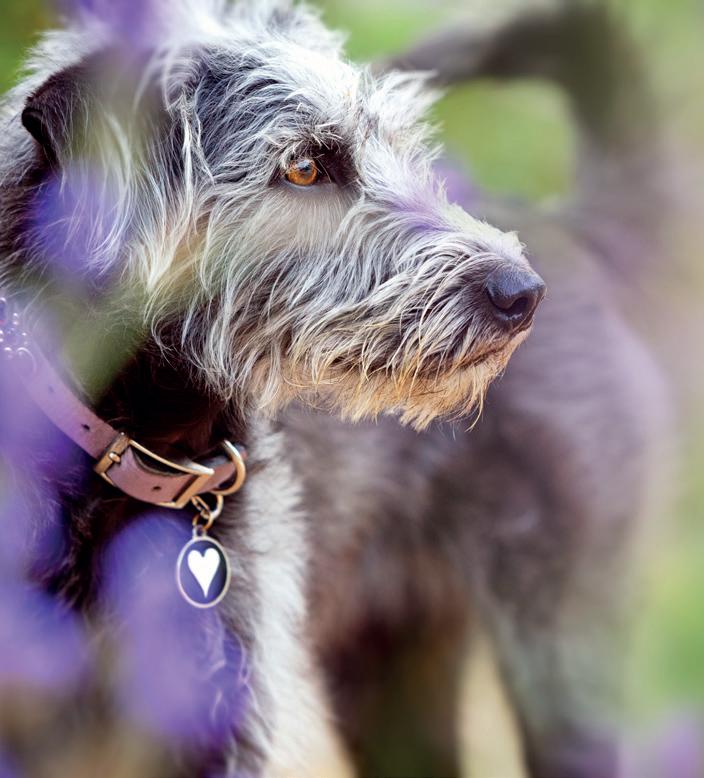

For thrush hoof care: Pick out the hooves, brush and then spray Leucillin onto the sole of the hoof paying attention to make sure the liquid runs into the crevices. It is an excellent choice to flush abscess holes and deep central sulcus cavities. Recommended application two/three times per day.
• As a preventative: Add to your hoof care routine and spray after they are picked out between daily and once a week depending on your horse, husbandry and environment.
• For use with hoof boots: Leucillin is an excellent product to spray onto the sole of the hoof before putting on boots as it will not leave any residue and is not slippery on the boot when wet. Leucillin works on contact so exercise or turnout can resume.
• Hoof Putties & Clays: Leucillin needs to be in contact with the pathogens in order to work. For those who need to pack a hoof; use Leucillin, let the excess liquid run off then pack straight away before putting the hoof on the ground. For active thrush continue to flush area with Leucillin before applying anything that could be considered a barrier.
Winter weather doesn’t just affect horses—dogs, especially those with long coats or skin folds, are prone to developing bacterial dermatitis. Moisture trapped in their fur creates an ideal breeding ground for bacteria, leading to inflamed, irritated skin. Leucillin’s broad-spectrum antimicrobial formula can be sprayed directly onto the affected areas, promoting fast recovery time while keeping the germs at bay.
Leucillin stands out not only for its effectiveness but also for its ease of use. Simply spray directly onto the affected area and let the solution dry naturally. It can be safely applied multiple times a day without the risk of overuse, and its non-toxic, hypoallergenic properties ensure it’s safe for regular application, even on sensitive skin.
As the colder months approach, make Leucillin a staple in your winter grooming routine. This versatile antiseptic solution ensures that your horses and dogs remain healthy, protected, and comfortable throughout the season.



The way a horse moves—its locomotion—is a complex process influenced by a variety of factors, ranging from its anatomical structure to the environment it moves in. Among these factors, the type of surface a horse works on plays a pivotal role. In this article, we’ll explore how different surfaces affect a horse’s movement, examine the biomechanical effects of surface types, and discuss the potential for injuries related to improper surfaces. By understanding these elements, we can better appreciate the importance of choosing the right surface for equine activities and how it contributes to the overall welfare of the horse.
THE MECHANICS OF EQUINE LOCOMOTION



When a horse moves, its limbs engage in a cyclical pattern that includes two main phases: the stance phase and the swing phase. The stance phase involves the hoof making contact with the ground, absorbing the initial impact (damping), bearing the horse’s weight, and finally pushing off to propel the horse forward. Following the stance phase is the swing phase, where the leg is lifted off the ground, moves forward, and prepares for the next contact. This cycle repeats with each stride, and its efficiency is influenced by several factors, including the horse’s breed, hoof shape, overall morphology, and the type of surface it moves on.
SURFACE COMPOSITION AND ITS ROLE IN MOVEMENT
To analyse how different surfaces affect a horse's movement, it's essential to first understand the components of these surfaces. Equestrian surfaces, such as those found in tracks and arenas, are typically made up of two primary layers: the work layer and the foundation layer.
1. The Work Layer: This is the top layer, where the horse’s hooves make direct contact. Its primary function is to offer freedom of movement due to its flexibility. This layer is critical for absorbing the shock of the horse’s footfall and providing the necessary grip for propulsion.
2. The Foundation Layer: Situated beneath the work layer, the foundation layer offers structural support and drainage. It ensures that the work layer remains stable and provides a consistent surface for the horse to move on.
BIOMECHANICAL EFFECTS OF SURFACE TYPES ON EQUINE LOCOMOTION
Whether a horse is sound (healthy) or

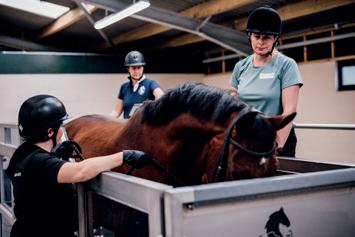

suffering from lameness, the type of ground it moves on can significantly affect its locomotion. Understanding these effects, especially in a sound horse, provides valuable insights into how different surfaces influence movement and overall performance.
Biomechanical Effects During the Stance Phase
The stance phase is critical in understanding how surfaces affect a horse's locomotion. During this phase, the horse’s limb undergoes several stages: impact, braking, intermediate joint extension, maximum vertical weightbearing, propulsion, and heel extension before lift-off. Each of these stages is influenced by the surface, particularly during the impact and propulsion phases.
Impact and Shock Absorption: The initial shock when a horse’s hoof contacts the ground is largely determined by the surface preparation. For instance, harrowing a track can significantly reduce the impact force by smoothing out irregularities and creating a more consistent layer. This is crucial because


the intensity of the impact shock directly relates to the firmness of the surface. On a well-harrowed sand track, the impact shock can be reduced by two to three times compared to a track that has not been prepared.
Surface Thickness and Its Effects:
The thickness of the work layer also plays a vital role in shock absorption. Studies have shown that when comparing different work layer thicknesses, the impact shock increases with layers ranging from 7 cm to 13 cm. However, beyond a thickness of 13 cm, there is no significant reduction in impact shock, indicating that there is an optimal thickness beyond which additional layering does not contribute to further shock absorption. This insight is crucial for the design and maintenance of equestrian surfaces, particularly in high-impact disciplines like racing and show jumping.
Hard vs. Soft Surfaces: Differential Effects on Movement
The debate between hard and soft surfaces often centres around the specific needs of the horse, particularly its tendons and joints. Horses with sensitive tendons



Engineering’s standard model for all fibre/sand or fibre/wax surfaces.
Ideal for smaller yards or private owners.
Each leveller comes with a detachable side grader blade to pull in the edges of built-up surface from the outer kickboards - no more back-breaking, hand digging work! These models can be supplied with a fork hitch and pin suitable for sit-on garden mowers.
Visit mayfieldengineering.wordpress.com or call Mayfield Engineering on 01225 891014.
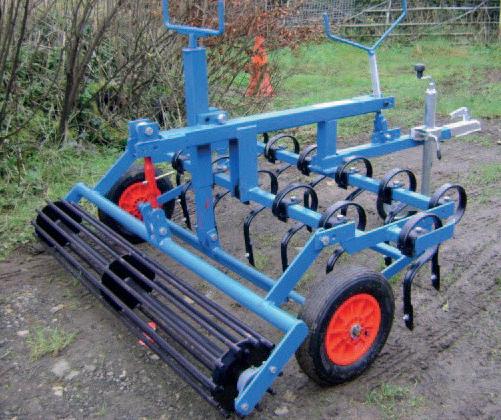





may prefer harder surfaces, as these can facilitate easier locomotion by providing a firmer grip and reducing the strain on the tendons. On the other hand, horses with joint issues might benefit more from softer surfaces, which cushion the joints and reduce the impact on these sensitive areas.
Surface type doesn’t just affect how a horse moves; it also plays a crucial role in the development of locomotor lesions, which can lead to lameness. Lameness is often the result of overworking or working on surfaces that are not suited to the horse’s physiology. Understanding the relationship between surface type and injury risk is essential for preventing longterm damage.
1. Effects of Hard Surfaces on Joints and Hooves
Hard surfaces, while beneficial for certain horses, can pose significant risks, particularly to the distal joints and hooves. The increased impact forces on these surfaces can lead to premature wear and tear, resulting in joint disorders that can extend up to the knees and hocks. These conditions are often exacerbated by repetitive motion on hard surfaces, which can tire the joints and lead to chronic conditions.
Circle Work and Joint Stress: One of the ways hard surfaces reveal underlying joint issues is during circle work. When a horse is worked in a circle on a hard surface, the asymmetry in its movement becomes more pronounced, particularly if there is an existing joint lesion. This can be observed as the horse raising its head when bearing weight on a painful limb and lowering it when bearing weight on the sound limb.
2. Effects of Soft Surfaces on Tendons and Ligaments
While soft surfaces generally reduce the risk of joint injury, they can introduce their own set of problems, particularly for the tendons and ligaments. Floors that are too deep, for instance, demand more from the horse’s musculotendinous system. These surfaces return less energy to the limbs upon impact, which means the horse has to exert more effort to maintain movement. This increased tension on the tendons can lead to disorders such as tendonitis or ligament sprains, especially with repeated exercise on deep surfaces.
Balancing Surface Depth: The key to






preventing tendon and ligament injuries on soft surfaces lies in maintaining an appropriate depth. A surface that is too shallow may not provide enough cushioning, leading to increased joint impact, while one that is too deep can overstrain the tendons. Regular maintenance and careful monitoring of surface depth are essential practices to ensure the health of the horse’s locomotor system.
THE SEARCH FOR THE IDEAL
Surface analysis is vital for preventing equine lameness and maintaining longterm horse health. Like human athletes, horses are prone to injuries from repeated exposure to unsuitable surfaces. No single surface is perfect for all horses or disciplines; each type has its strengths for specific activities or rehabilitation. To optimise health and performance, horses should be worked on various surfaces, allowing different parts of their locomotor system to be conditioned and benefiting from each surface's unique qualities. Understanding how surface type affects locomotion is essential for informed decisions that support both performance and welfare.




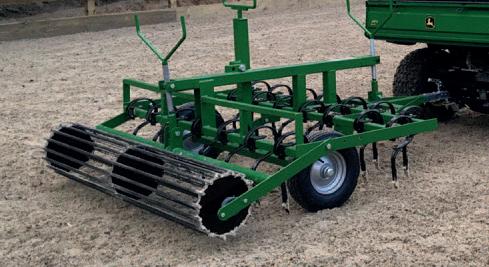
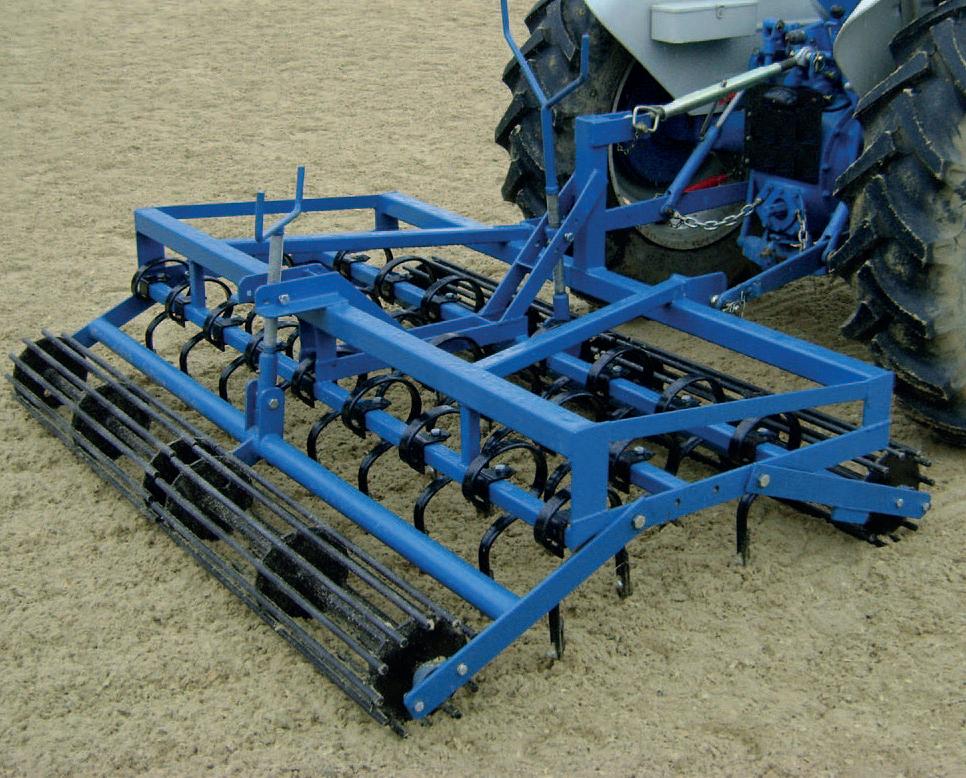

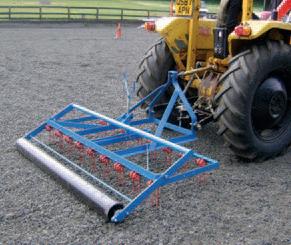

Manufacturing a range of arena levellers for all surfaces
Models also available for Quads, compact and garden tractors
Fully adjustable tines for depth
5ft and 6ft super towing leveller – 3 rows cultivator tines, heavy duty 15 bar crumble roller – Prices from £1750
5ft,6ft and 6ft 6in super leveller towing/tractor mounted. Prices starting at £1730
4ft,5ft and 6ft standard tractor mounted and towing. Prices from £980
5ft towing leveller with red transport wheels Prices starting at £1070
All prices exc. Delivery


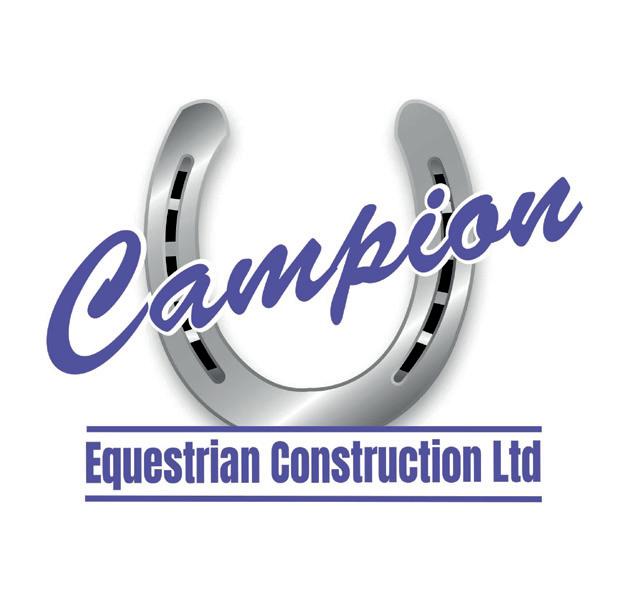












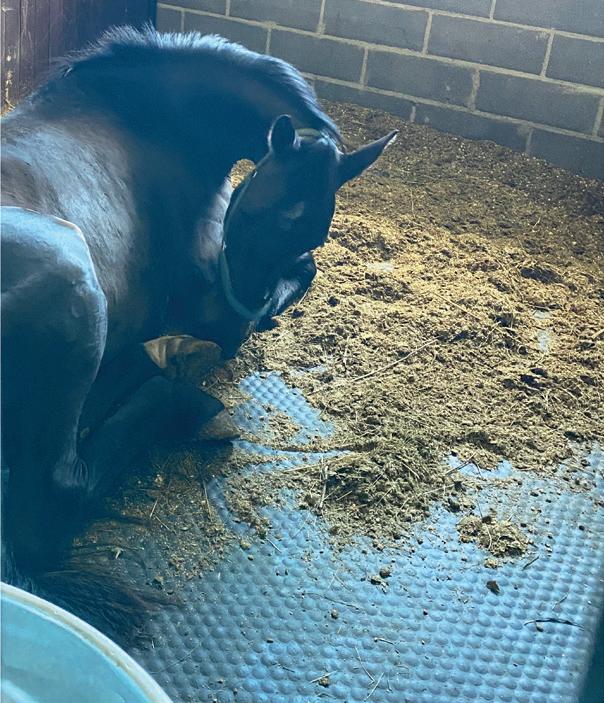










As businesses across the industry compete for their share of the market, it is more important than ever to understand your customer base, existing customers verses new customer, who are they? Where can you attract them, how can you engage with them? How can you educate them on the benefit of your product or service?
A business owner, business manager or team members time is generally best spent selling their product or service, time spent wrapped up in marketing is often deemed non-efficient and not cost effective, after all we would all rather be putting money through the till instead of taking it out! This is why investing in an industry specialist who understands your marketplace is money well spent, generating you a consistent source of lead generation to actively sell your product or service to, giving you a great return on investment in terms of both time and profitability.
Every business should work to a growth strategy, more often than not we hear that customer’s do not need more work, or they cannot facilitate any more jobs or sales. Ask yourself, if your current work dried up, or jobs or orders were cancelled how would this impact your business? What if customers circumstances change outside of your control, who will replace these customers? Its all in a growth strategy.
As a preferred marketing partner to our industry and leader in both the equine and country lifestyle sectors the team of specialists at Your Horse & Country Magazine are perfectly placed to help you market your business, by understanding the needs of your customers and our readers alike, we are able to tailor an effective and response driven bespoke print or digital marketing campaign to ensure you maintain a healthy bottom line.
